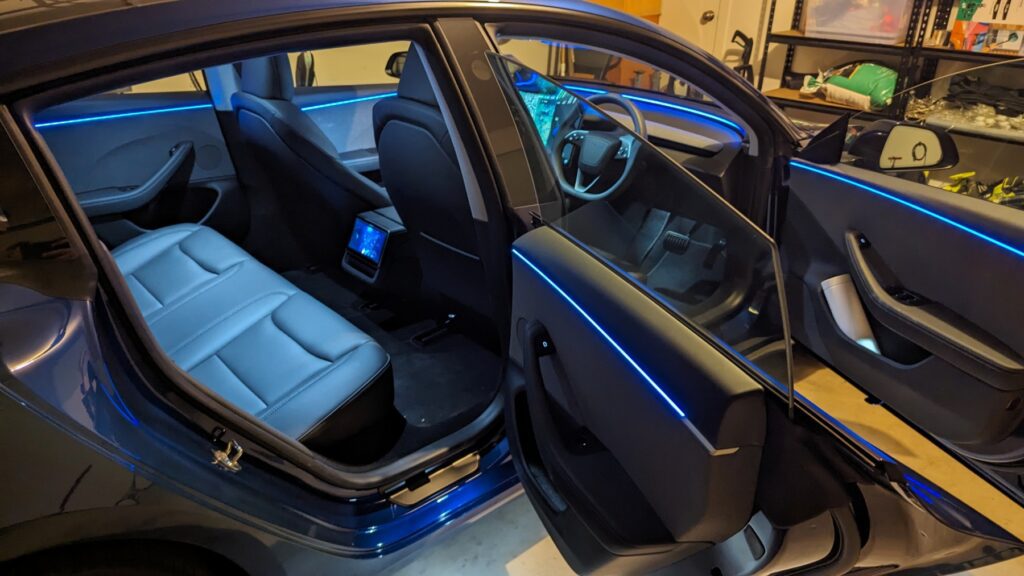This week I’ve had the opportunity to spend time with the refreshed Tesla Model 3. This post focuses on the insane number of differences between the original Model 3 (2019) and the refreshed Model 3 (2024).
Tesla is famous for implementing changes on the fly in their production lines and while we’ve seen some iteration over the years, it’s worth reflecting on what all those changes add up to, particularly given this year will be 5 years since the Model 3 first launched in Australia.
Exterior changes
Outside the vehicle, there are sweeping differences between the two versions of the Model 3, to the point where almost every panel is different.
Front bar
The updated front bar on the Model 3 now features a flatter, sharper design that’s a cleaner approach to directing the air over the vehicle.
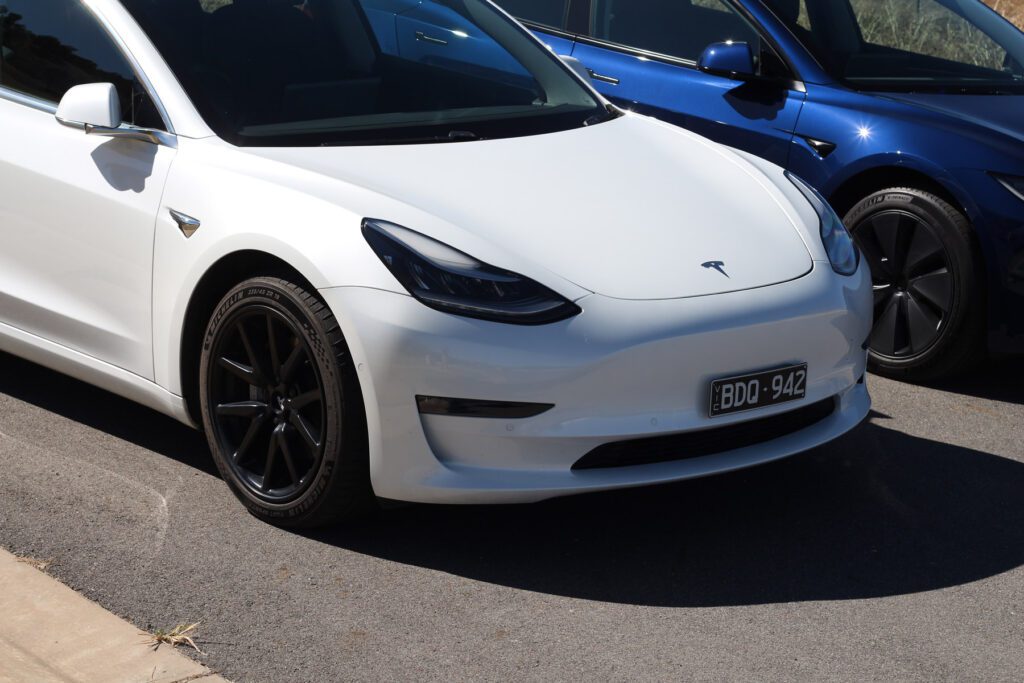
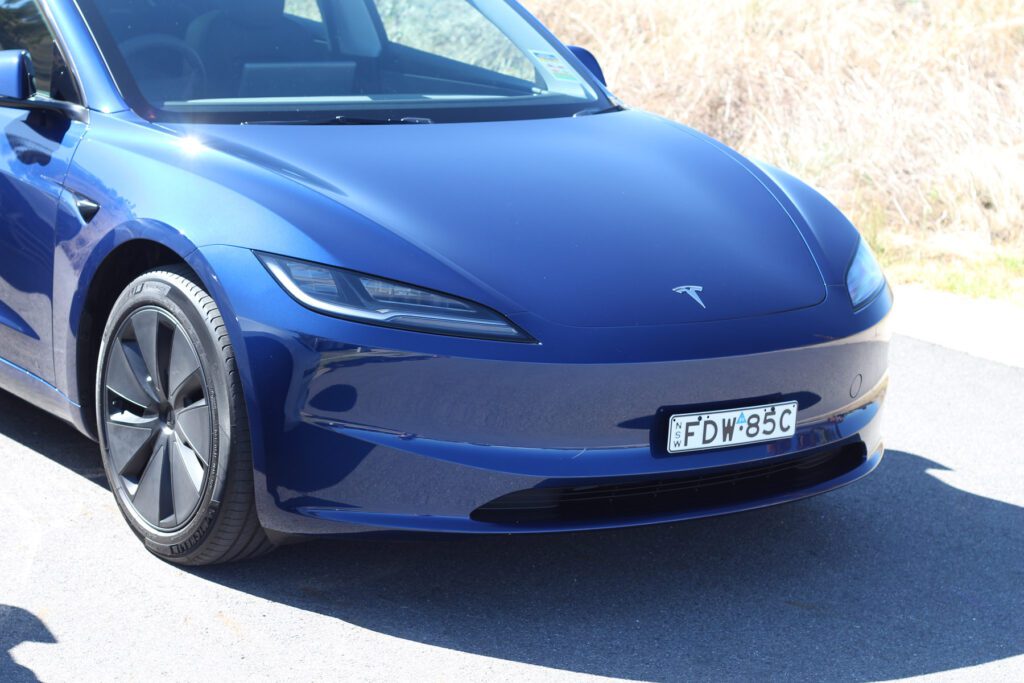

Headlights
It is unclear what the shape of the original Model 3 headlights was, but it is clear the new design is a massive improvement. These new matrix LED headlights can exclude part of the high-beam lightscape to avoid impacting other drivers.
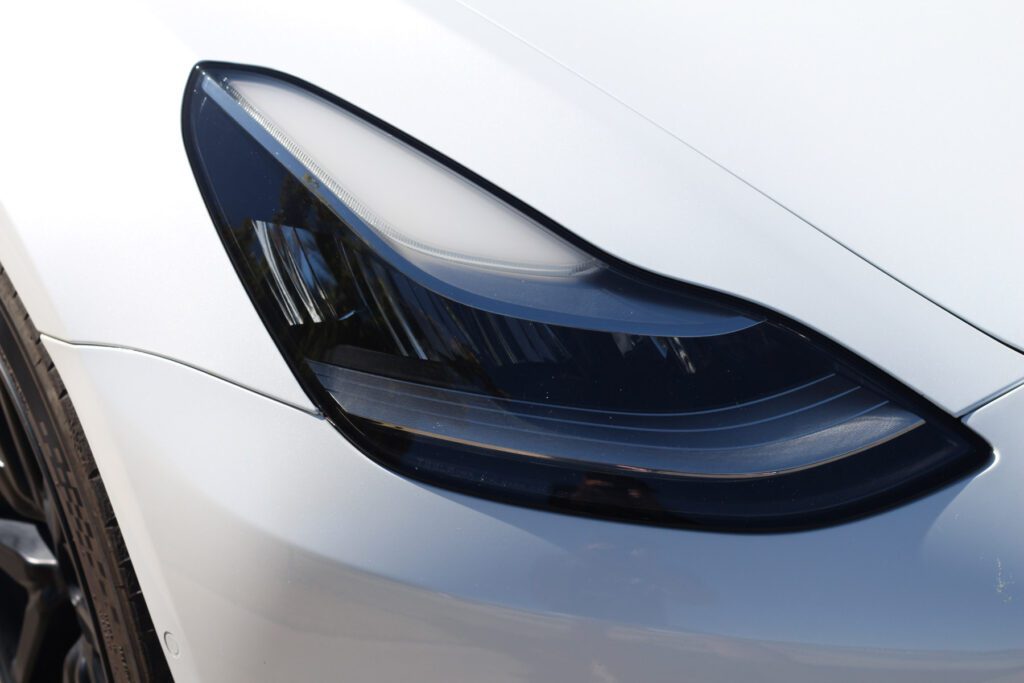

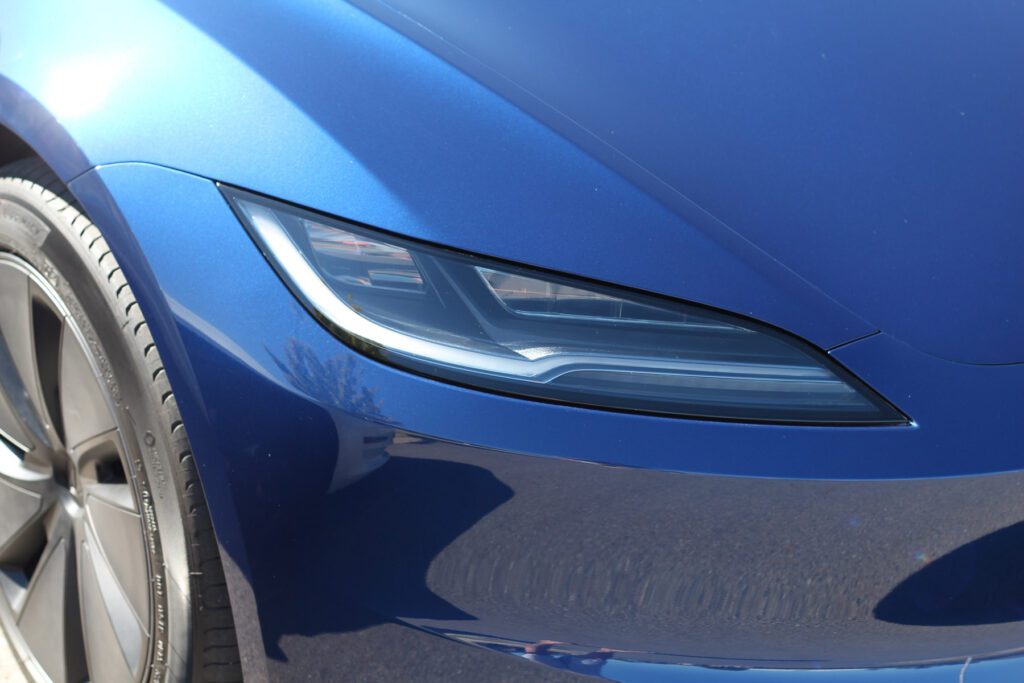

Fog lights
The fog lights are now integrated into the main headlight, which means they are no longer present in the lower half of the front bar. For those who like the look of quad lights at night, you will have to look elsewhere. This again follows Tesla’s approach of minimising the part count on the car.
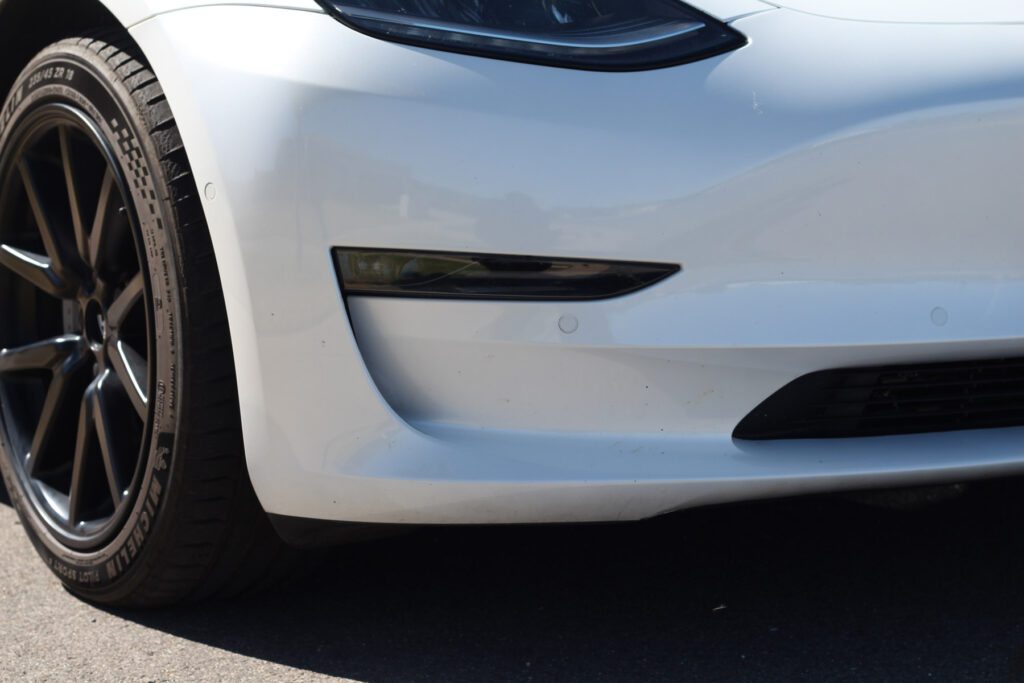

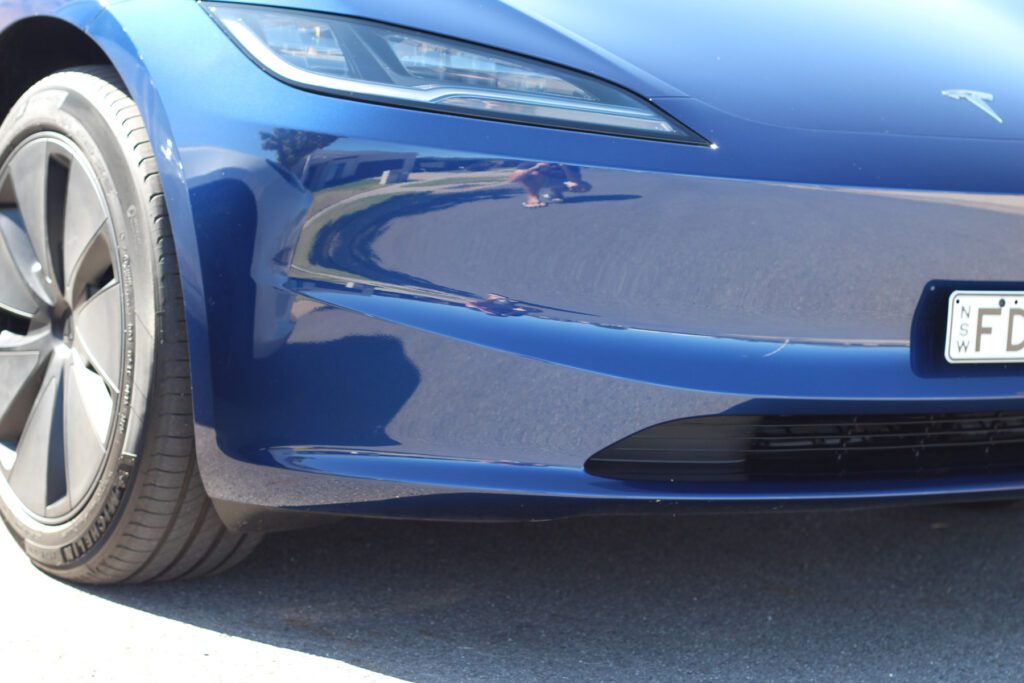

Wheels
The wheels of a Model 3 have always been controversial as Tesla was one of the first to push the aero cap design to improve aerodynamic efficiency. Thankfully the rim underneath is still great and many people, like myself were willing to sacrifice a little range for style.
The aero hubs have been updated as are the rims underneath on the refreshed Model 3. In terms of tyres, you will see a difference here, with my M3P now running Pilot Sport 5s, up from the original Pilot Sport 4 that it came with. The RWD model always came with different tred and now and now ships with Michelin E-Primacy (235/45/18).
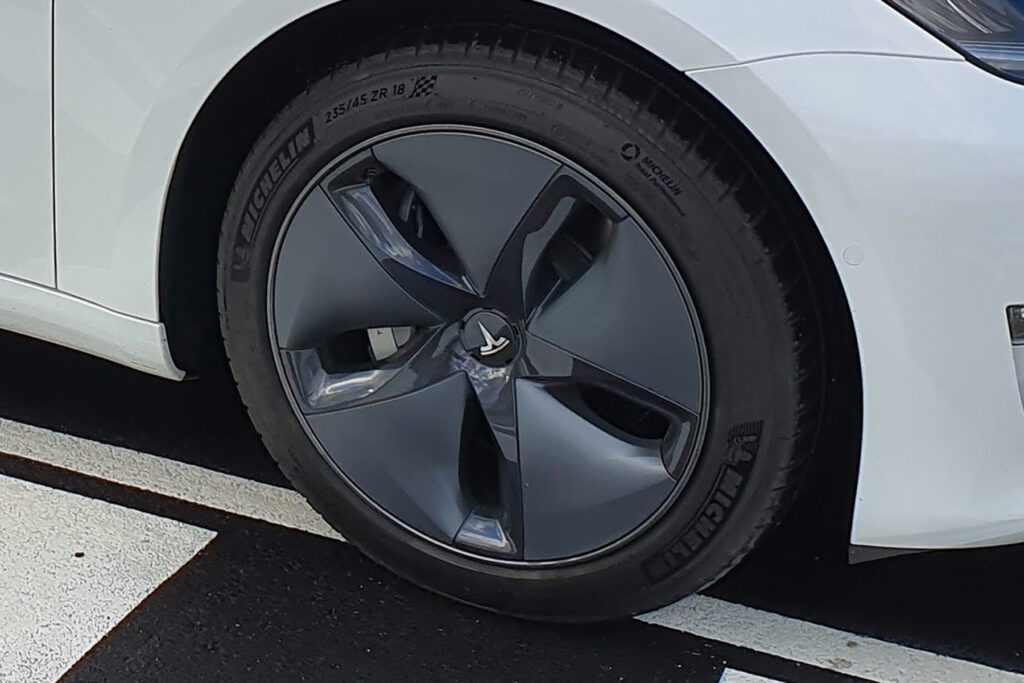

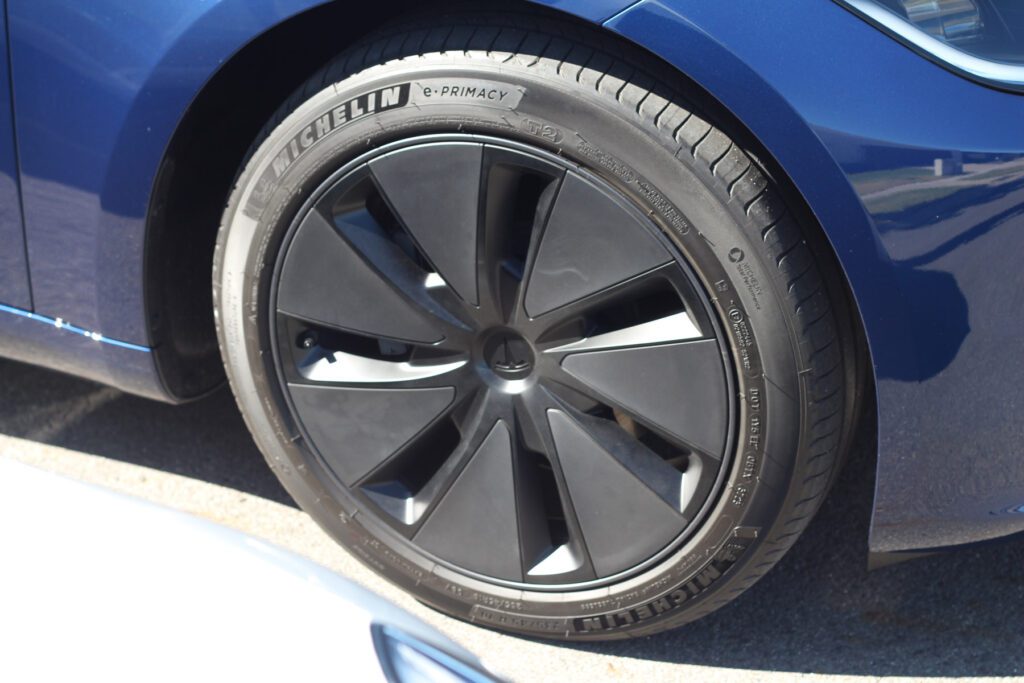

Tail lights
The rear lights are now integrated into the boot lid and feature an updated design.
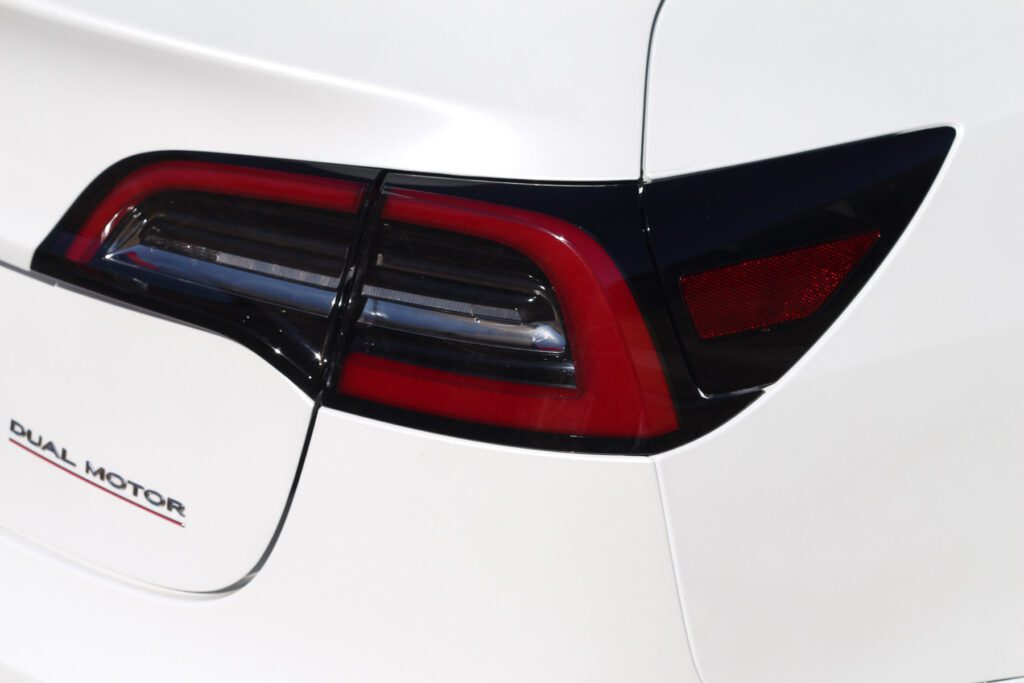

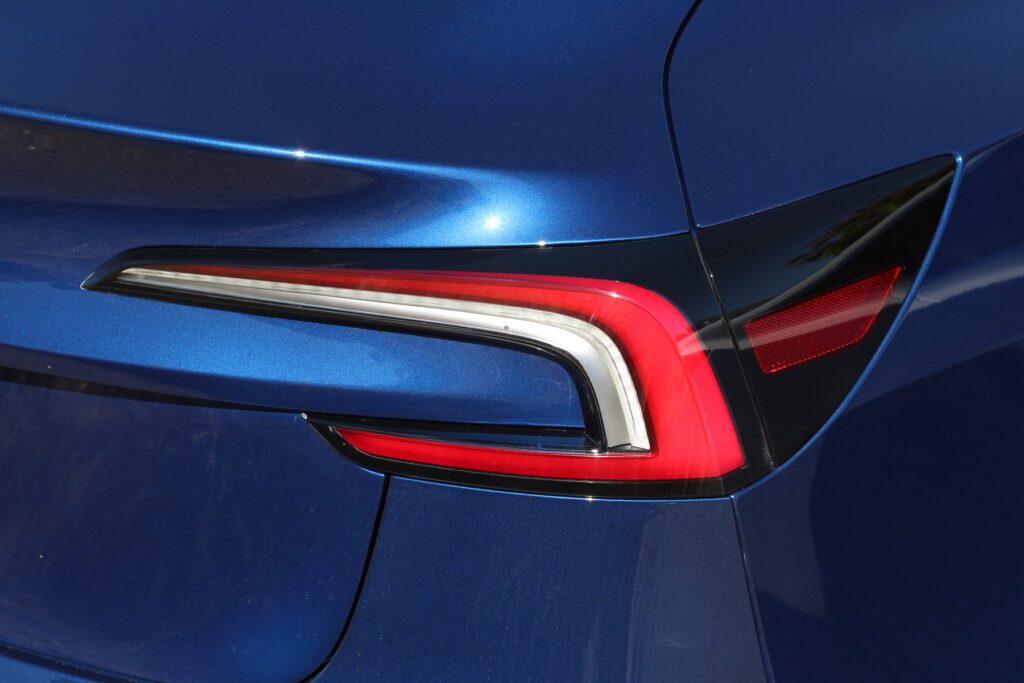

Rear badging
Tesla has now moved to spell out the brand’s name in letters, instead of the single T badge as found on the hood.
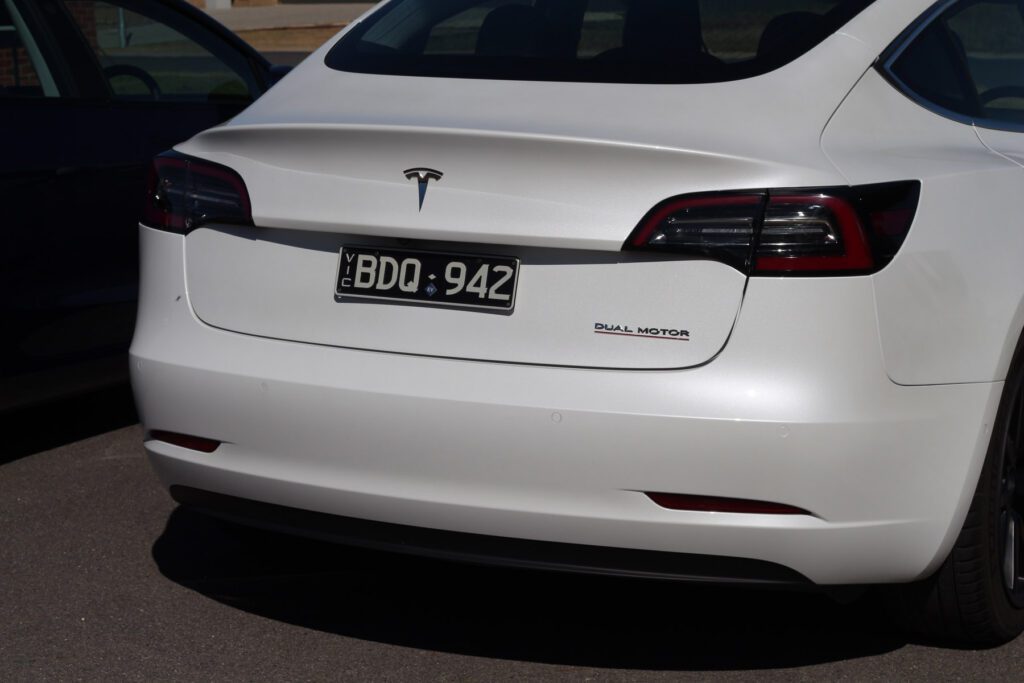

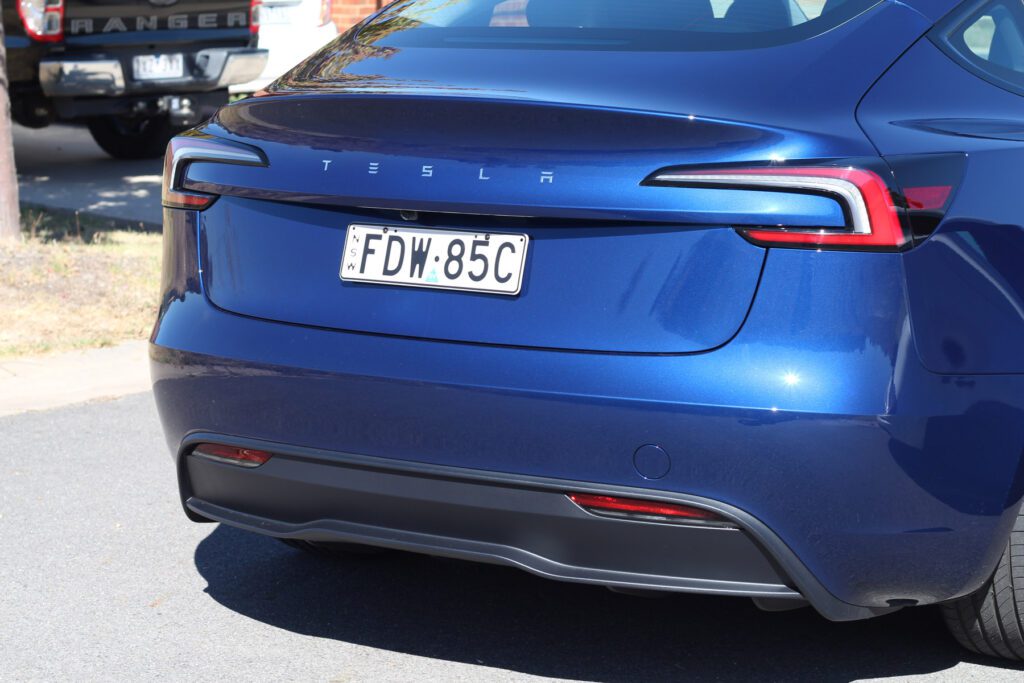

Chrome surrounds for windows
Many early Tesla owners opted to get the Chrome trim wrapped and apparently, Tesla took that to heart, as they moved to black trim instead of the Chrome.
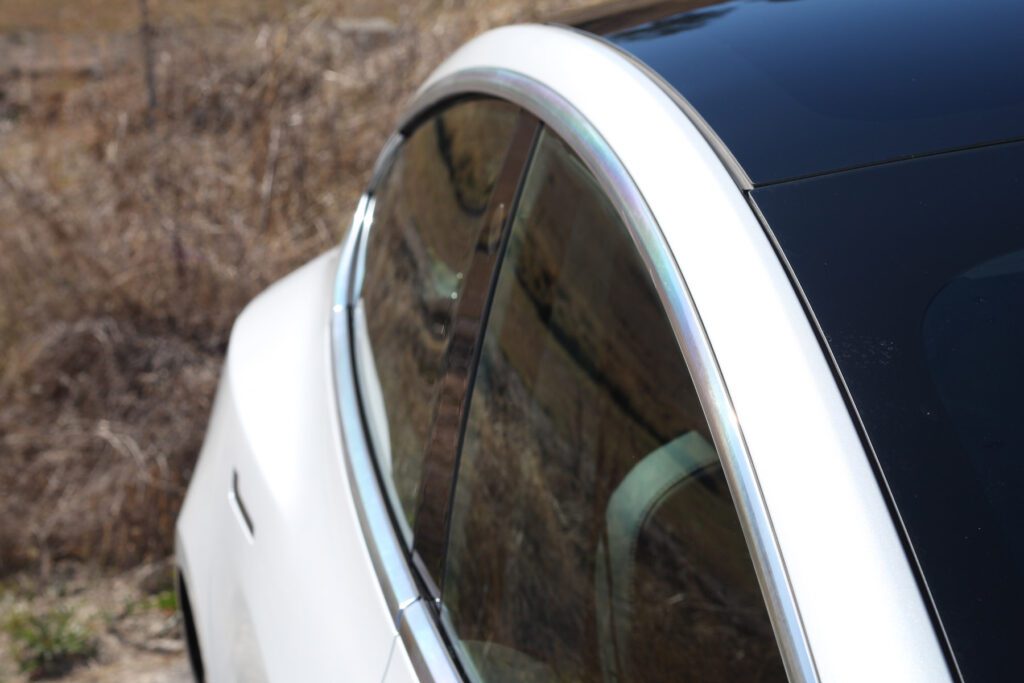

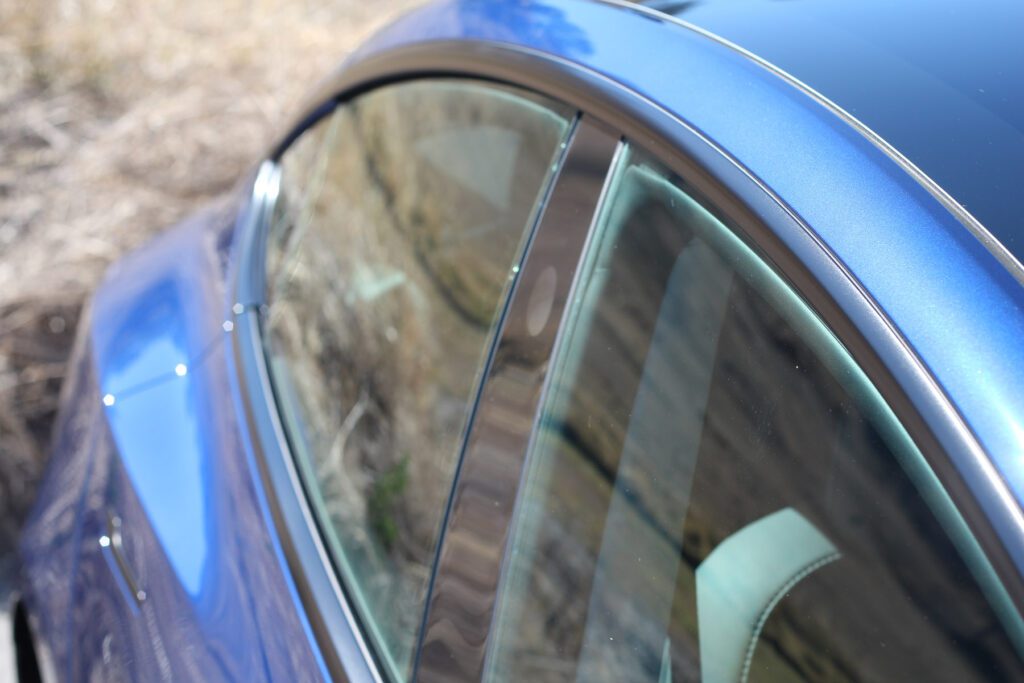

Updated repeaters
The side repeaters which house the indicator LED and side cameras, are now coloured black, after originally being a chrome trim. The cameras are now HW4, rather than HW3, offering a slightly wider field of view, higher resolution and better colour accuracy.
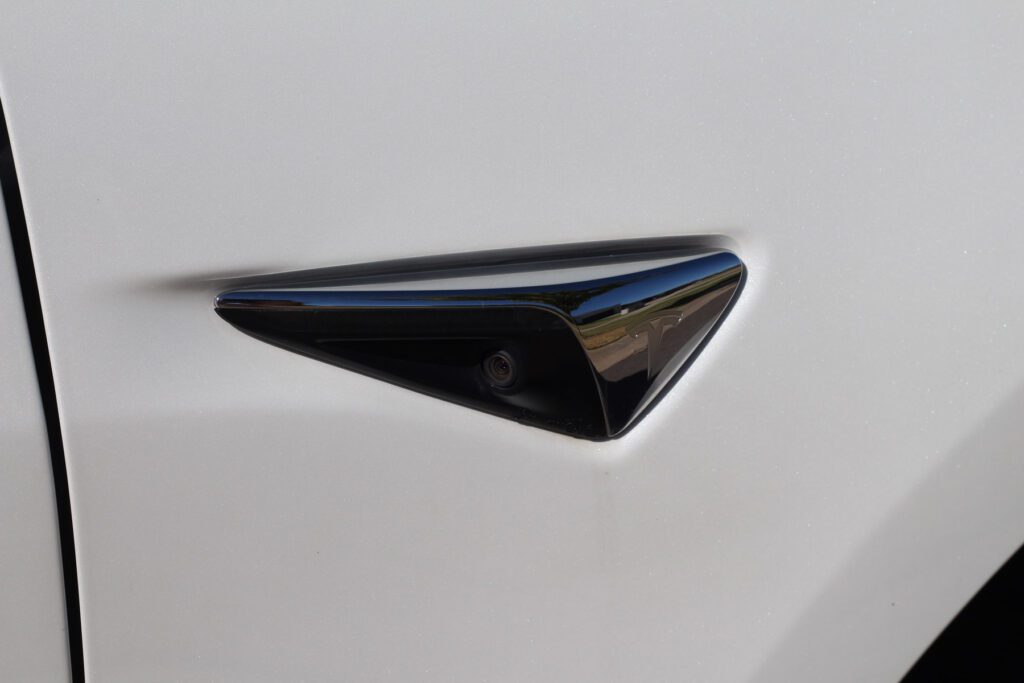

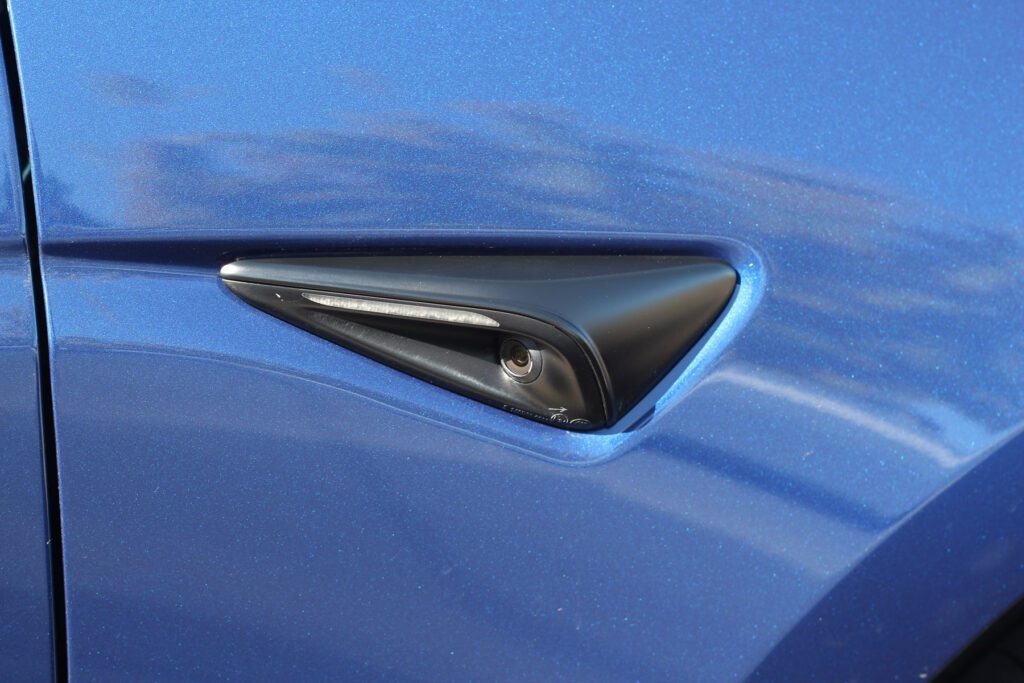

Front-facing camera array in windshield
The front windscreen houses probably the most important aspect of the Autopilot/FSD system, the front-facing wide and narrow cameras. There are upgraded cameras in the new Model 3 and Tesla has taken the chance to rethink the housing and light sensor position.
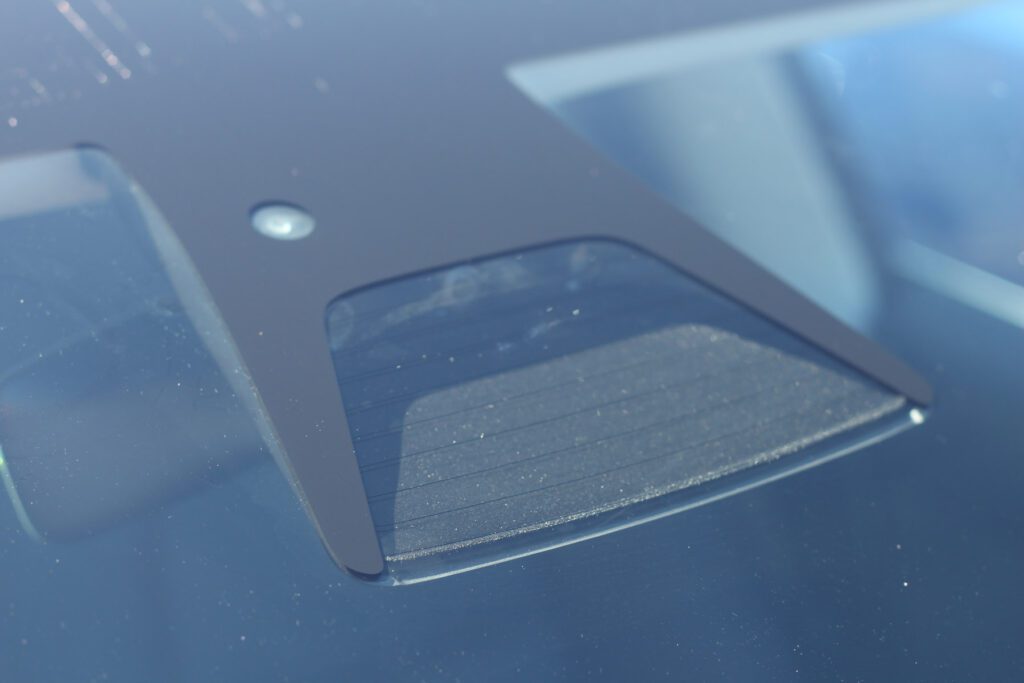

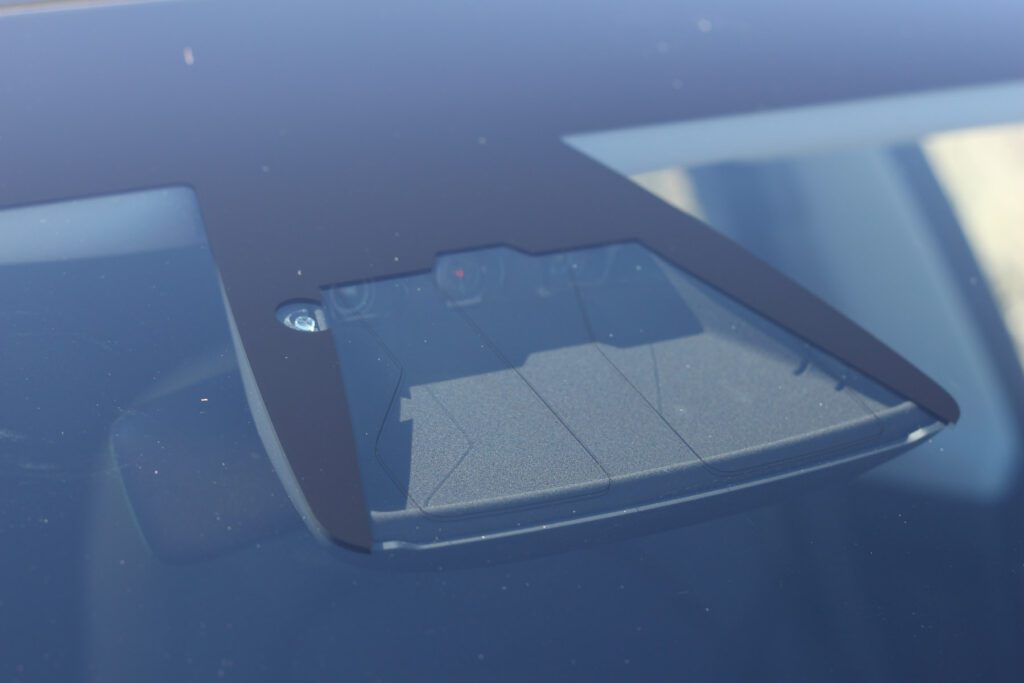

B-pillar cameras
The B-pillar cameras also get the upgrade treatment as part of the hardware 4 upgrades.
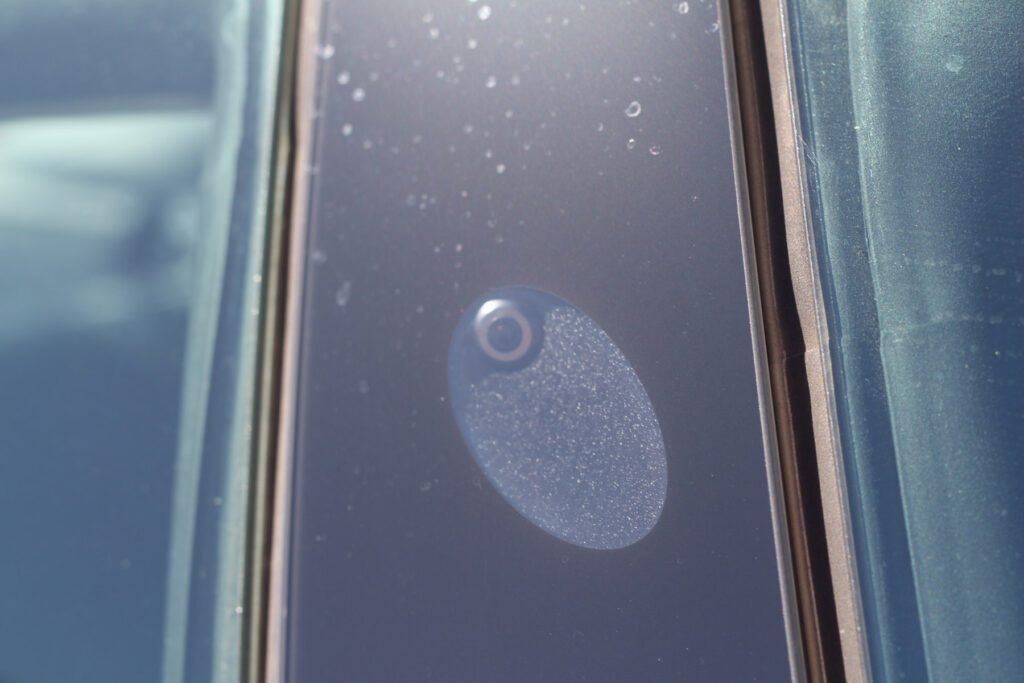

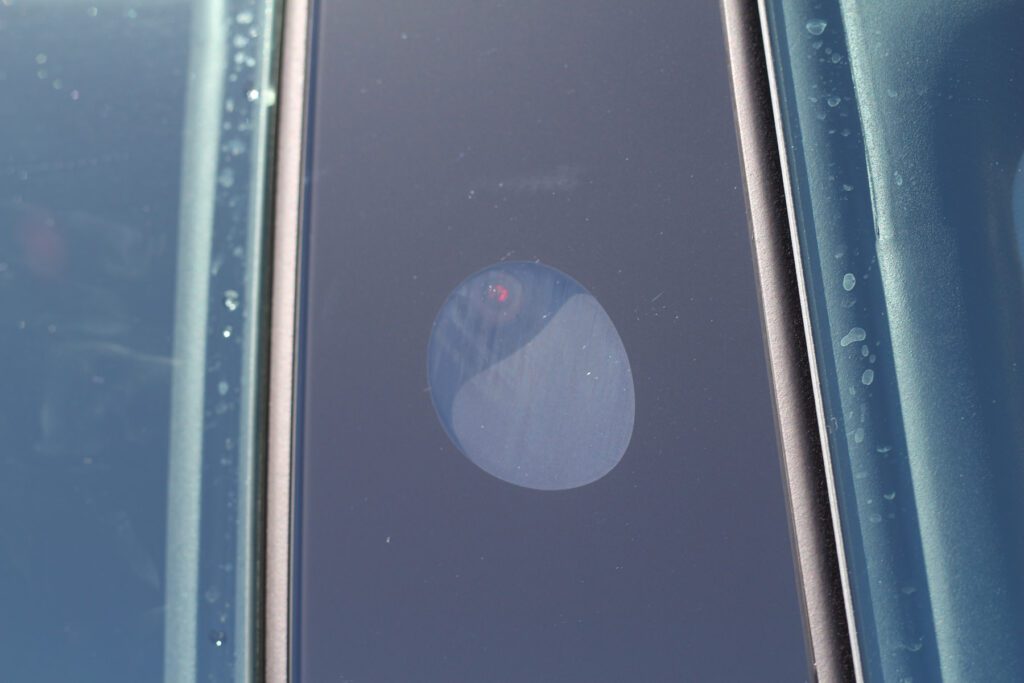

Door handles
The design of the Model 3 door handles has always been controversial, and while the headlights got a new profile, the door handles remain the same. They have been updated from Chrome to Black over the years, matching with the black window trim and side repeater.
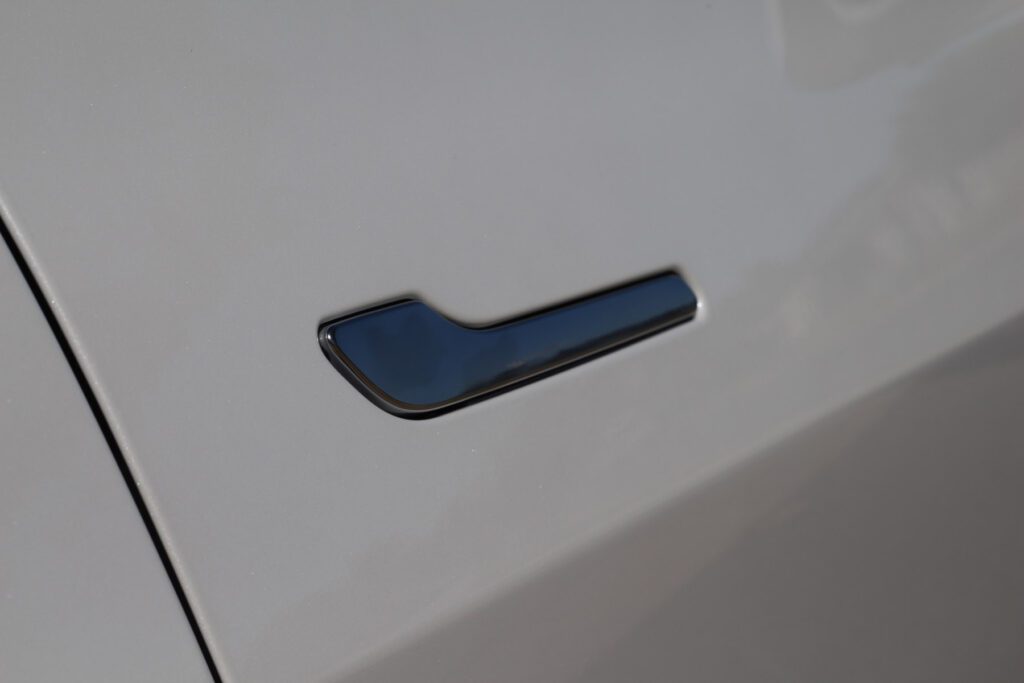

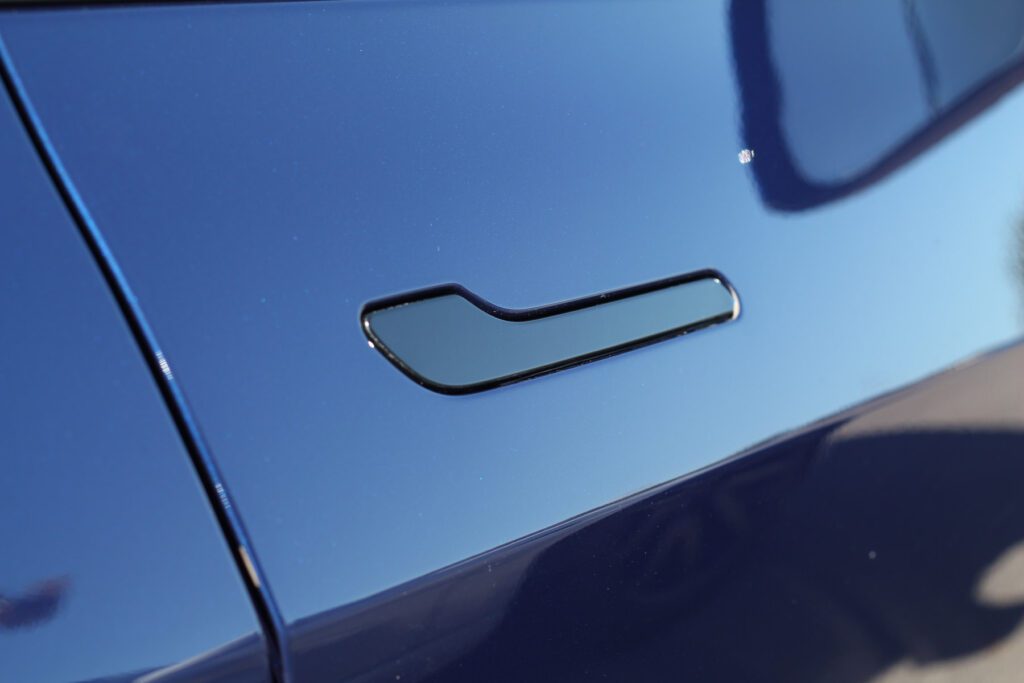

Charge port door
When Tesla made the decision to modify the rear of the Model 3, they had to accept a number of flow-on impacts to that decision. One such example is the change to the shape of the charge port door, making for yet another new part.
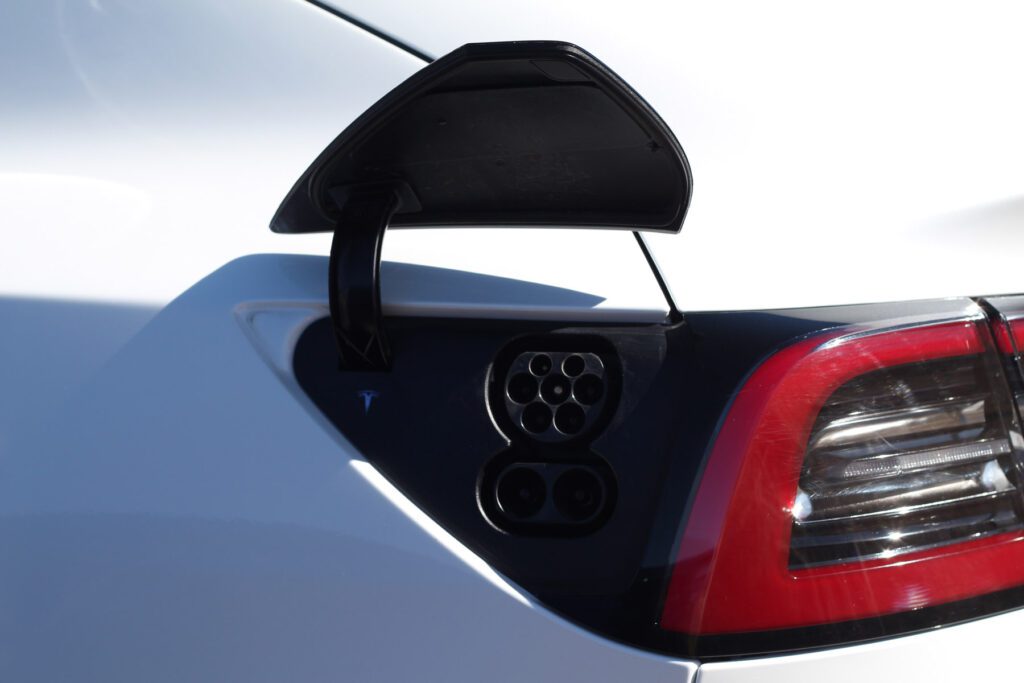

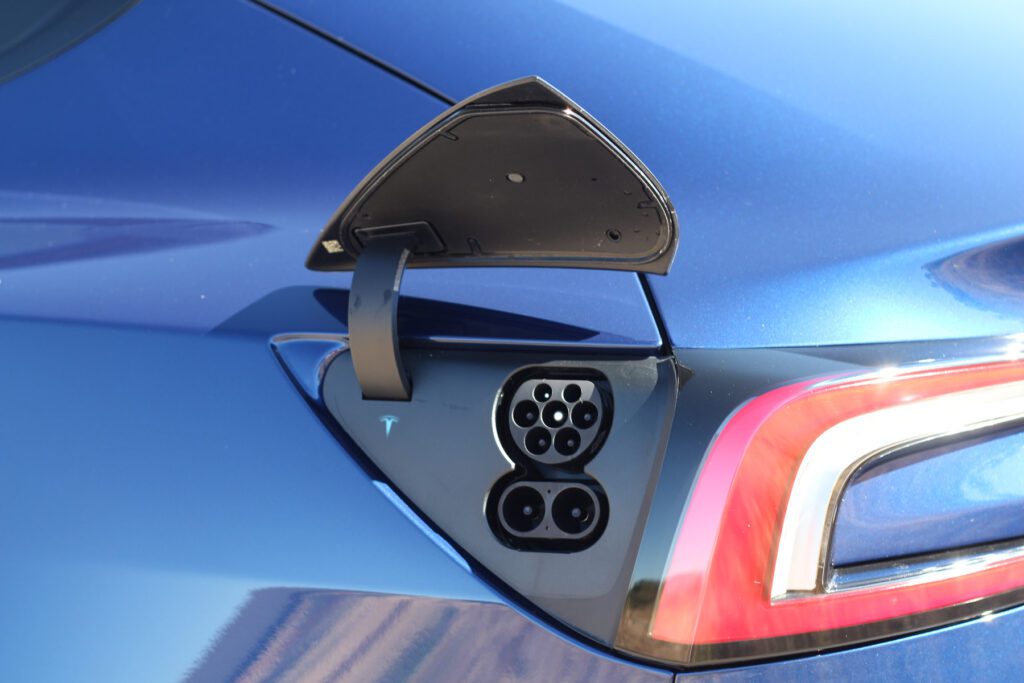

Hood
The hood needed to be updated to accommodate the change in headlights, but Tesla didn’t stop there, this is virtually a complete redesign, with the structural design underneath varying wildly from the original.
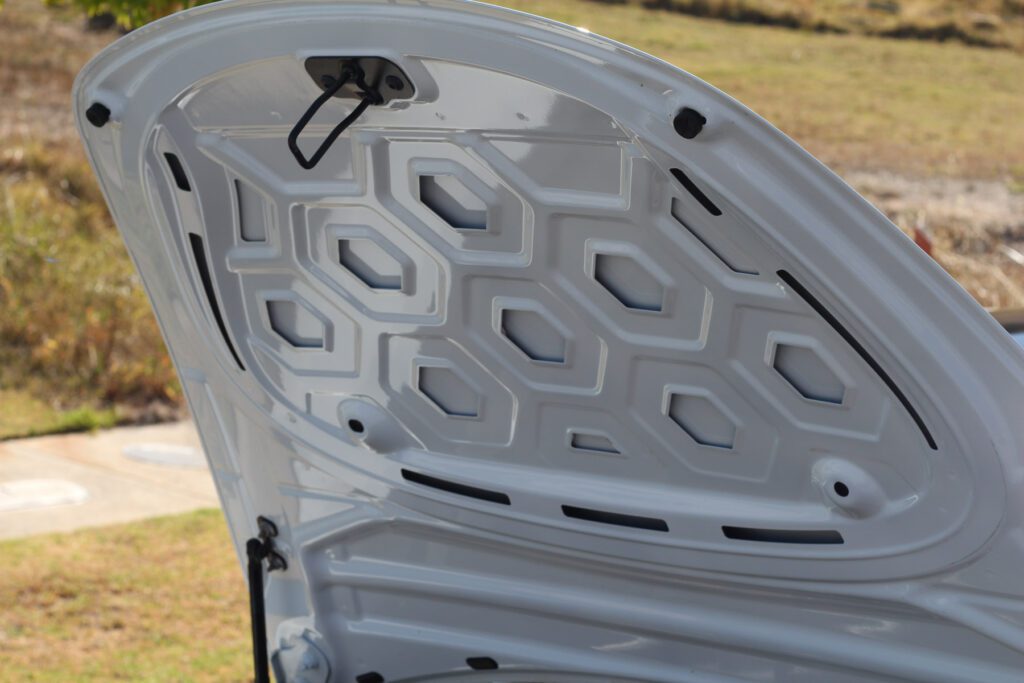



Hood hinge design
The hinge design on the new Model 3 is substantially changed as compared to the original design. Not only have the attachment points changed, but the strut itself has changed, and there’s also a new bump stop.
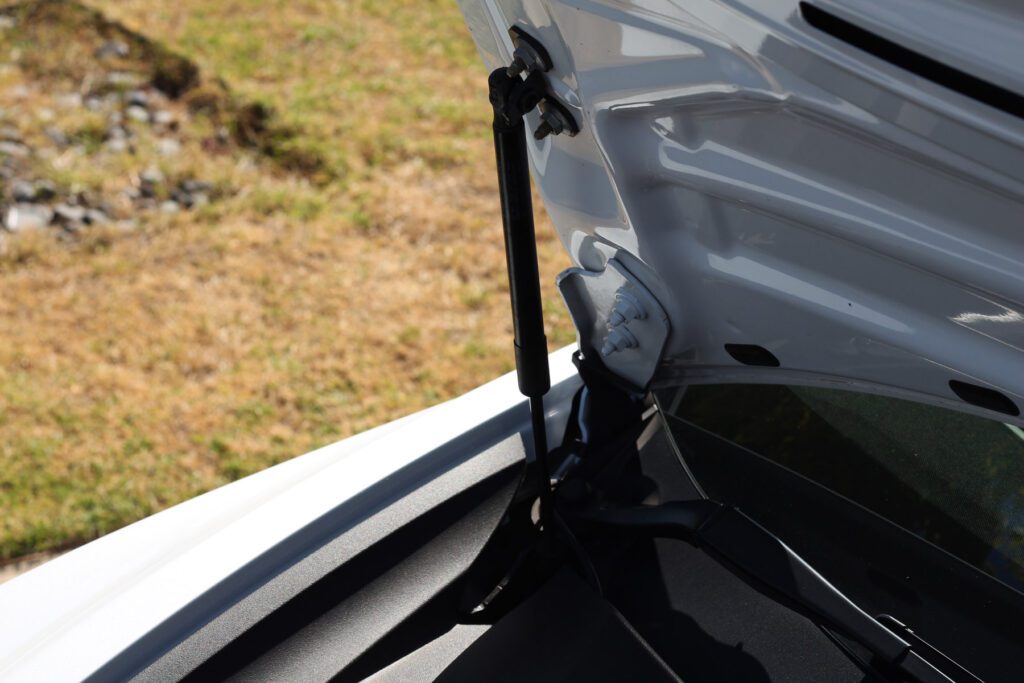

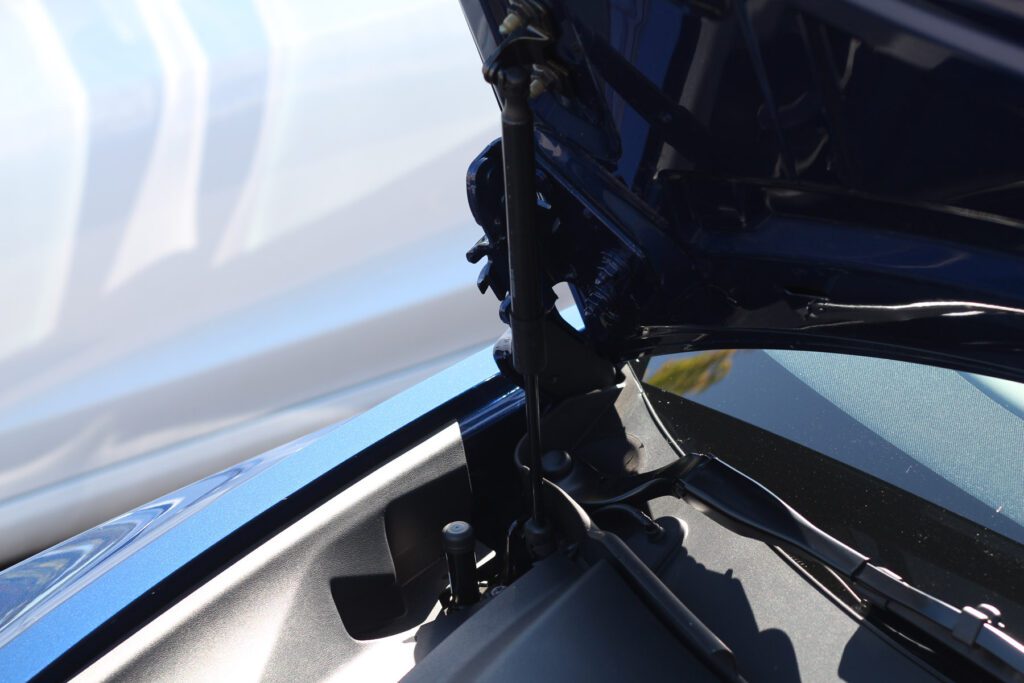

Hood latch
It’s hard to imagine why the hood latch needed to change, but here we are.. another new part. The design of the hood latch does change the feeling when you press and close the hood, but is it substantially different to warrant the redesign of the latch and catch mechanism, I find that hard to believe.
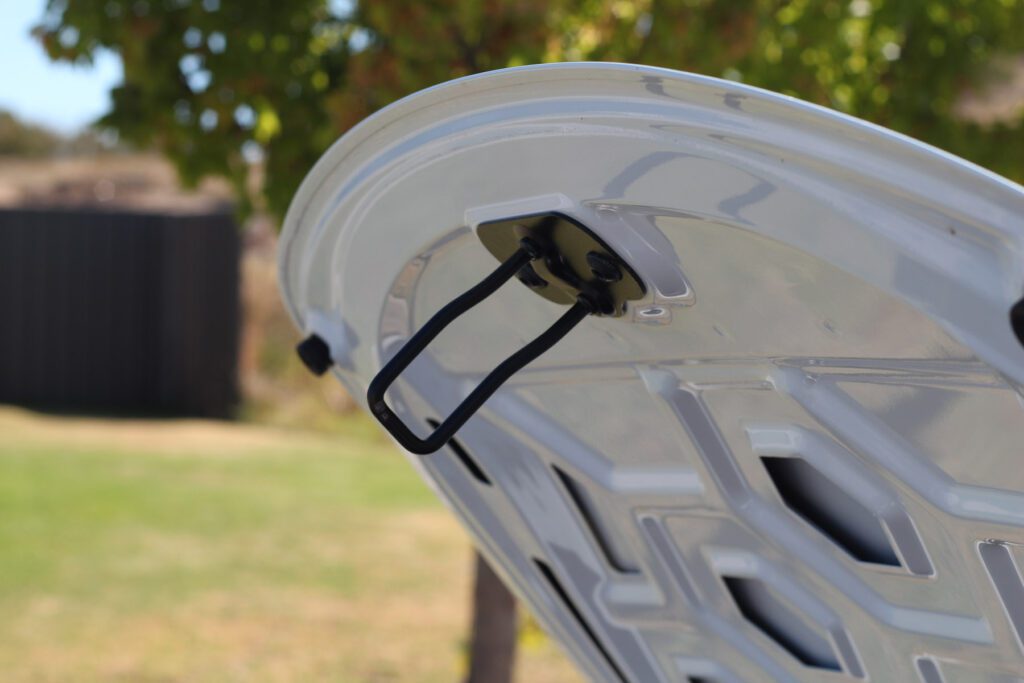

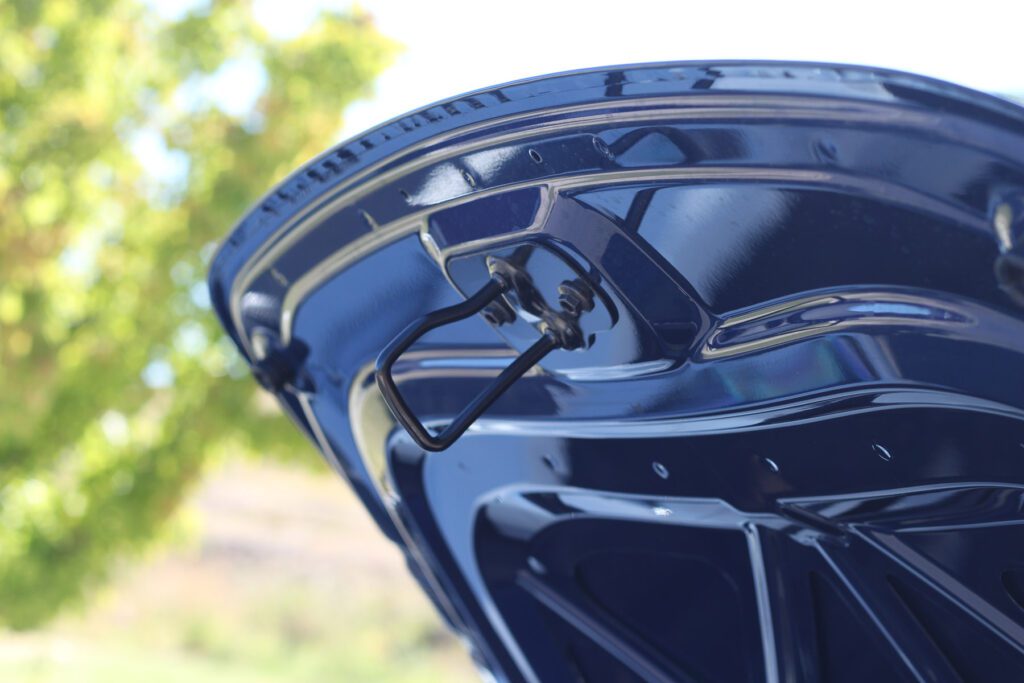

Window washer fluid
The location of the washer fluid has now changed to be more available to drivers, the position is now located near the hood opening, rather than the original position closer to the windscreen.
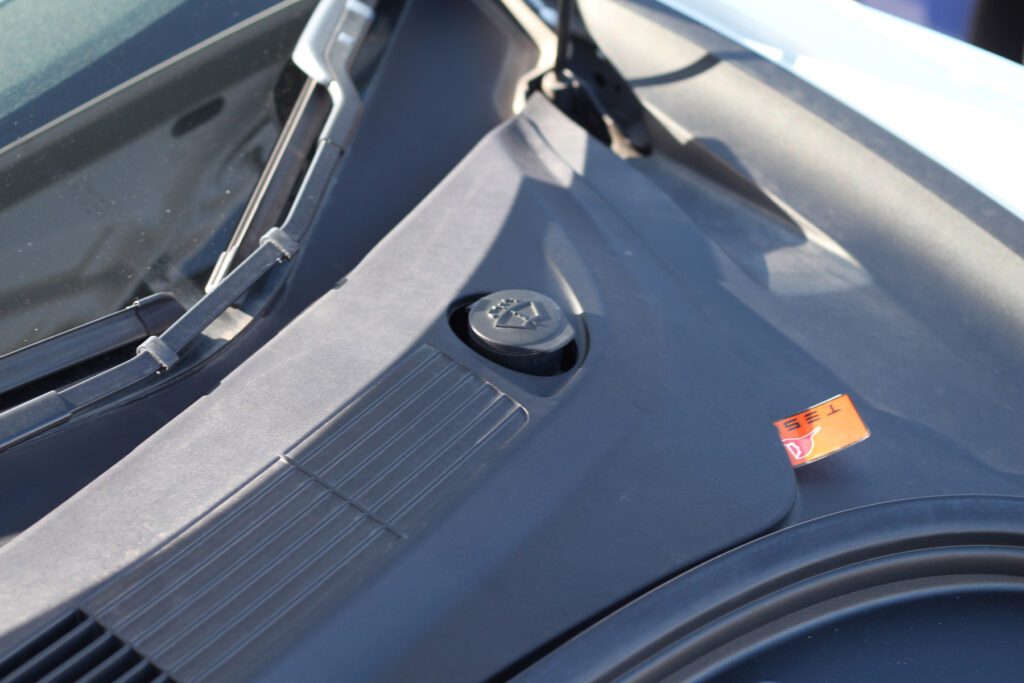

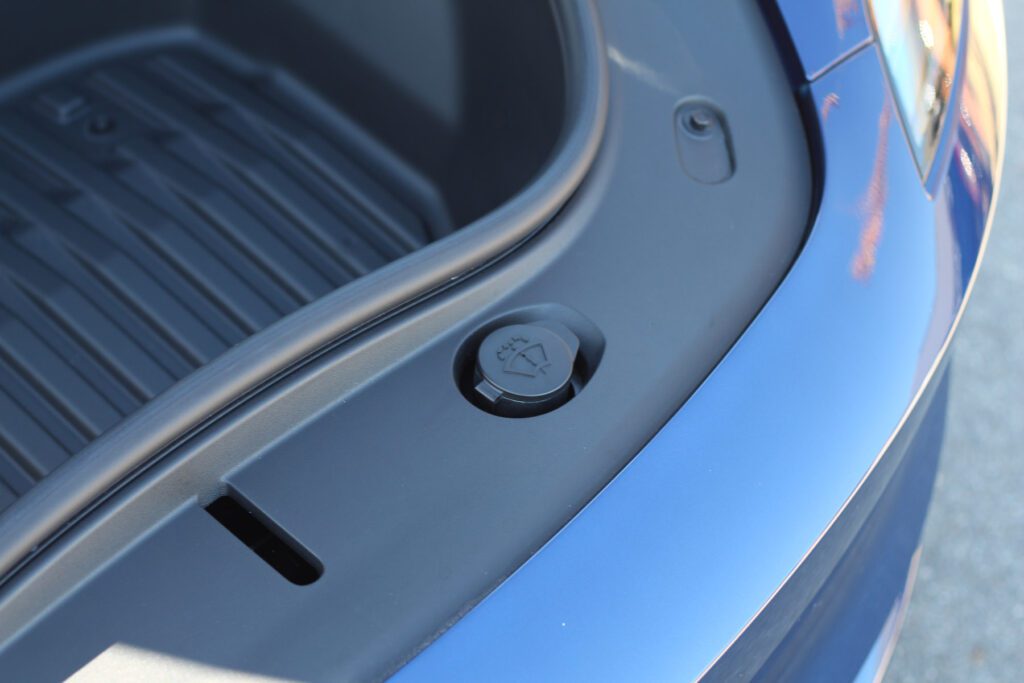

Windscreen wipers
Even the humble windscreen wipers got a rethink. It’s not obvious that this correlates to a better sweep or faster speeds and is likely to be another flow-on consequence of other changes.
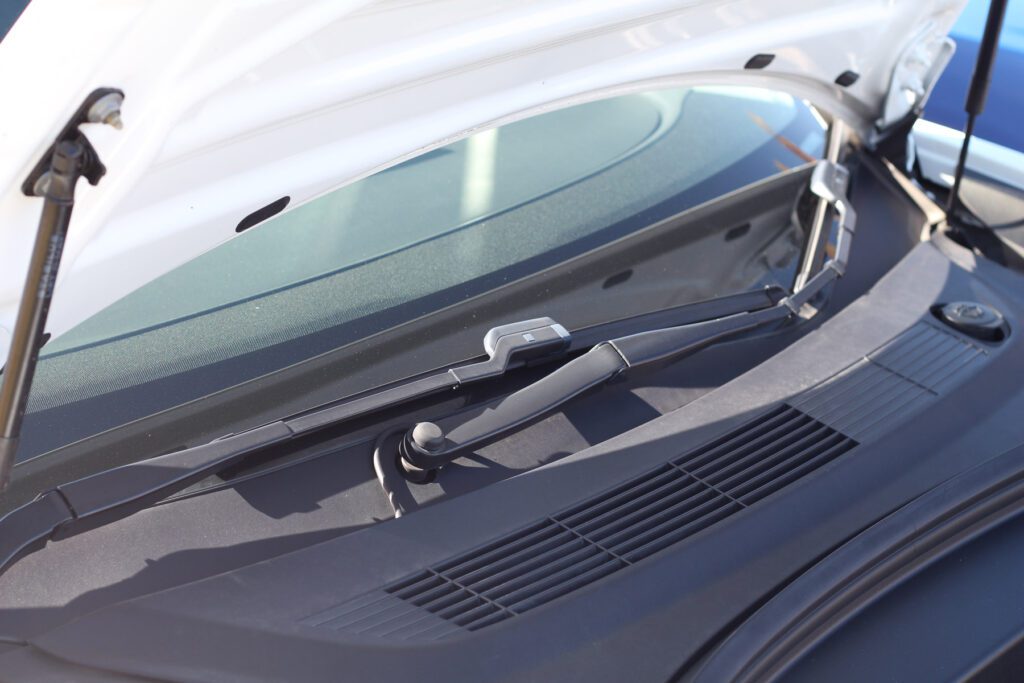

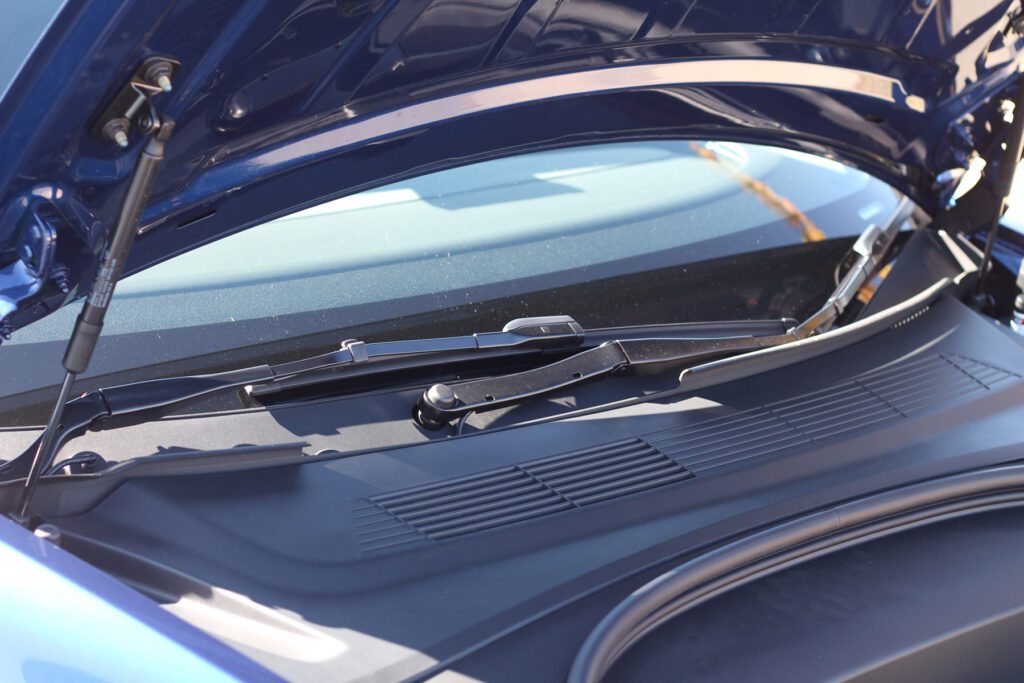

Front air intake
Another part that was a surprise to see a change to. The front air intake under the hood now features just two segments cut out, rather than the original 3. I assume that means Tesla has made improvements to airflow efficiency as cooling in the vehicle feels better than ever.
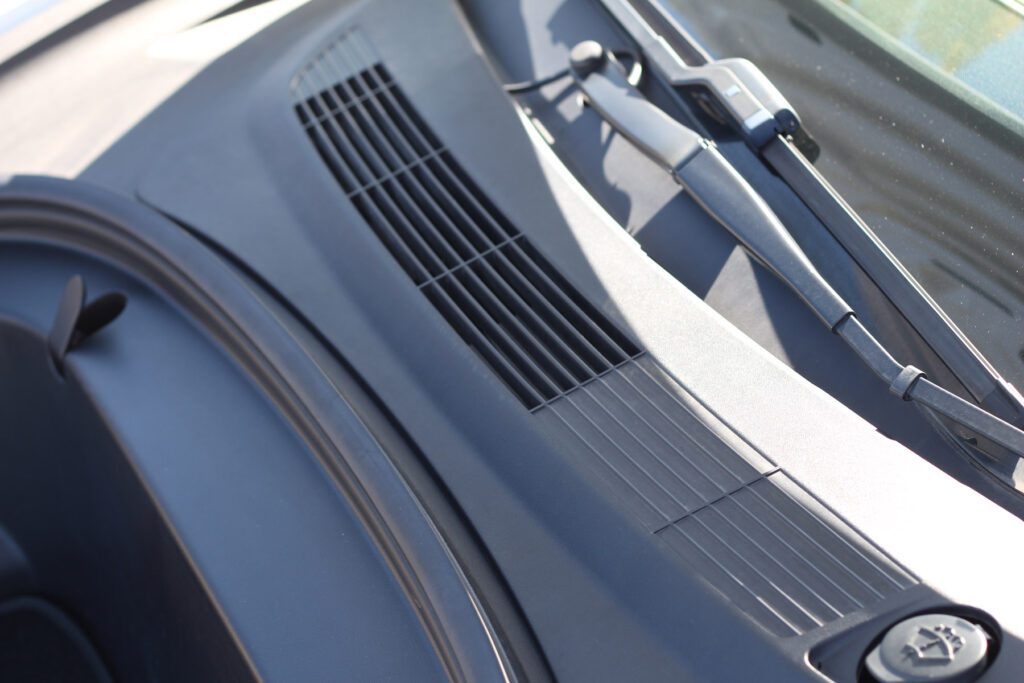

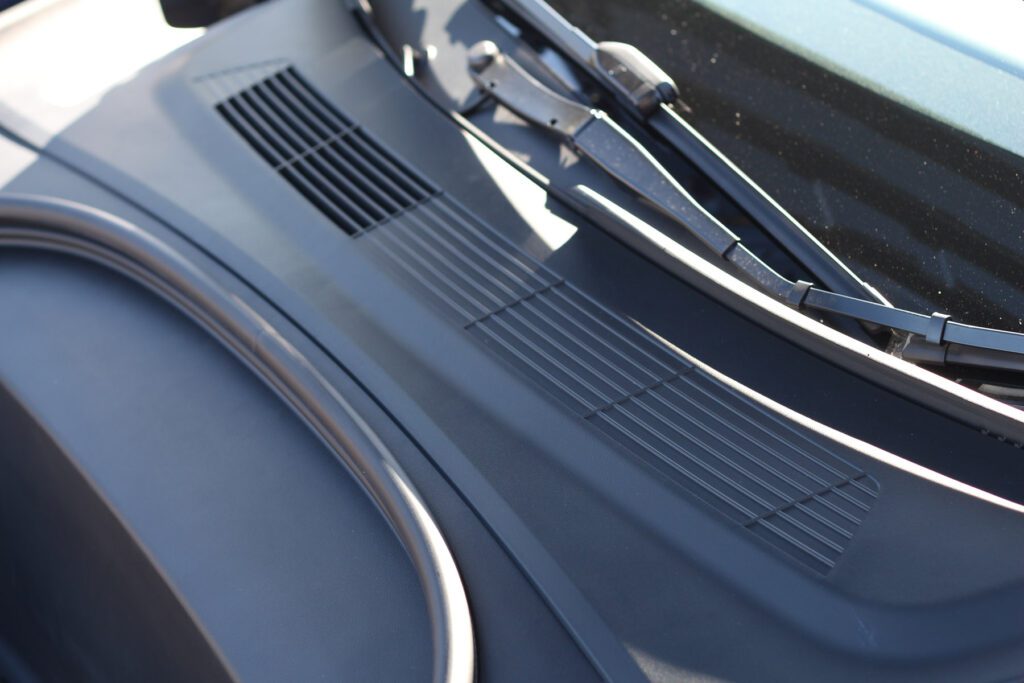

Funk
One of my favourite aspects of my 2019 Model 3 frunk is the 2 grocery hooks. Unfortunately, Tesla has since removed these parts. The original Model 3 also came with a carpet mat, while the updated Model 3 does not. There’s a subtle change to the profile of the frunk, but the storage volume remains very similar.
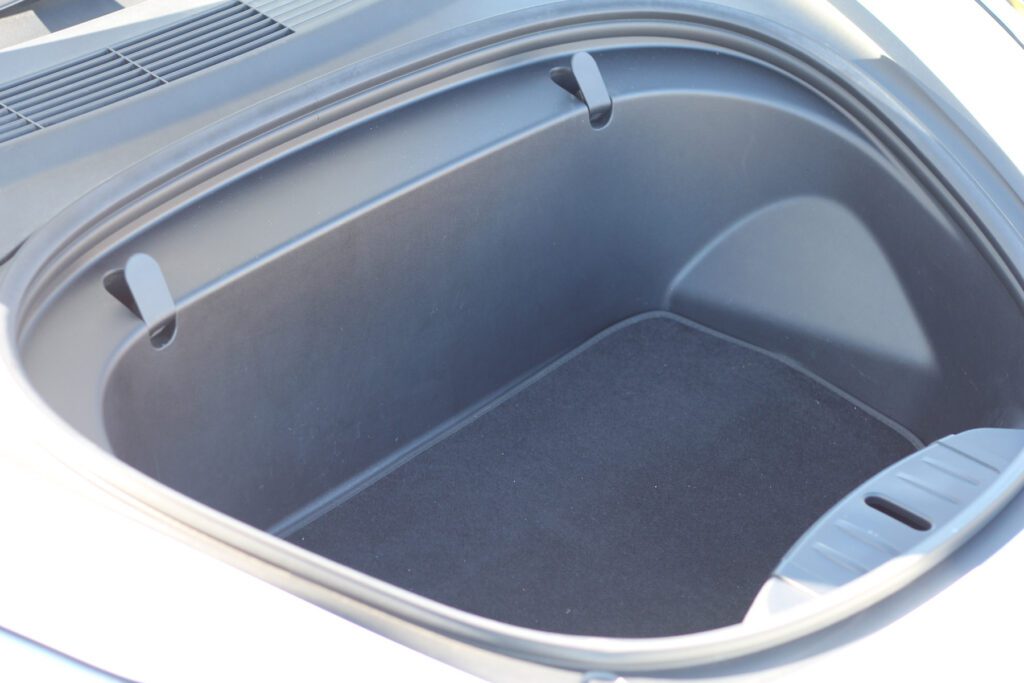

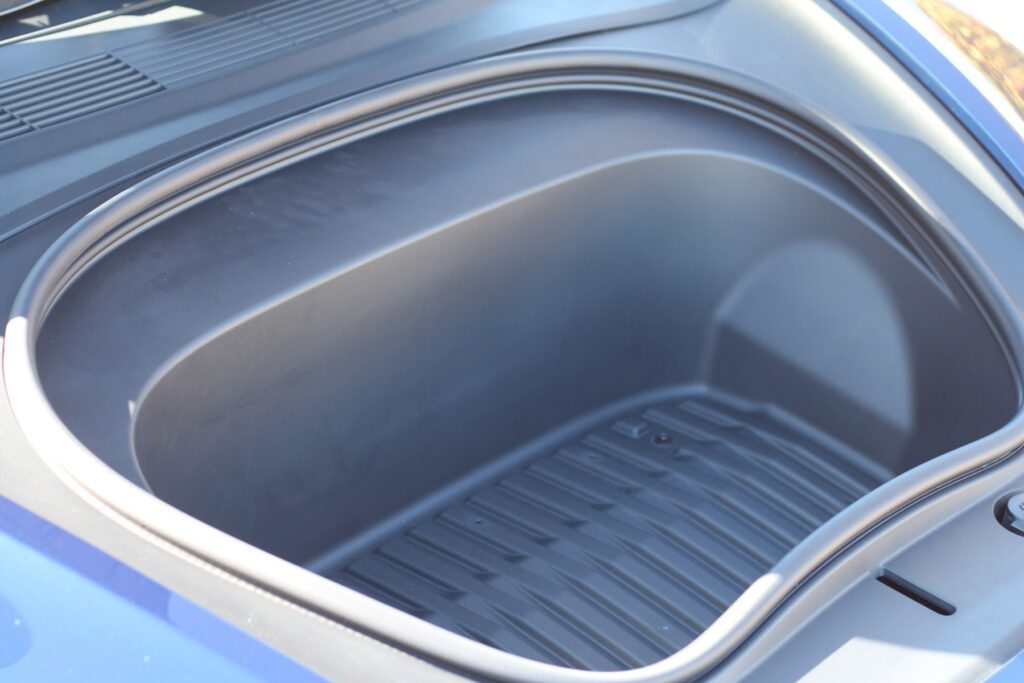

Frunk front
The rubber seal that surrounds the hoot opening is now thicker and bolstered than the original. The hood latch point has now moved outside the frunk, compared to inside the frunk on the first version.
The tow hook is now embedded in the front of the frunk, relocated from the previous position under the carpet mat.
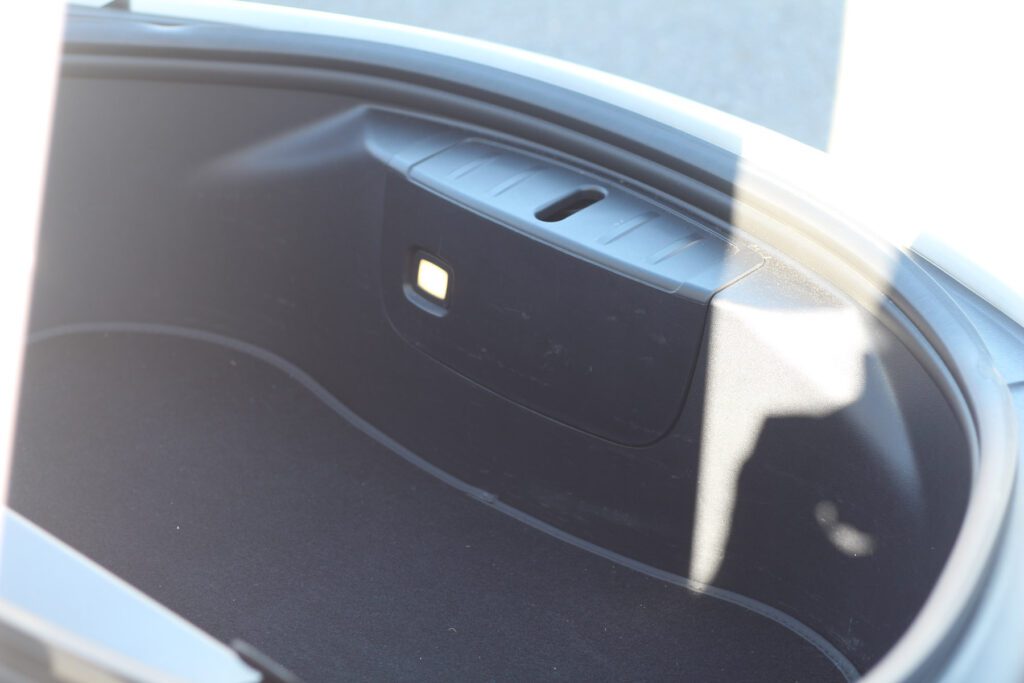

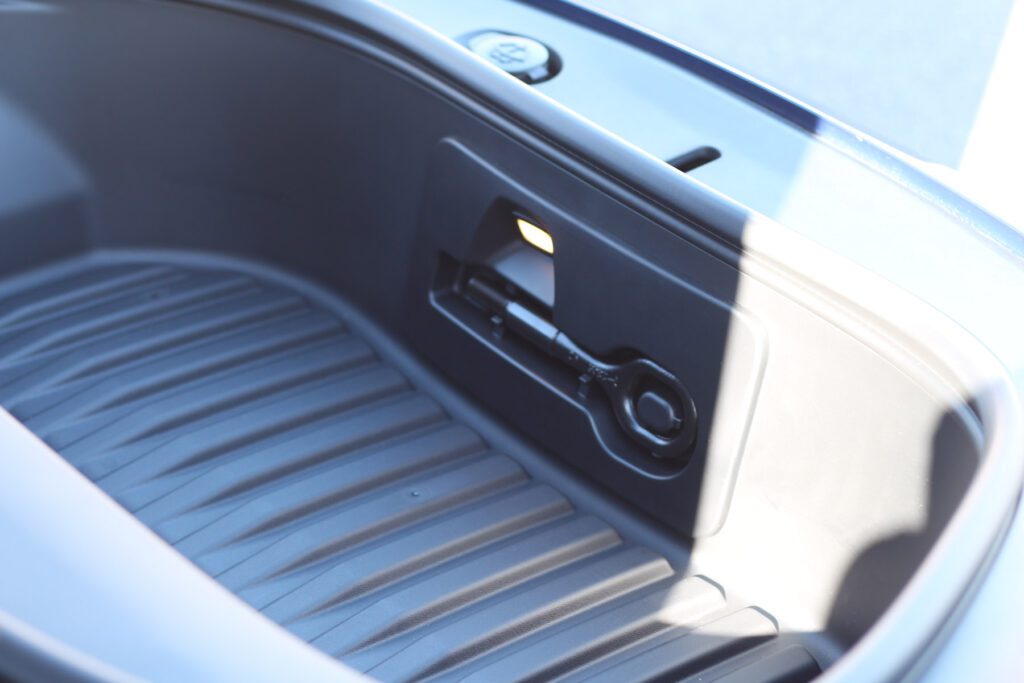

Rear bar
The rear bar of the Model 3 has also had a makeover. It now features a more aggressive black inset to the lower portion which also houses aero channels to control the airflow exiting from under the vehicle in a more controlled fashion.
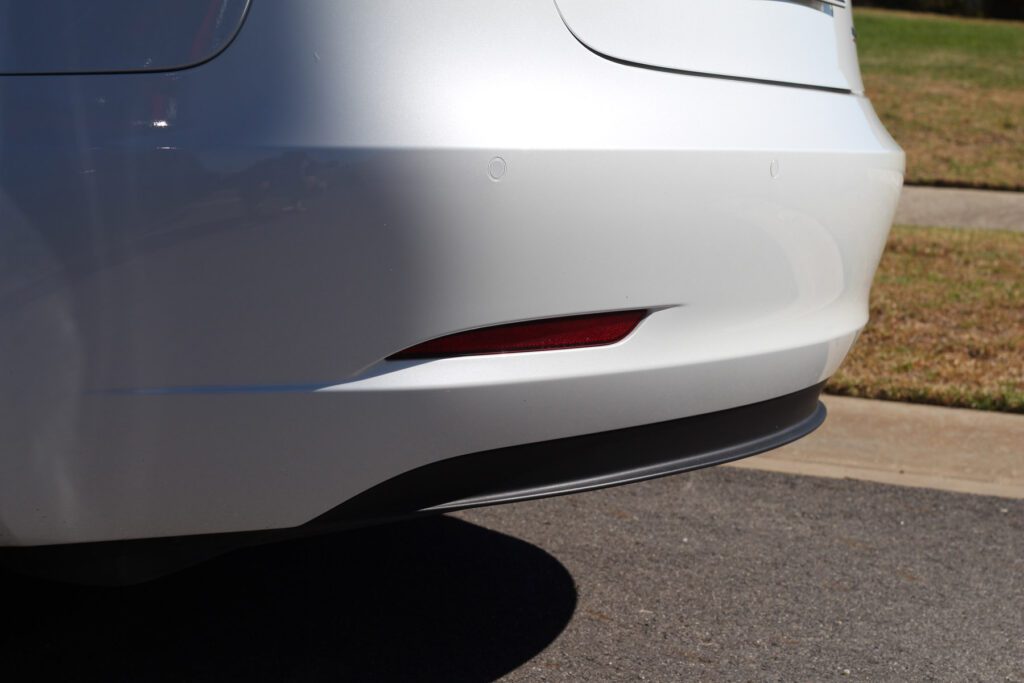

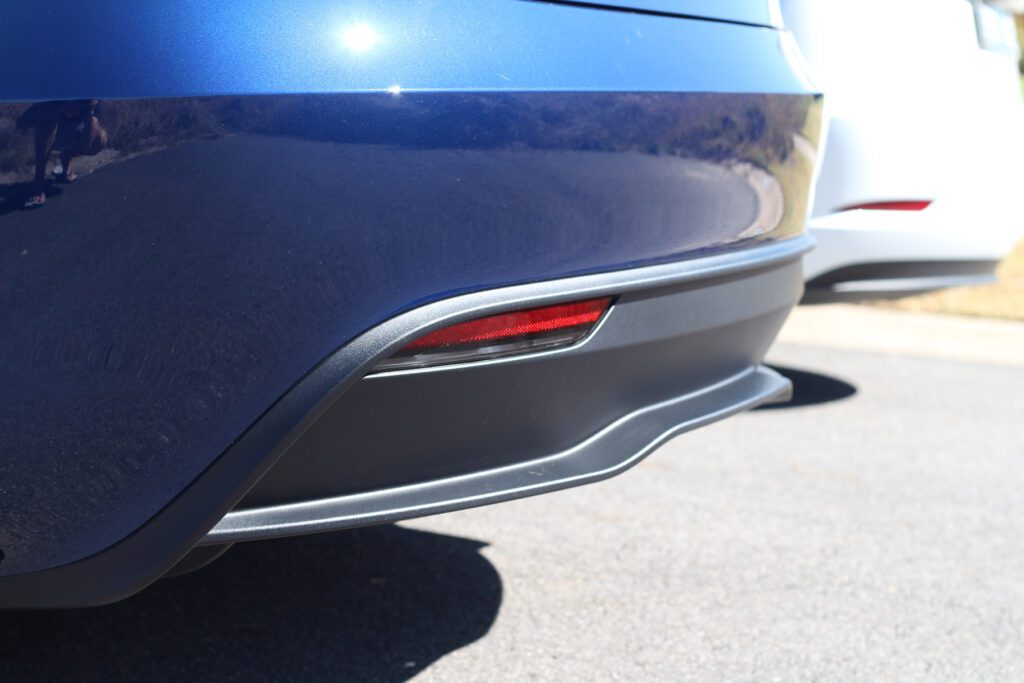

Trunk/Boot
The new trunk or boot lid, is significantly redesigned. The shape, the bump points, the support struts and more all get an update.
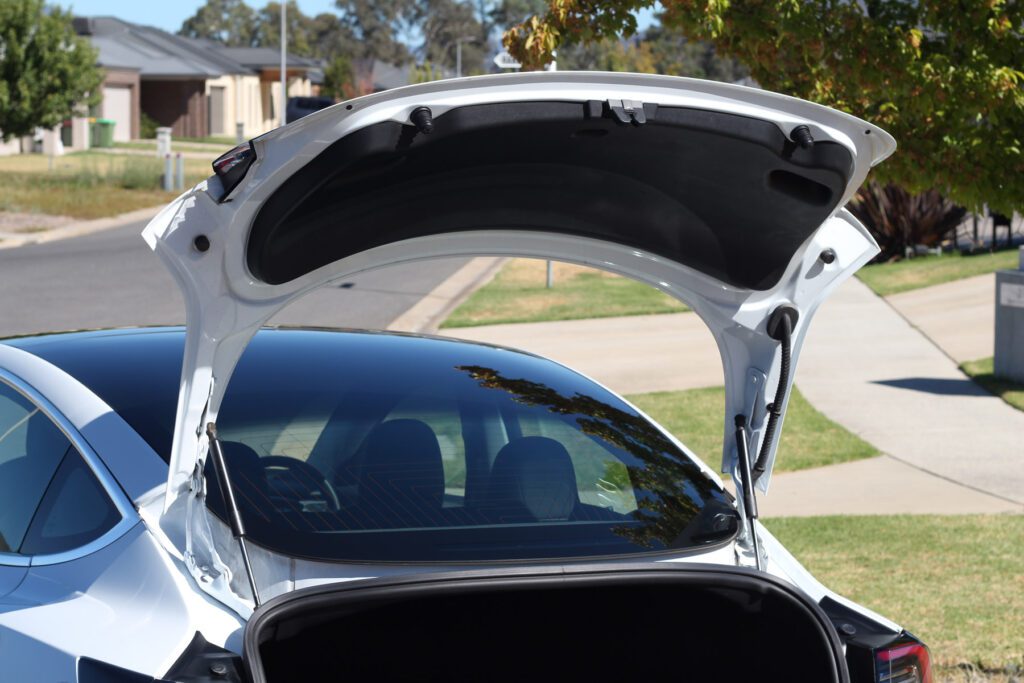

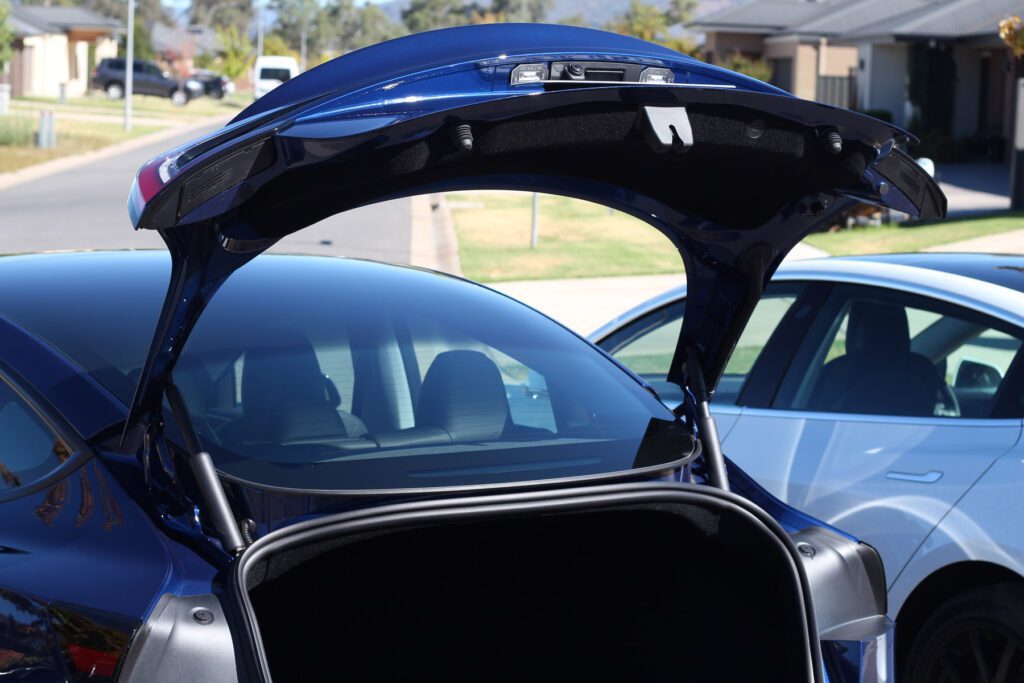

Trunk struts
The first edition of the Model 3 had a manually operated trunk, now matching the Model Y, it offers a powered trunk lid which is also incorporated into Lightshow performances. The struts are significantly bolstered in size and the whole mounting interface has been rethought.
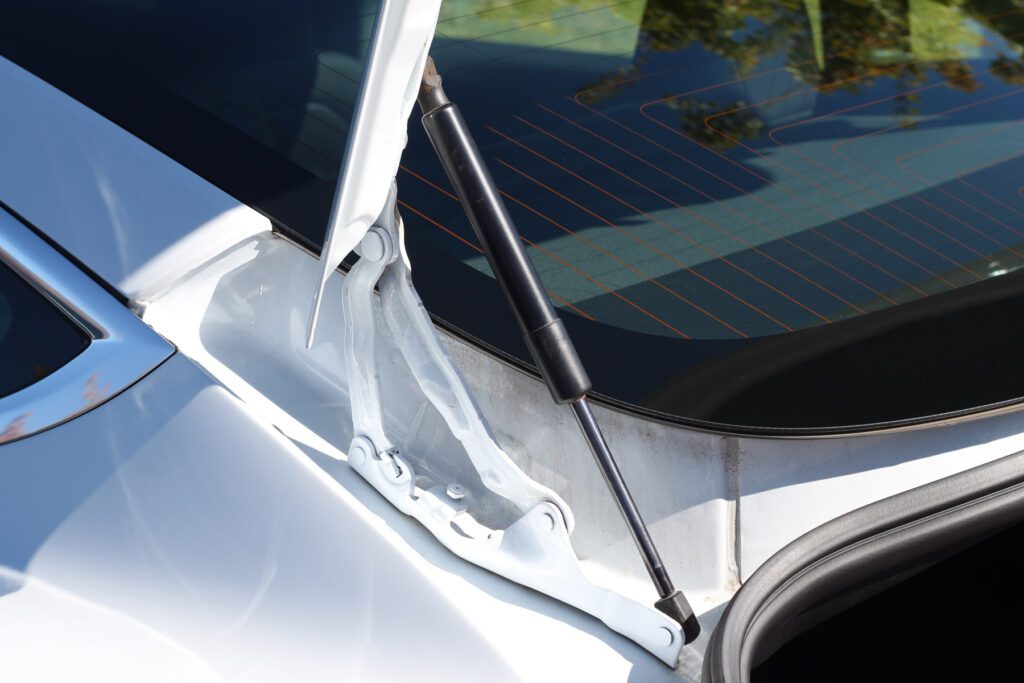

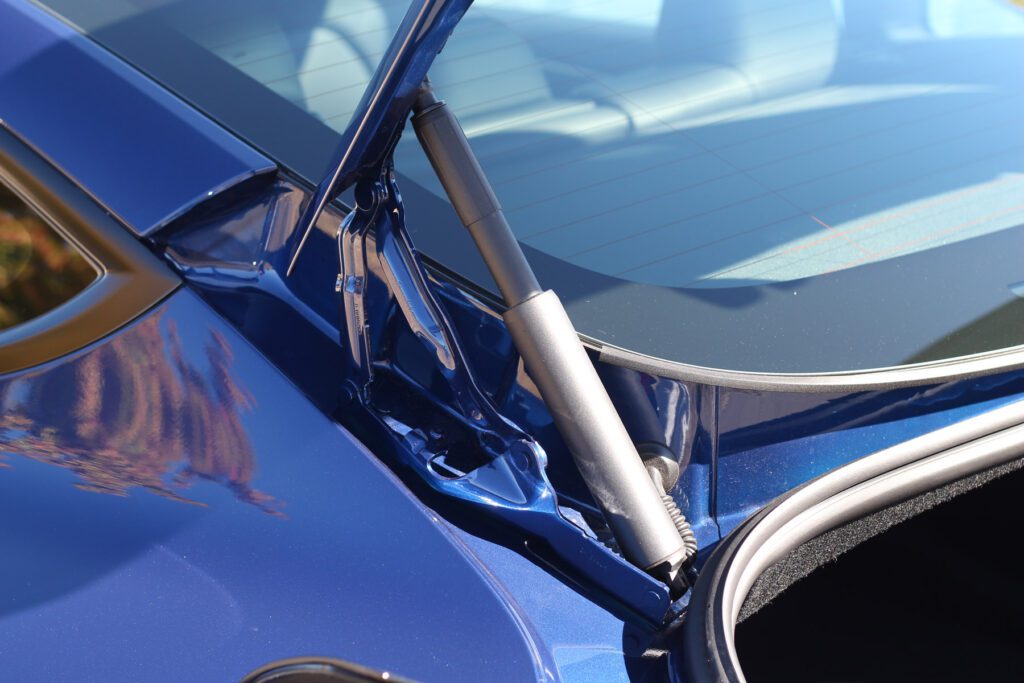

Trunk lid interior lining
Tesla started with a hard plastic lining for the underside of the trunk lid. This has now been upgraded to a carpet finish. This isn’t something anyone asked for, but does deliver a more premium look and feel.
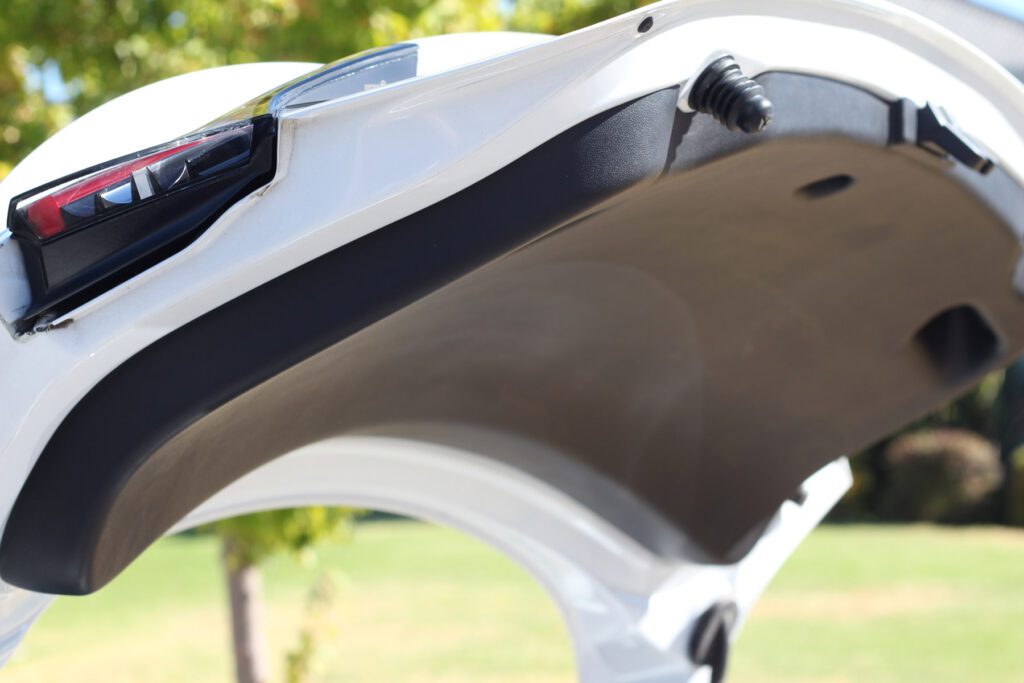



Trunk lid automatic/manual open/closing
The first edition of the Model 3 had a manually operated trunk, now matching the Model Y, it offers a powered trunk lid which is also incorporated into Lightshow performances. The struts are significantly bolstered in size and the whole mounting interface has been rethought.
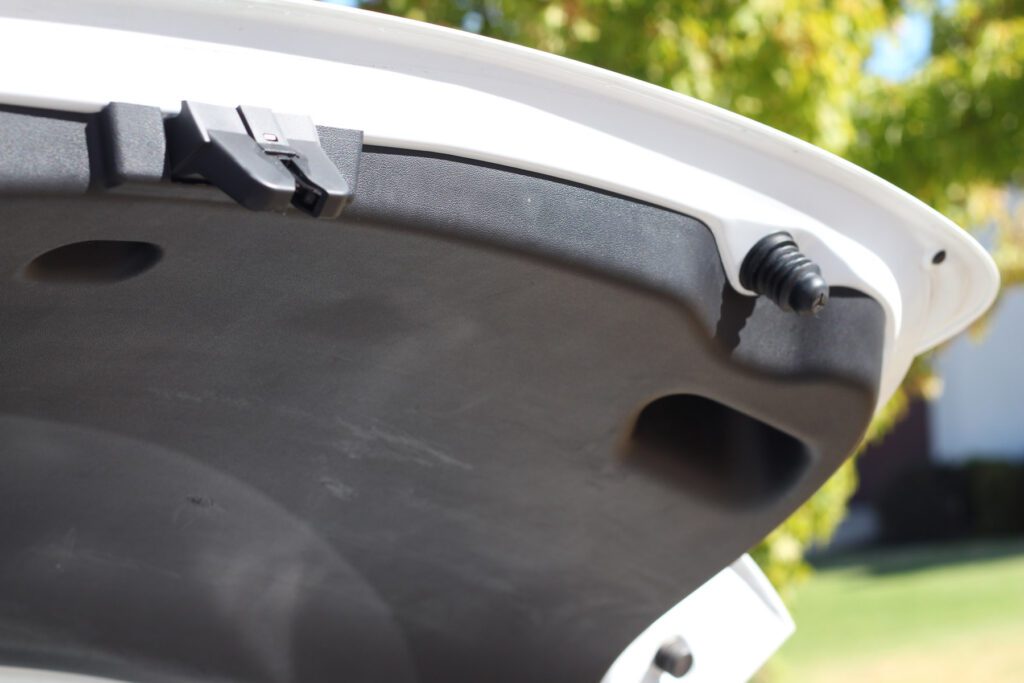

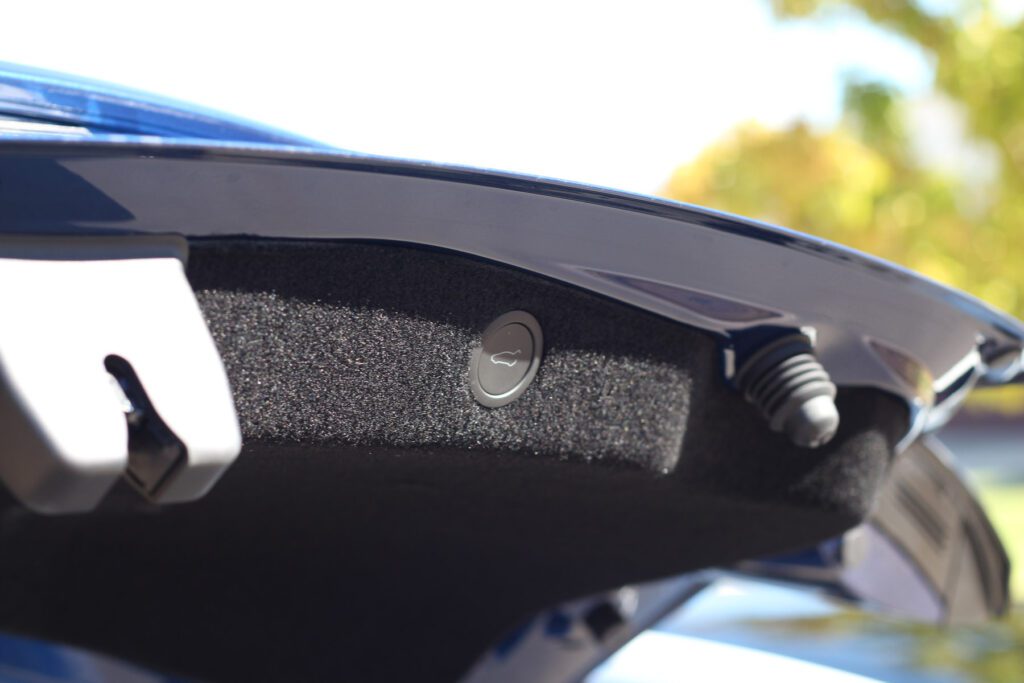

Trunk Rear Parcel Shelf
The unpainted section of the rear parcel shelf still exists, saving a tiny amount of paint per vehicle. What’s new here is a complete reprofiling of the shelf, and we now see new speakers penetrating the shelf, suggesting they’ve increased in size.
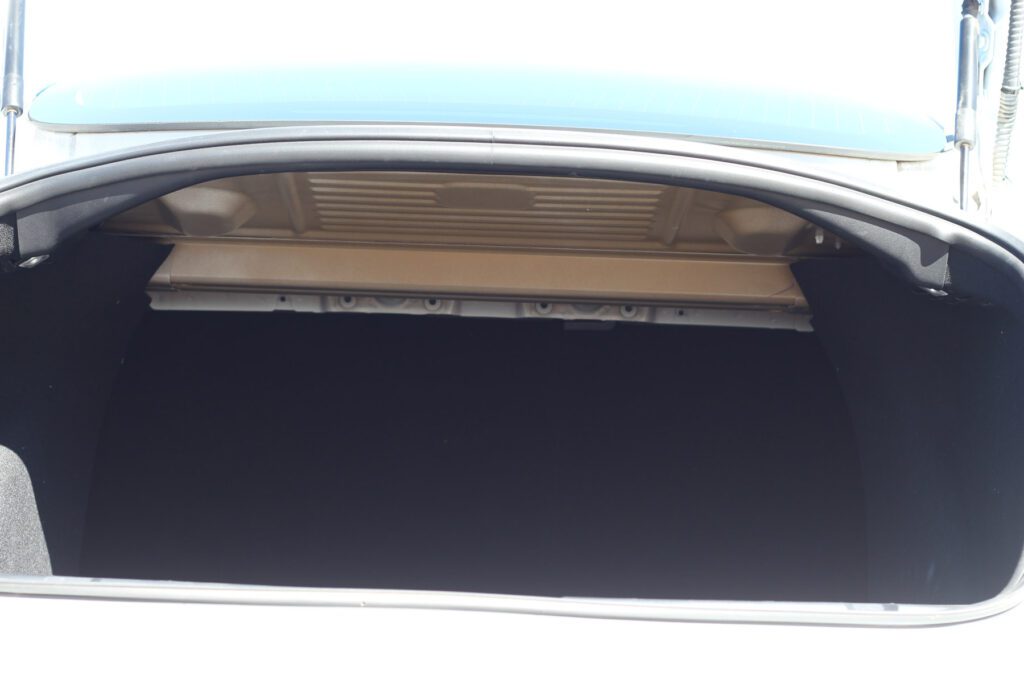

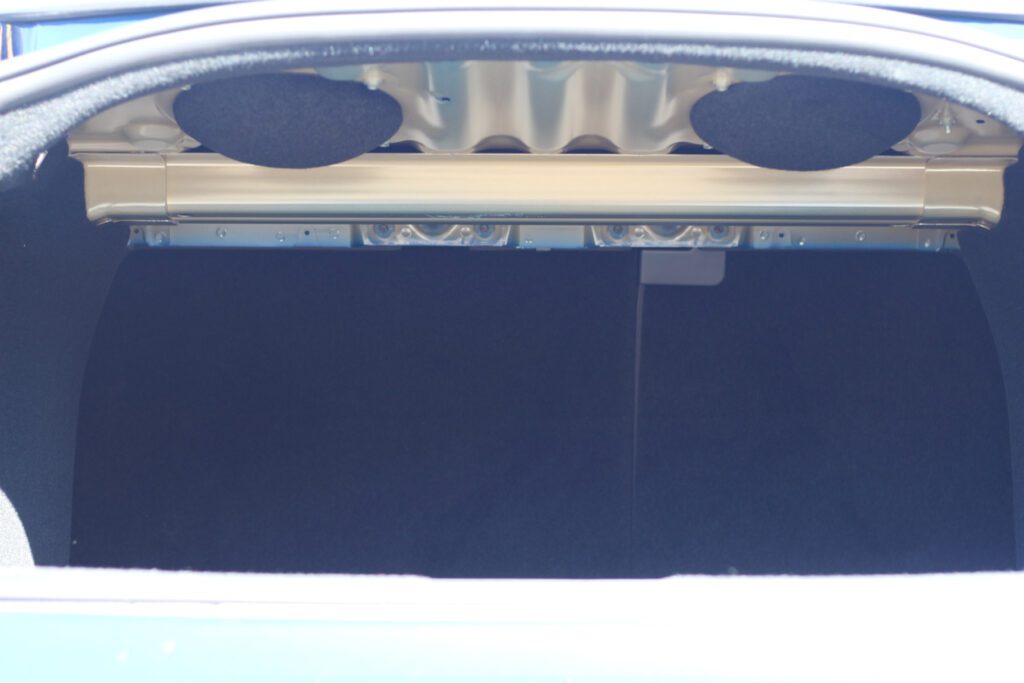

Trunk interior light/charge port manual release
To the left of the trunk, you’ll notice some pretty hasty holes that allow access to the manual charge port release. This is now dramatically improved, and a property, easy-to-access fabric handle to release it. The trunk light is now positioned in a higher, better position and is brighter, a good improvement.
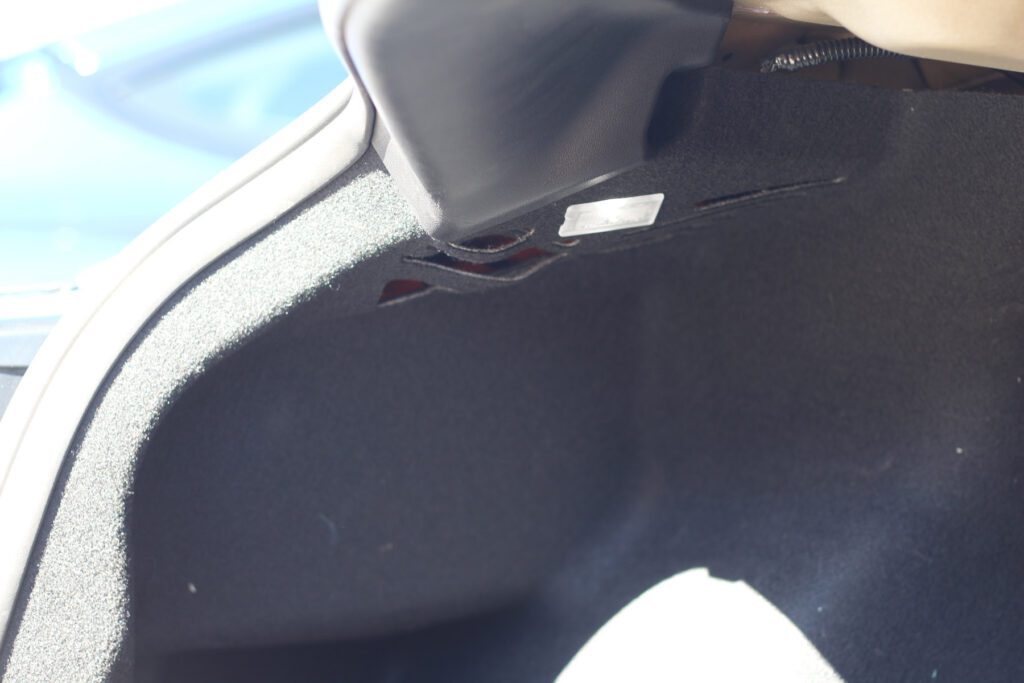

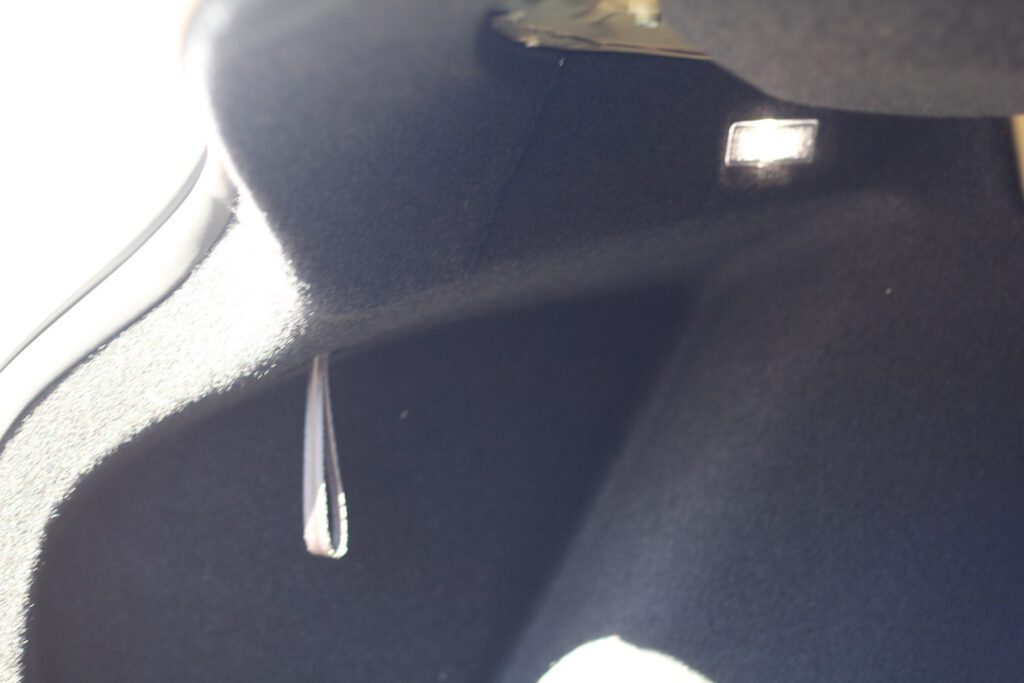

Trunk stoppers
I would have imagined that this part, out of all others, could have remained the same, but again we see a change. The stopper now features a new profile and provides a solid contact point for the rubber stopper to catch the trunk as it closes.
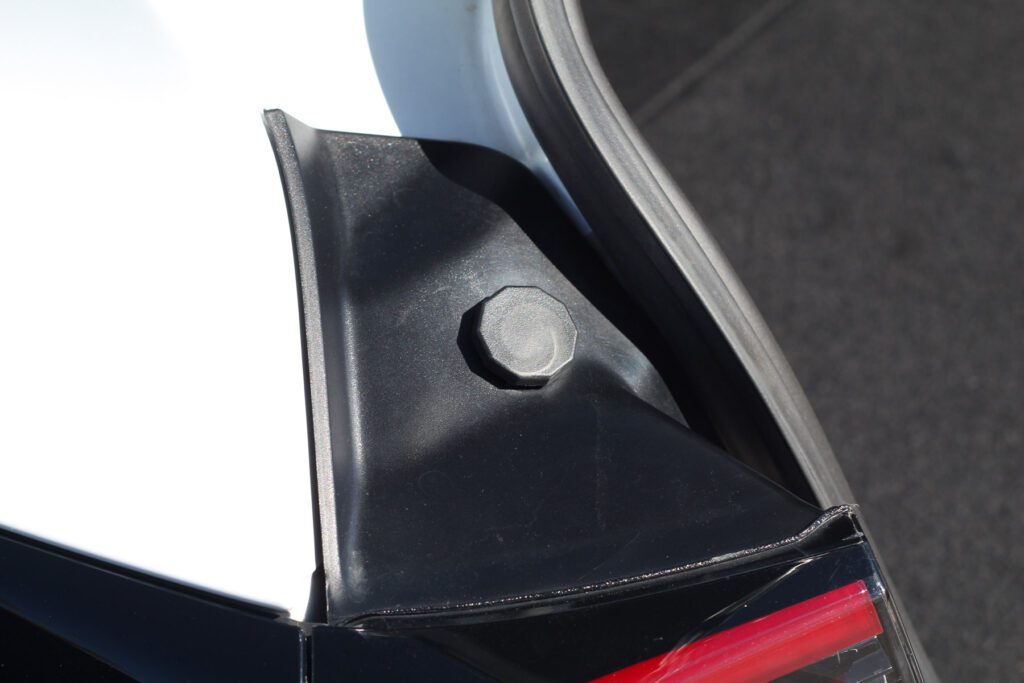

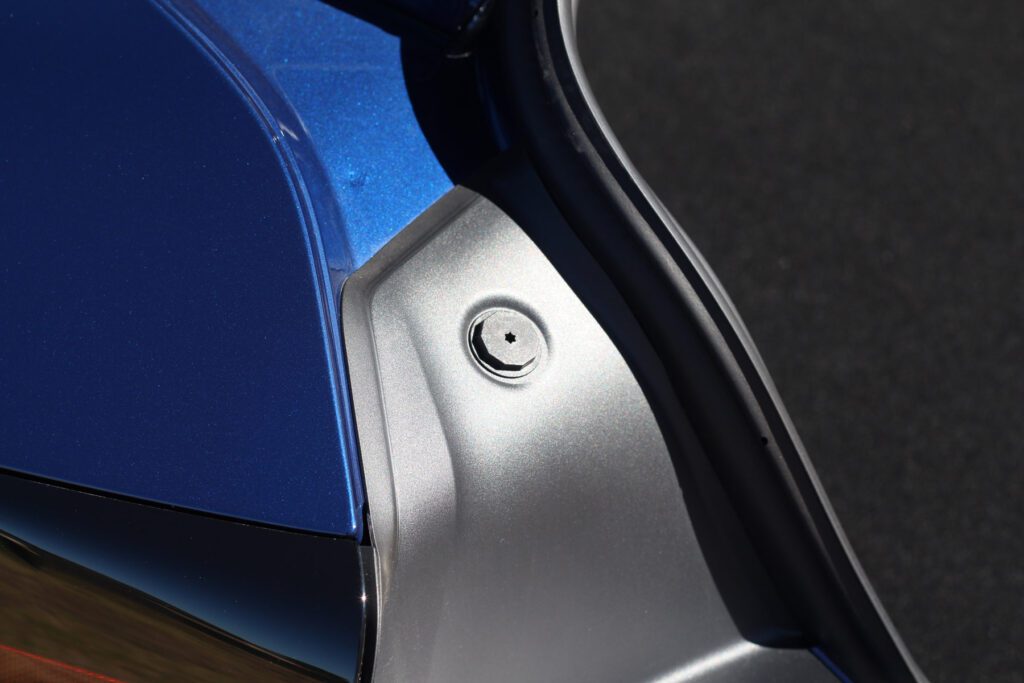

Interior changes
Seats
There are some major changes to the seats in the newest Model 3, now offering ventilated (cooled) seats, adding to the original heated function. The headrests are now far more comfortable and the seat controls have been tweaked as well.
There is also one less option for rear passengers, the center seat no longer offers heating.
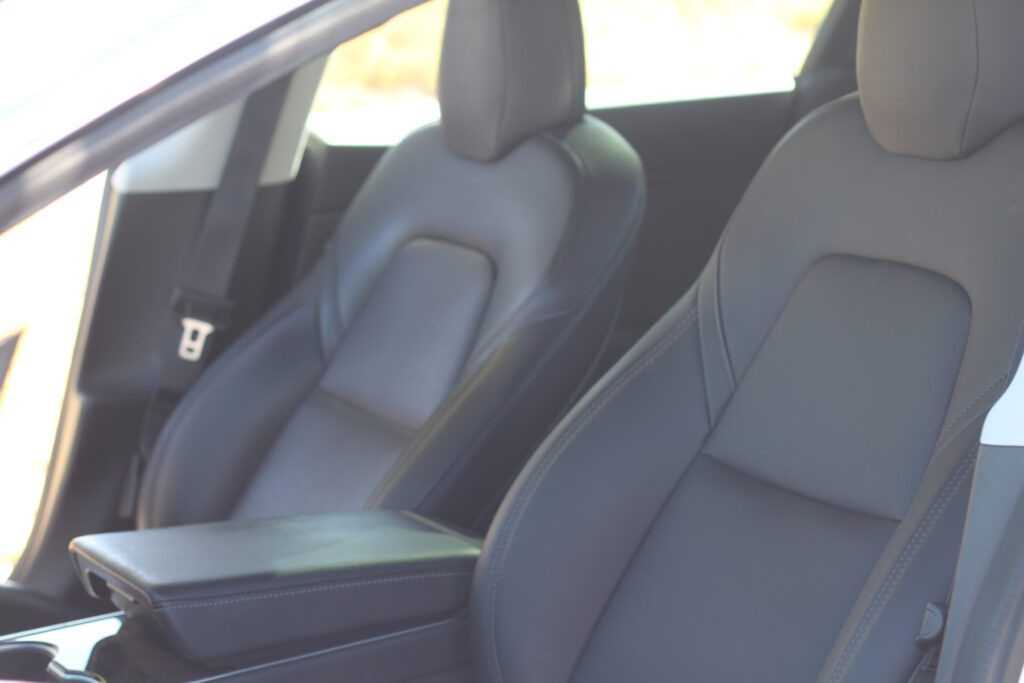

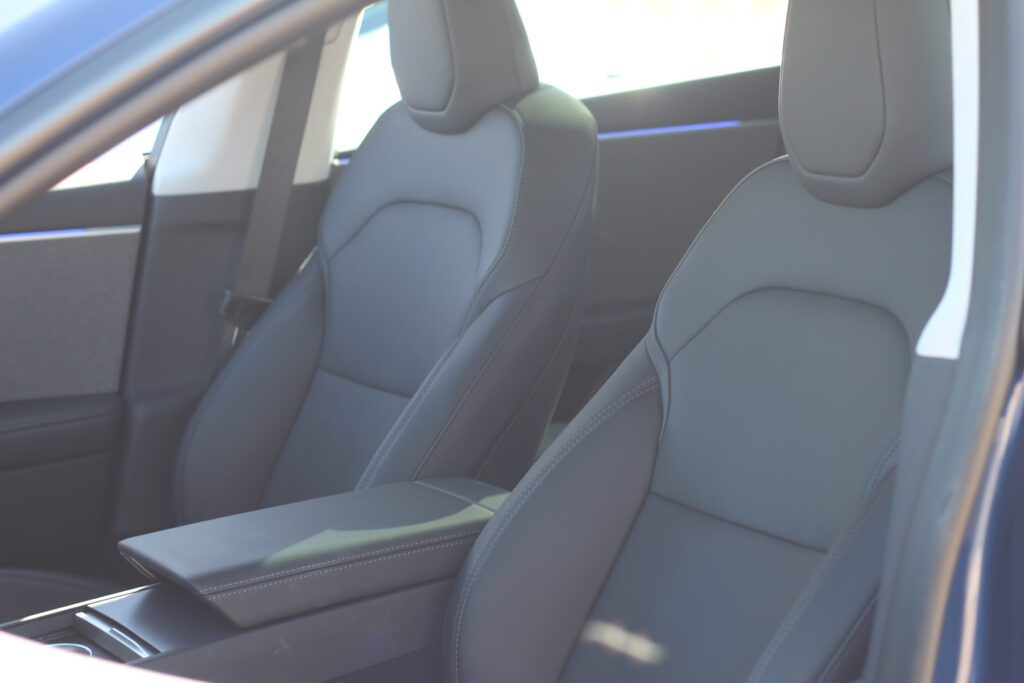

No stalks
One of the biggest changes to how the driver interfaces with the vehicle is the removal of the drive selector and indicator stalks.
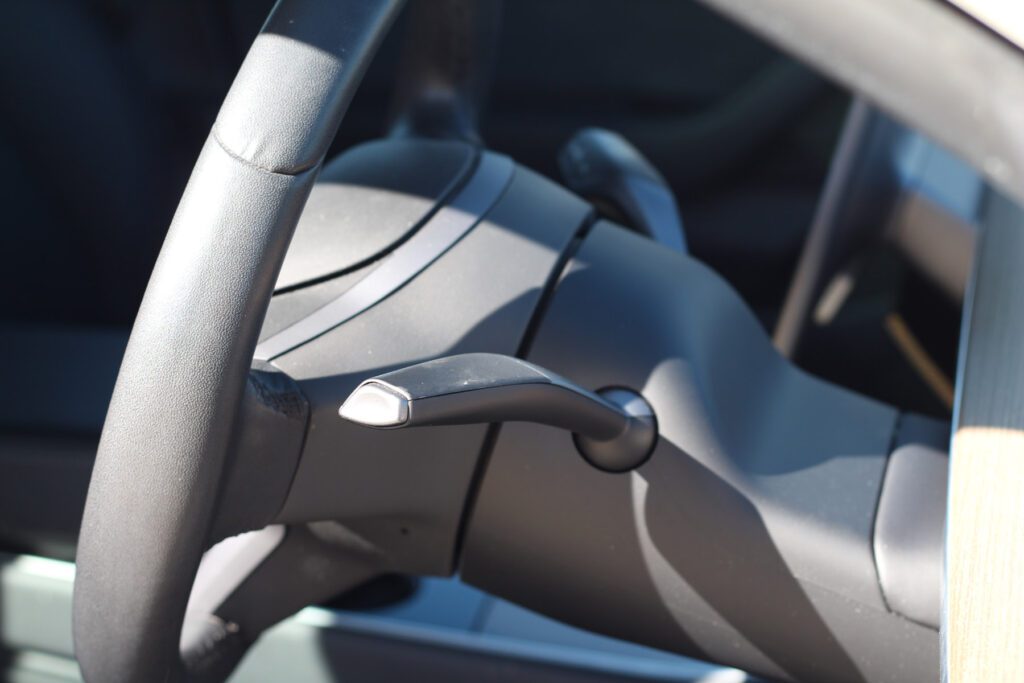

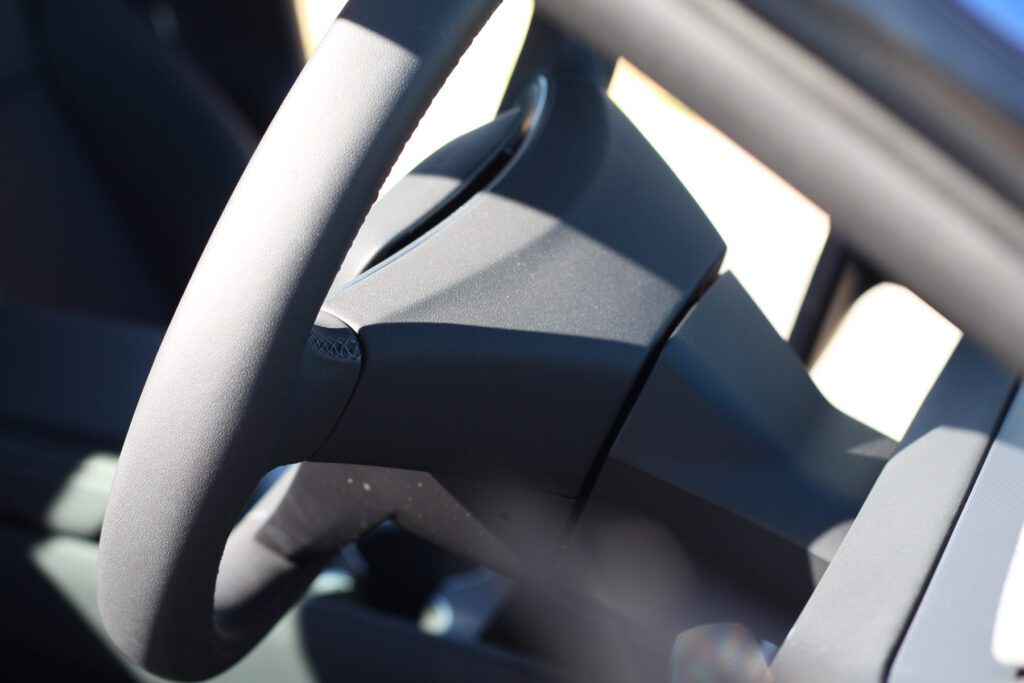

Steering wheel
Now the stalks are gone, many of the functions like headlights, windscreen wipers and indicators are now available through extra buttons on the wheel.
Gone is the big Tesla T logo in the middle, instead replaced by the word Tesla, similar to the change on the trunk.
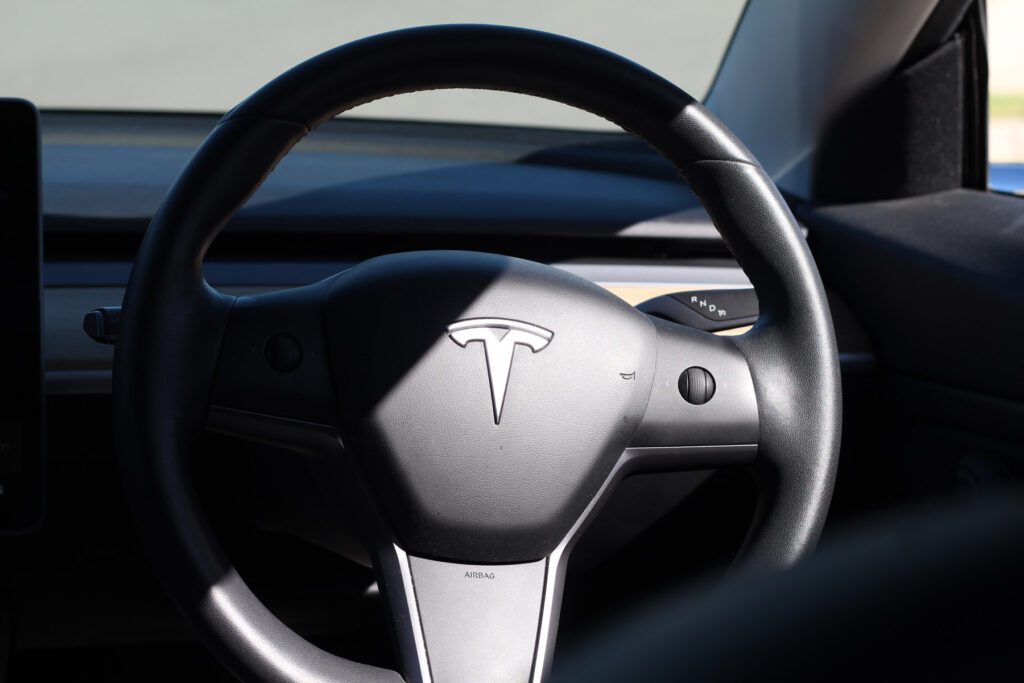

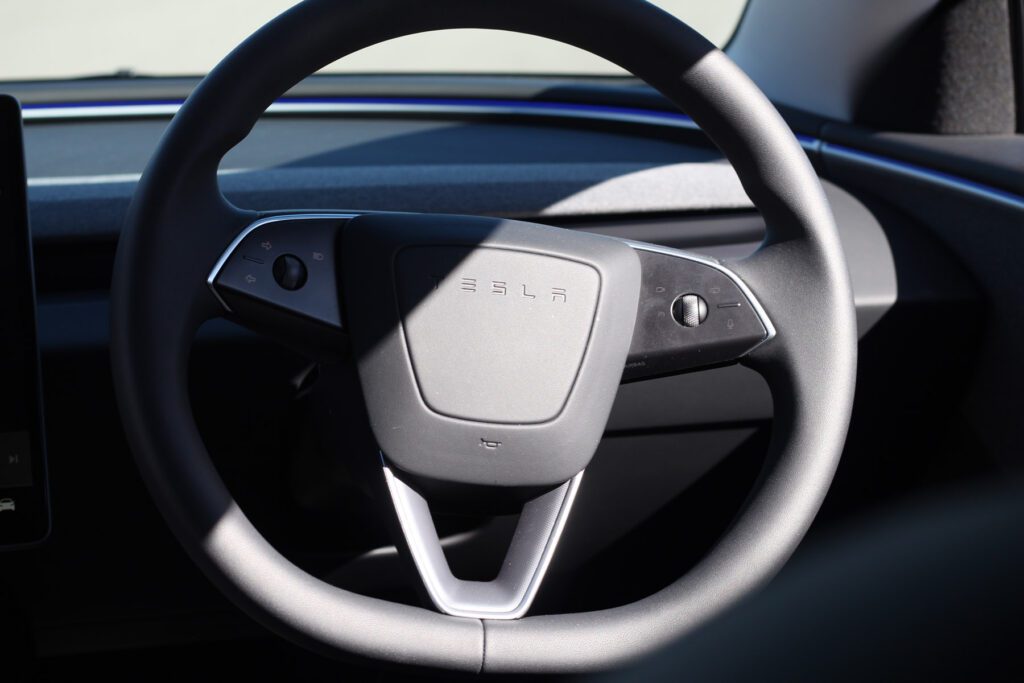

Front door panels
The front door is considerably redesigned, with new materials, new lines, a new shaped speaker and more.
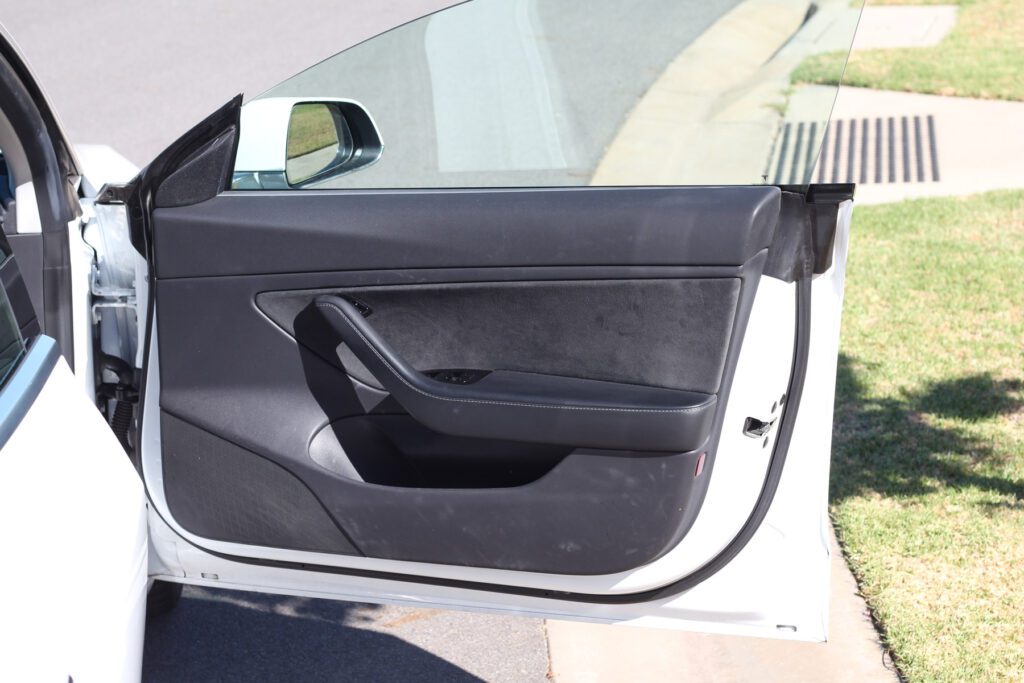

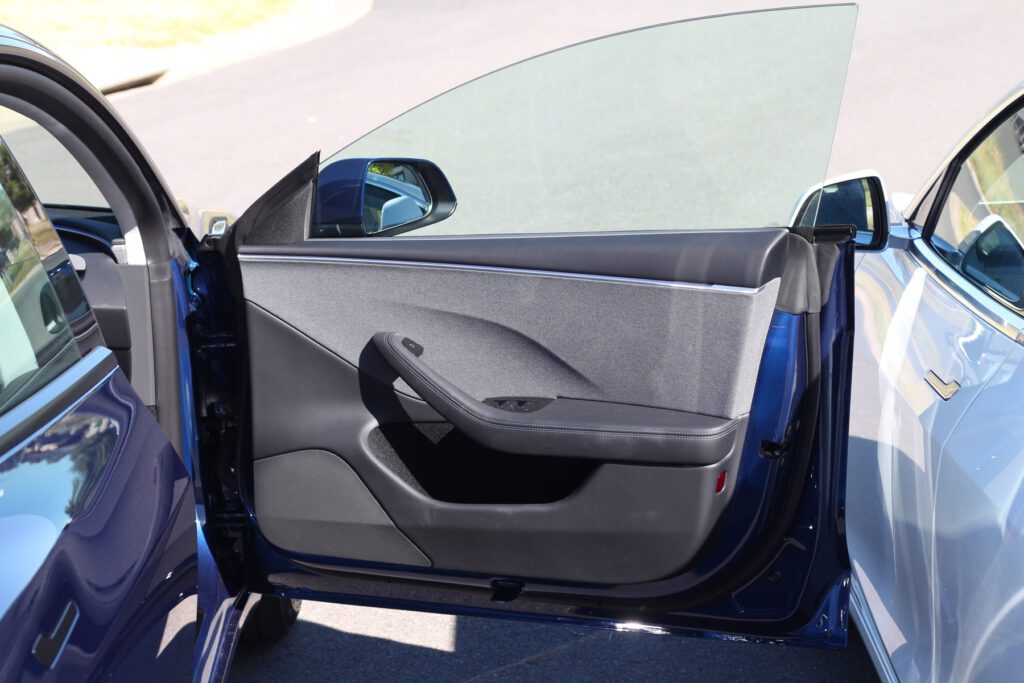

Rear door panels
The rear door got a similar design update.
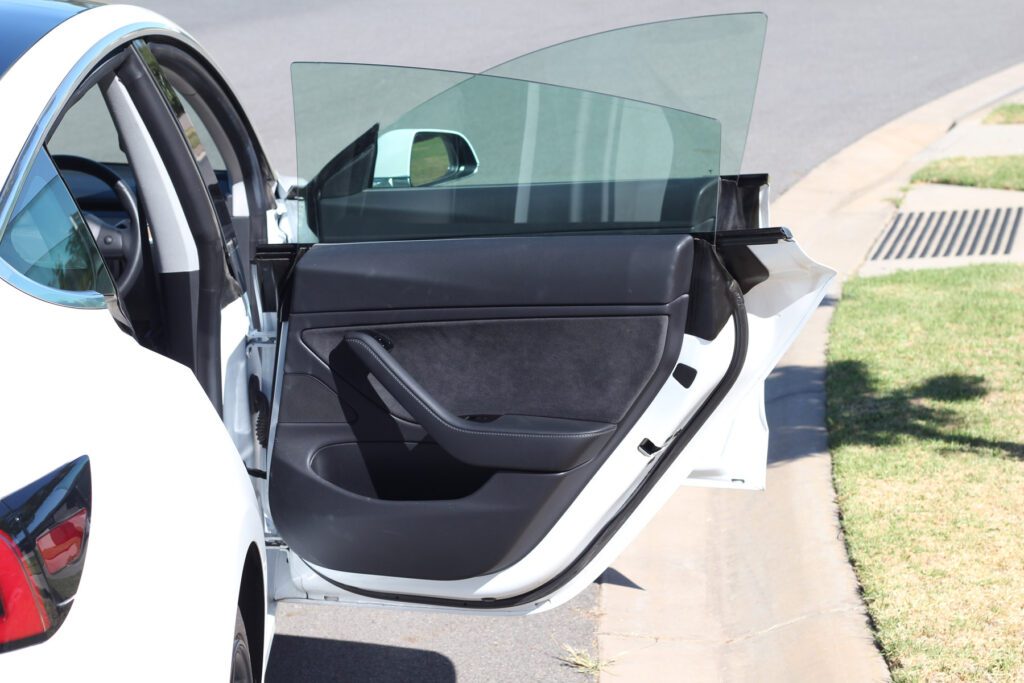

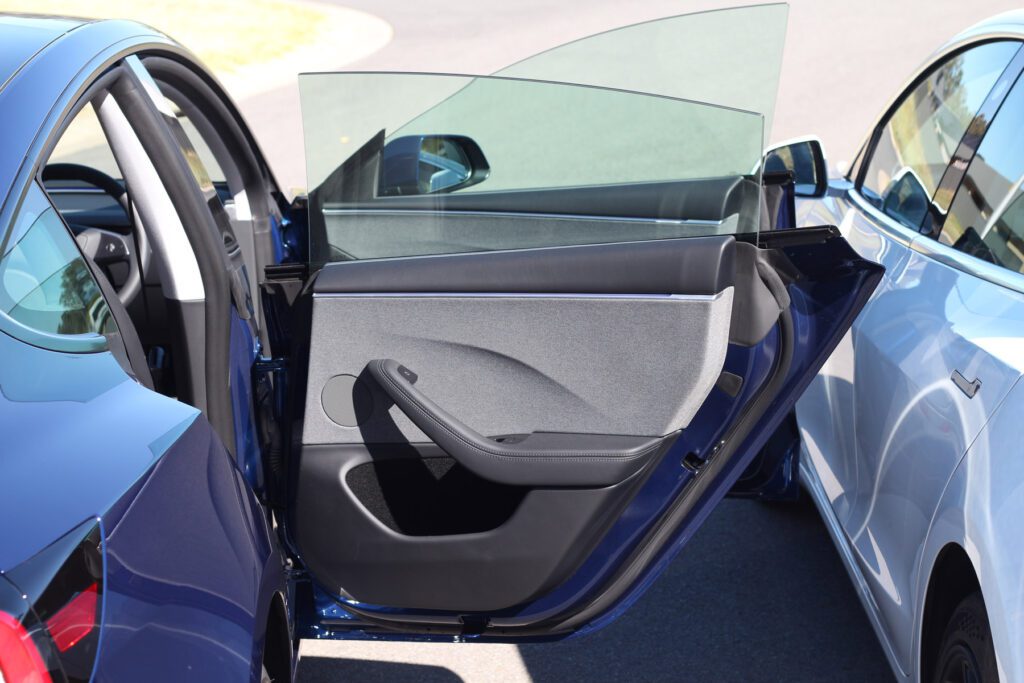

Door release button
After taking on feedback from customers (and passengers) Tesla moved to update the original door release button to feature an icon that represents the function users will get when pressing it. This is also illuminated at night.
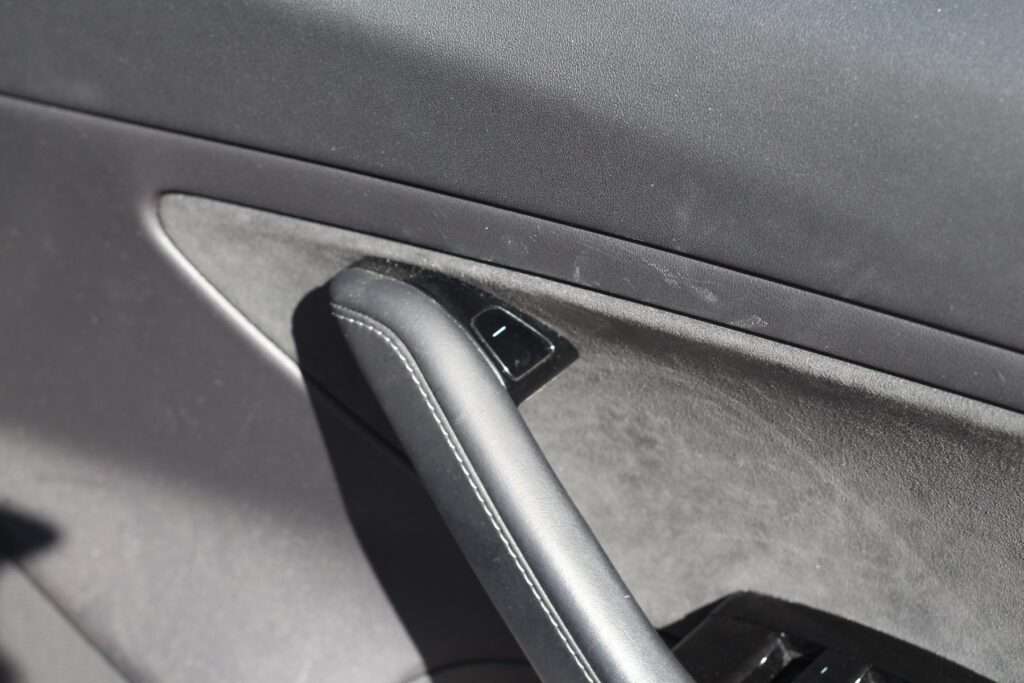

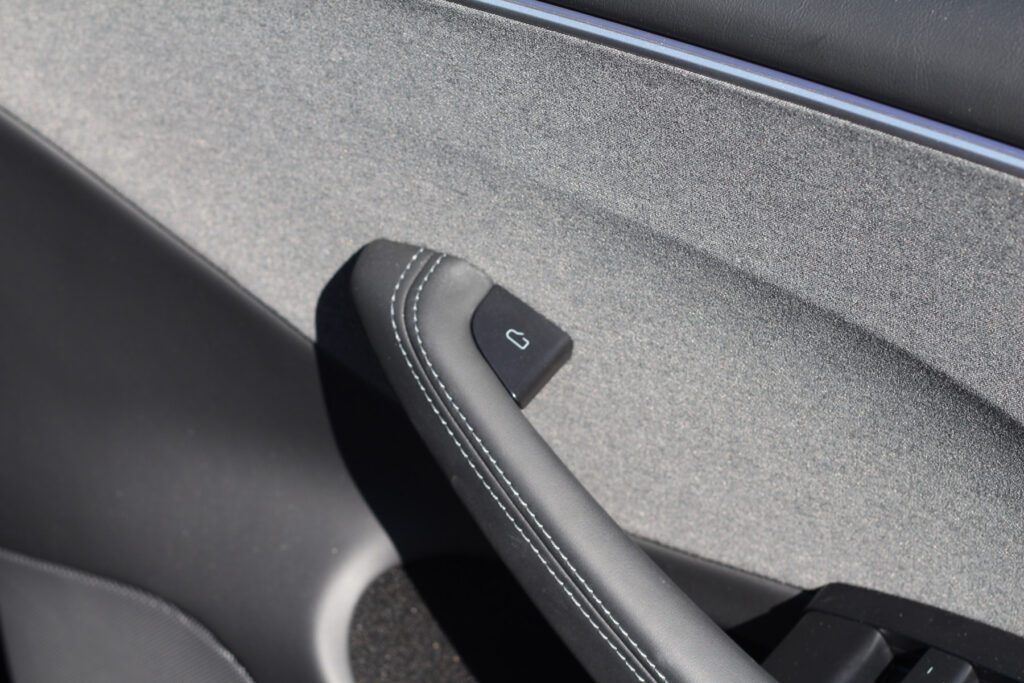

Manual door release and driver window controls
The gloss black is gone, replaced by a matte dark grey finish.
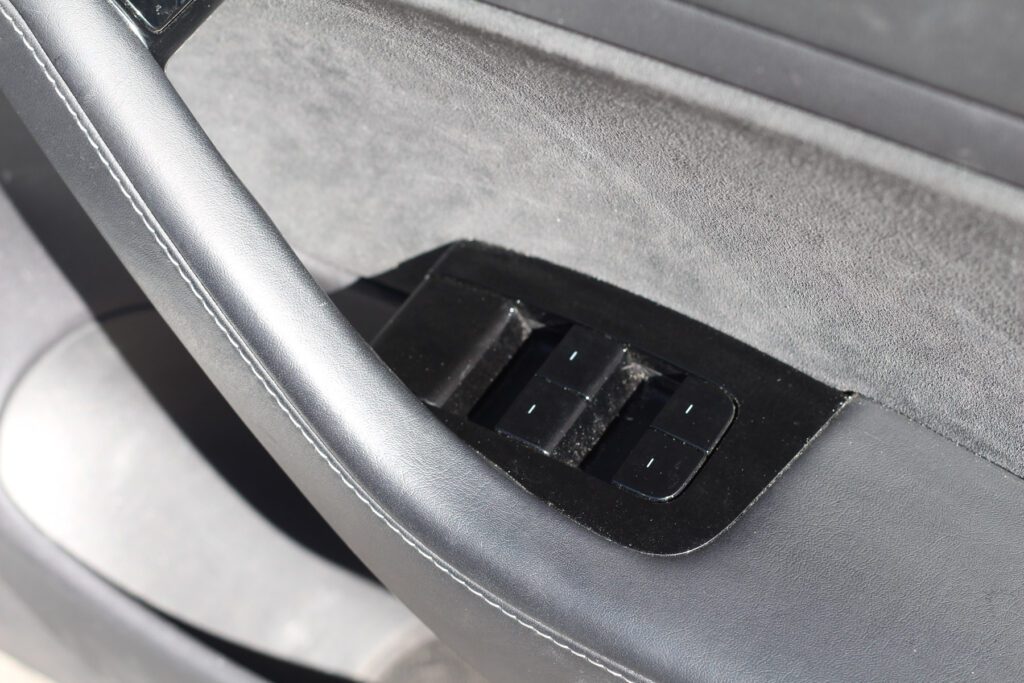

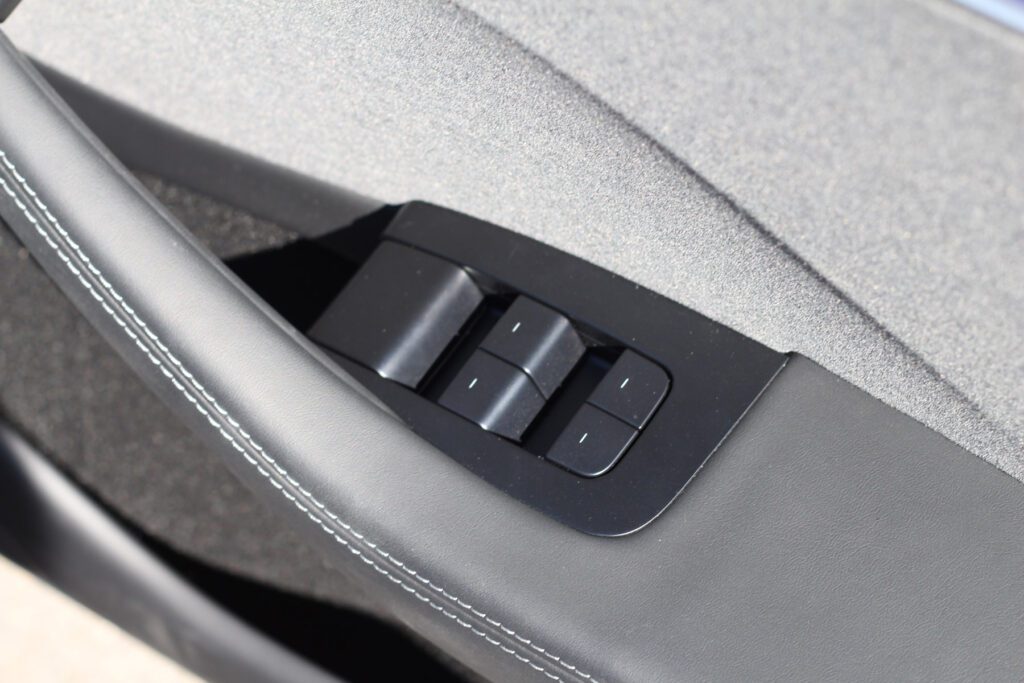

Front door storage
Now lined with carpet, the storage here will still fit a decent-sized drink bottle.
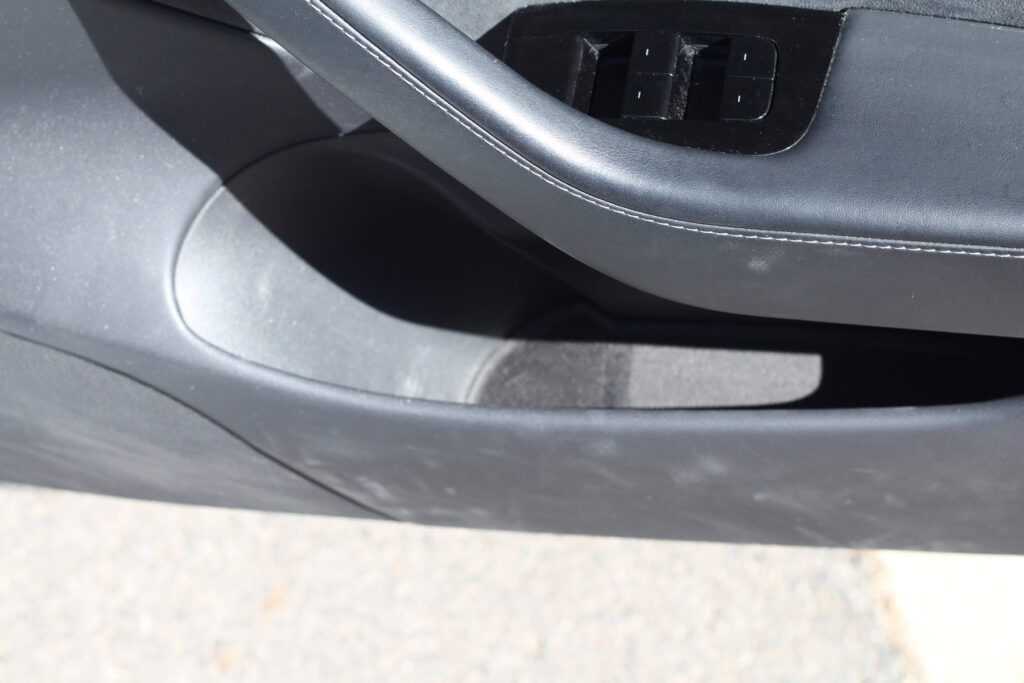

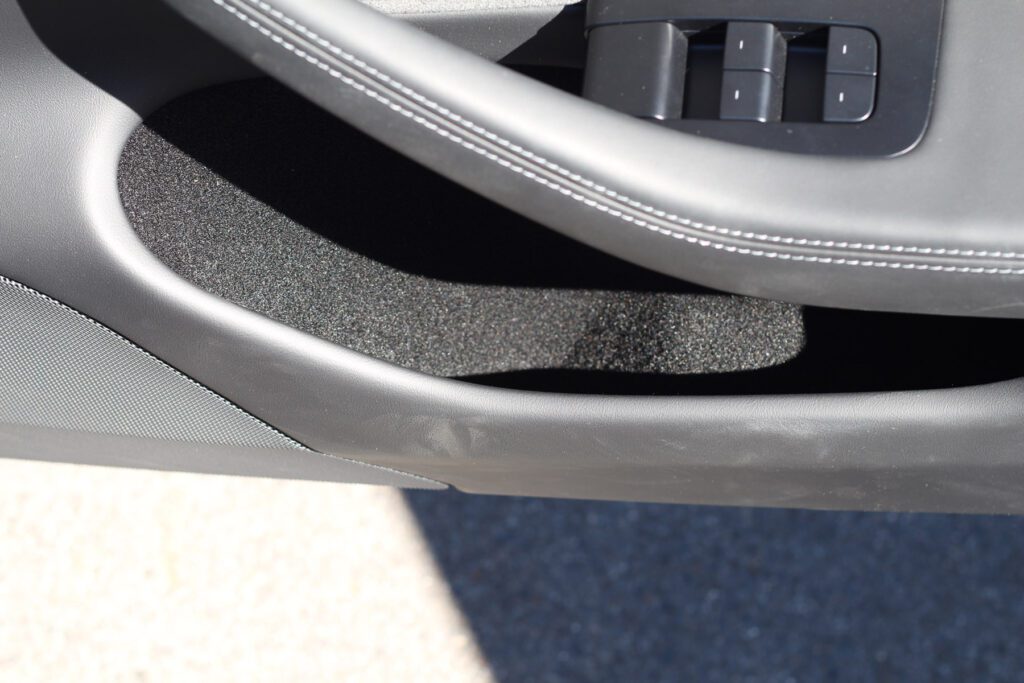

Door Sills
The updated door sills are now black, rather than the initial chrome. The door also features a new latch to ensure the door is sealed to reduce noise in the cabin.
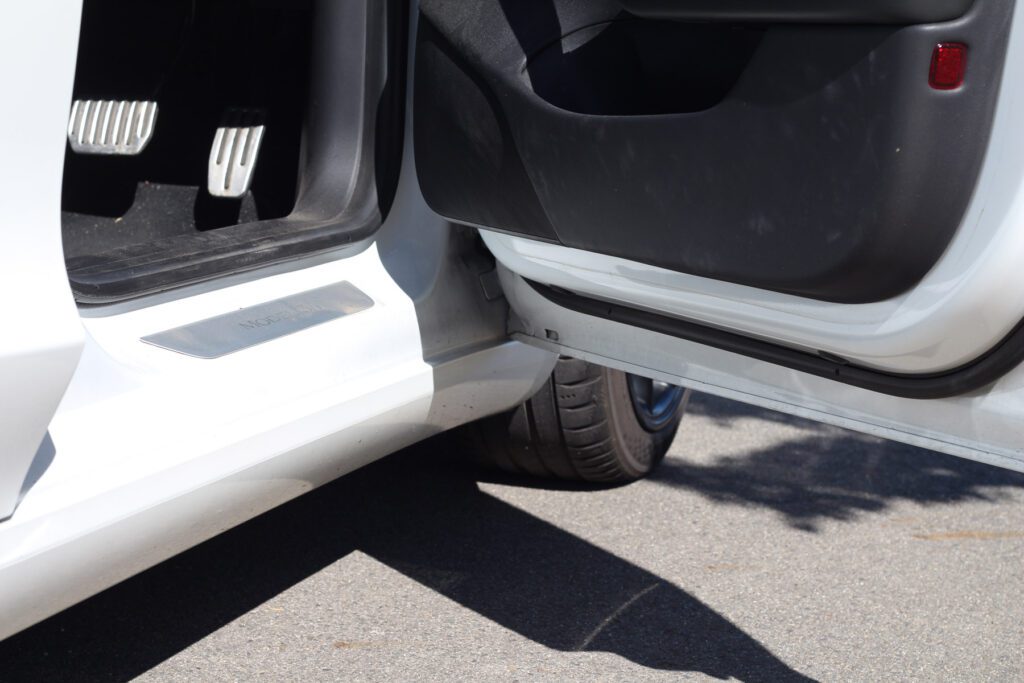

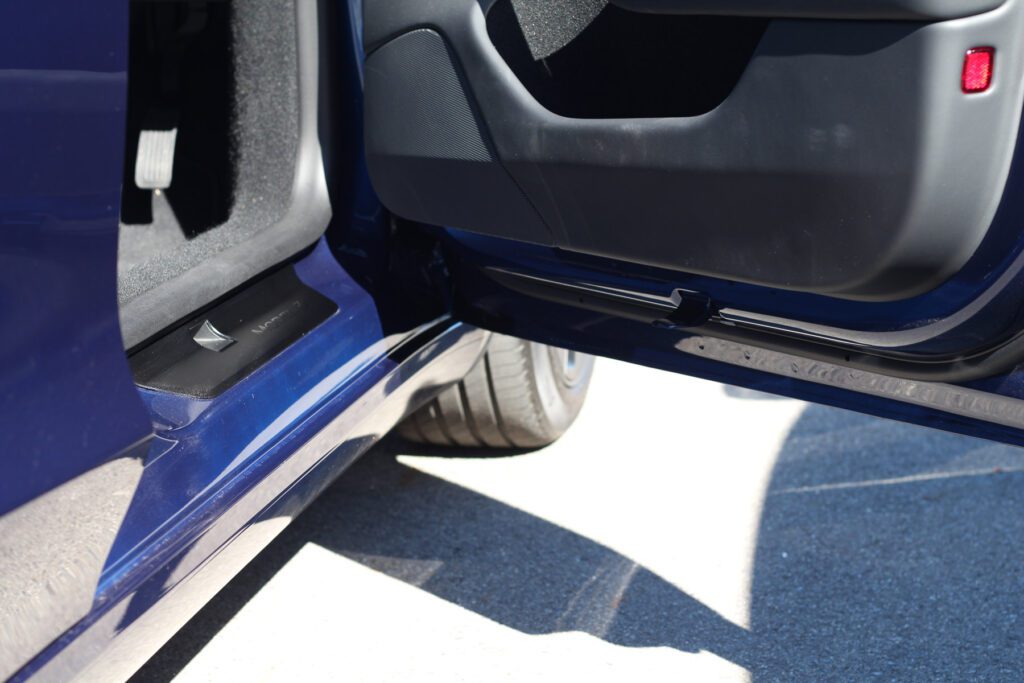

Rear seat support finish
Beside the rear seats is an area where kids tend to be a surface kids put their feet and their shoes on as they enter and exit the vehicle. While hard plastic may have seemed like an obvious choice, being easy to wipe down, it could and did scratch easily.
This has now been replaced by a carpeted surface, which actually works well as it flows into the footwell and looks more integrated. While more fabric, this is likely easier for Tesla to install, being one piece to install, rather than three.
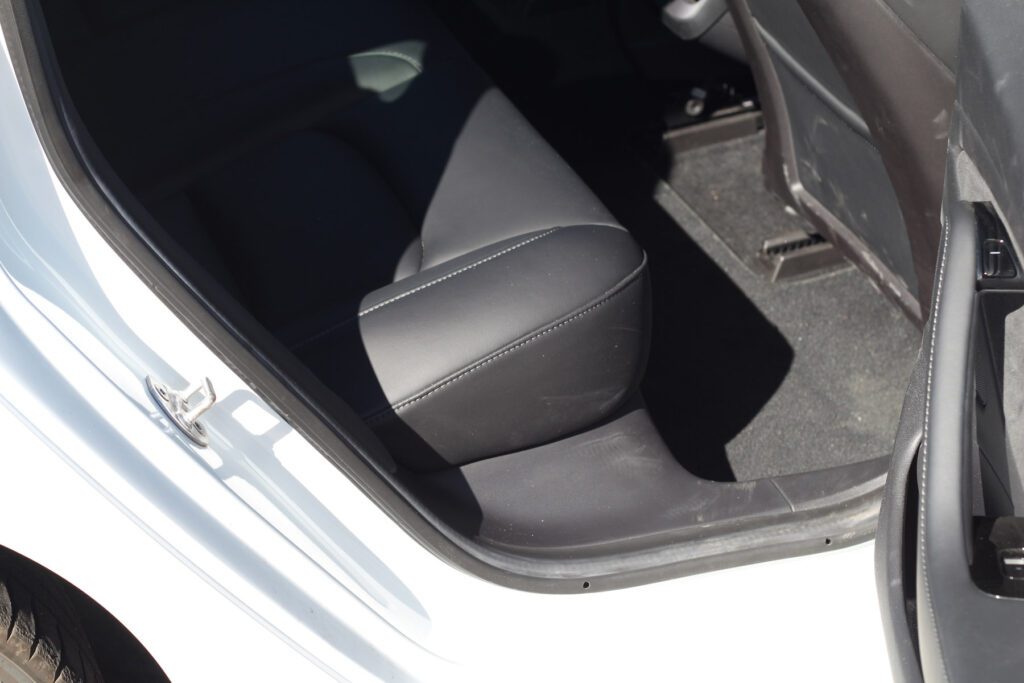

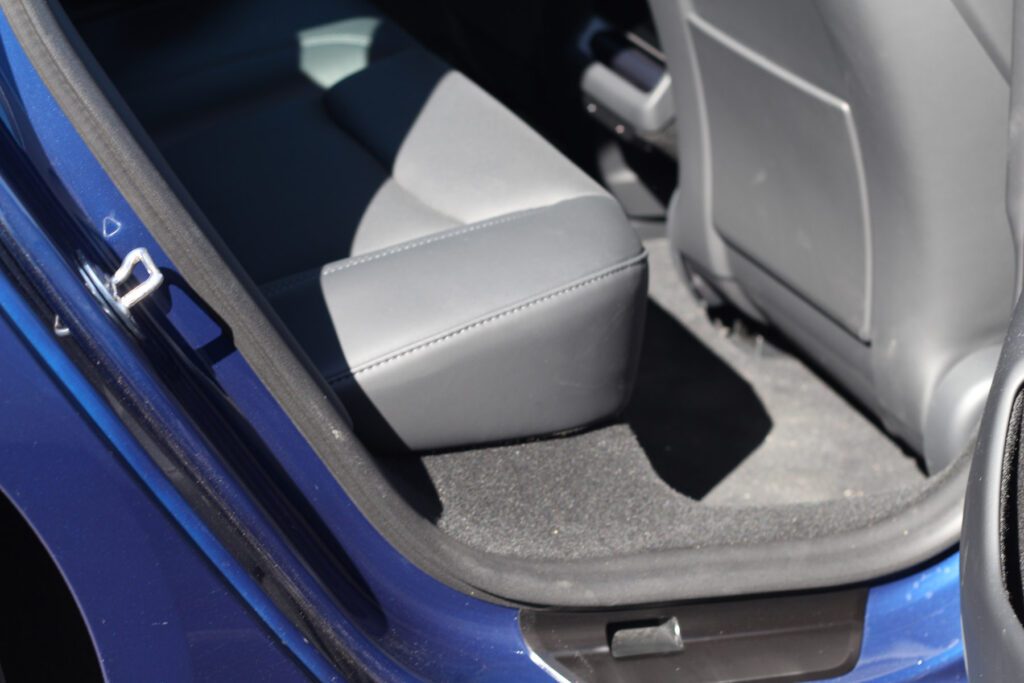

Center console
Wireless phone charging was originally an aftermarket exercise but is now integrated into the console. Gone is the glossy black finish, now replaced by a dual-sliding design that covers the drink holders as well.
The 2024 model now moves the key card reader into the phone charger location, rather than in front of the armrest.
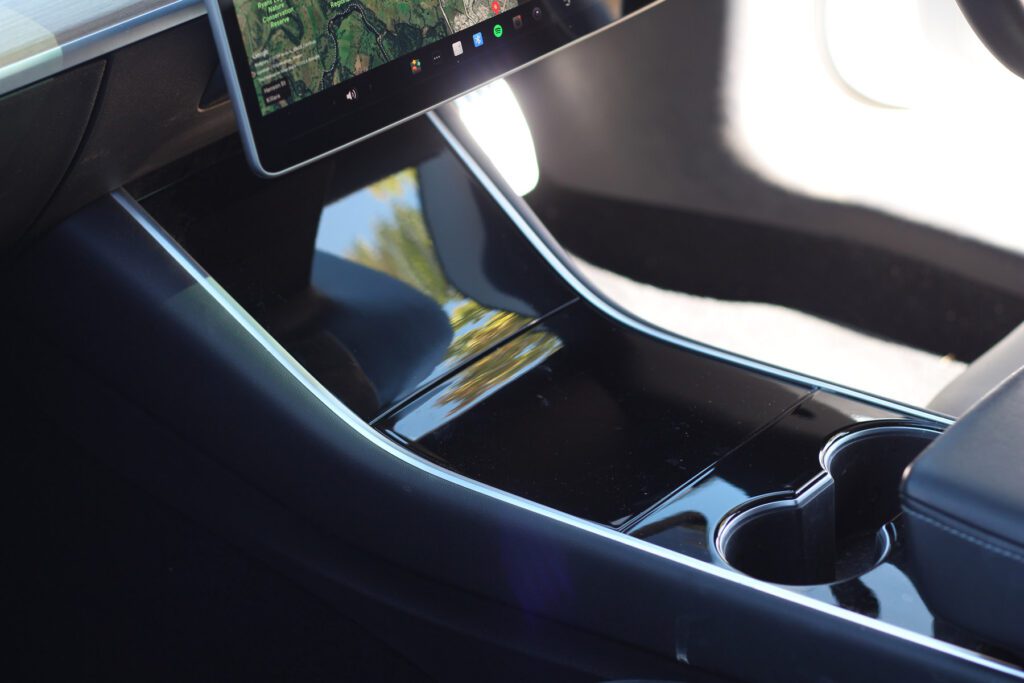

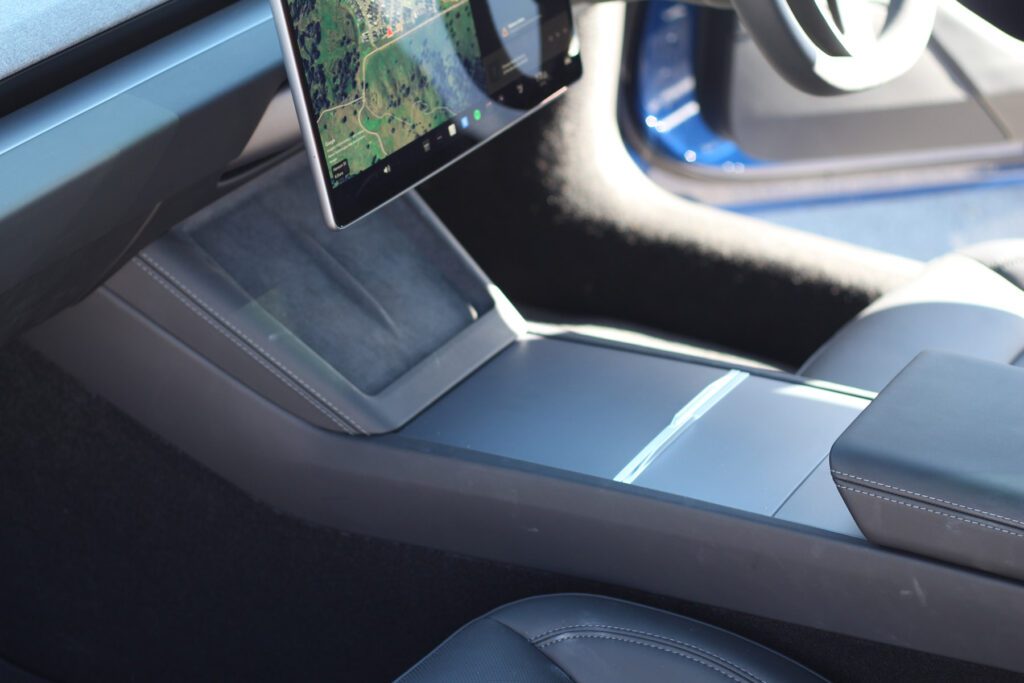

12V port relocated
If you’re someone who needs power accessories in your vehicle, Tesla’s 12V port also grew legs and moved locations. The original Model 3 had it in the armrest storage, while the refreshed Model 3 now has it in the front storage bin of the centre console.
Personally, I think this is a far better location, as I had tried using a 12V USB plug that extended too far and blocked the console trays from sitting where they should. By placing the 12V port, Tesla gets to run less wiring and provide more space for various 12V plugs and accessories. If it’s a 12V inverter you’re trying to run, there’s enough space to house this in the centre console and you’d be ready to power your laptop, esky, bike pump or more.
There is actually a half-shelf that extends really deep into the front storage area and while I’m not sure exactly what you’d use this for, accessory makers have a great ability to levearge any available space.
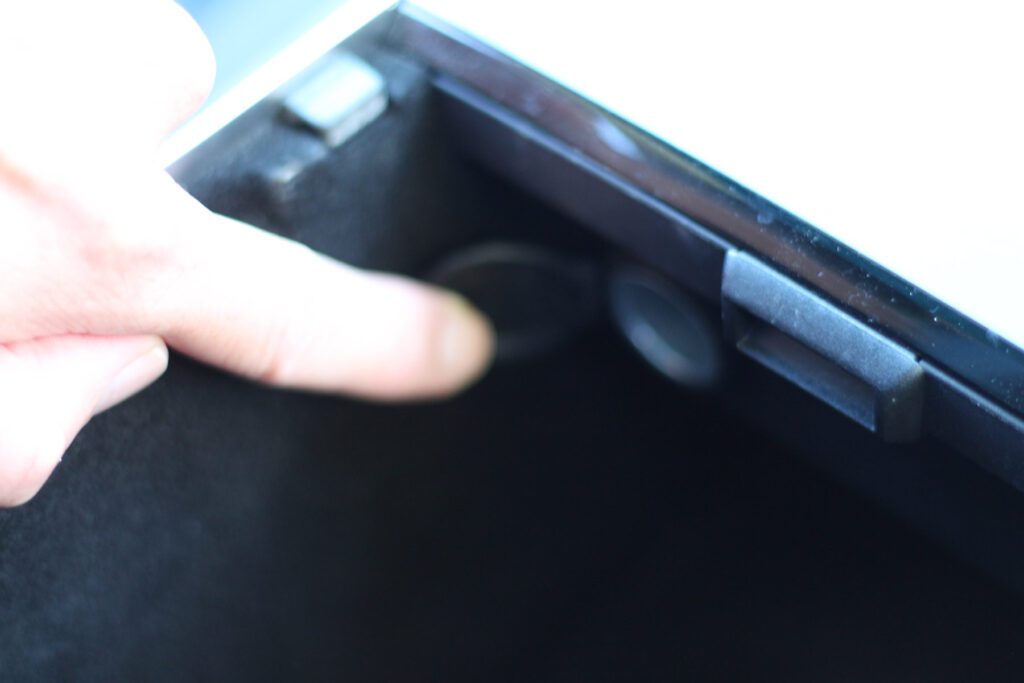

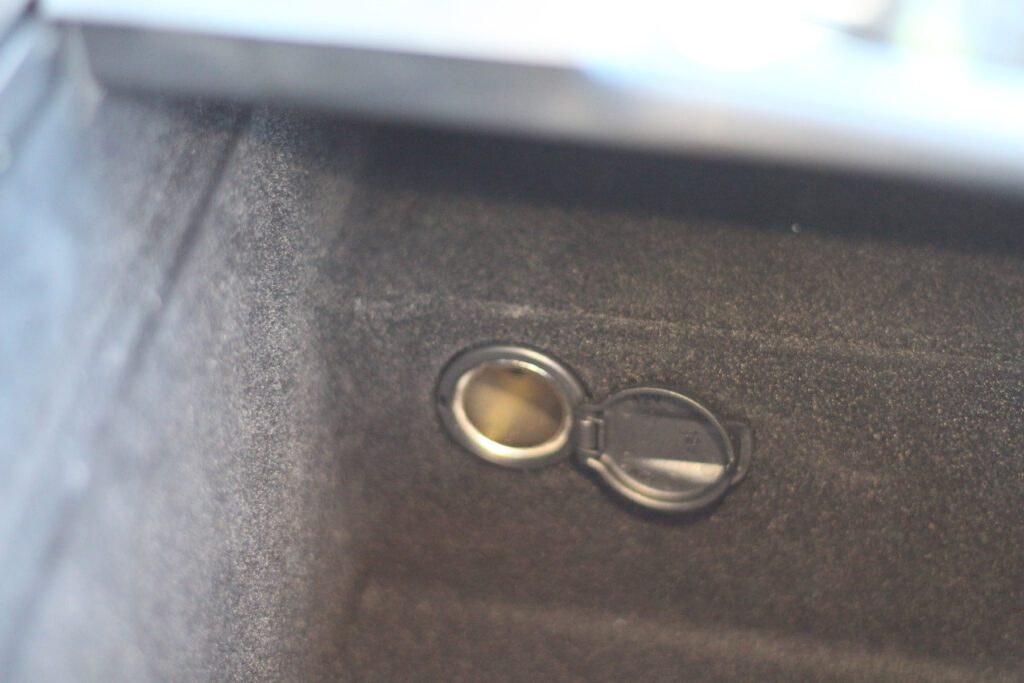

Updated armrest
Even the armrest didn’t escape the wrath of the designer’s pencil. The stitched leather-wrapped (now vegan leather) armrest, but the profile has been updated.
The first Model 3 features a hardware design to clip in and secure it in place, but Tesla obviously realised that gravity would do all the work and ditched the physical connection. Placing and removing items from the console storage under this armrest is now easier and faster than ever.
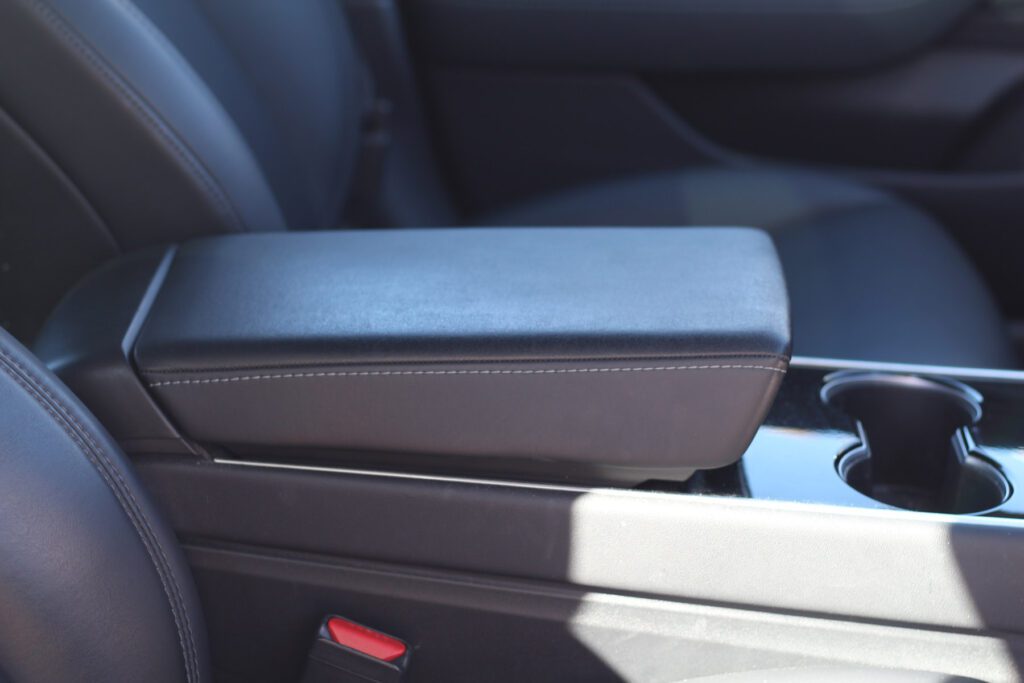

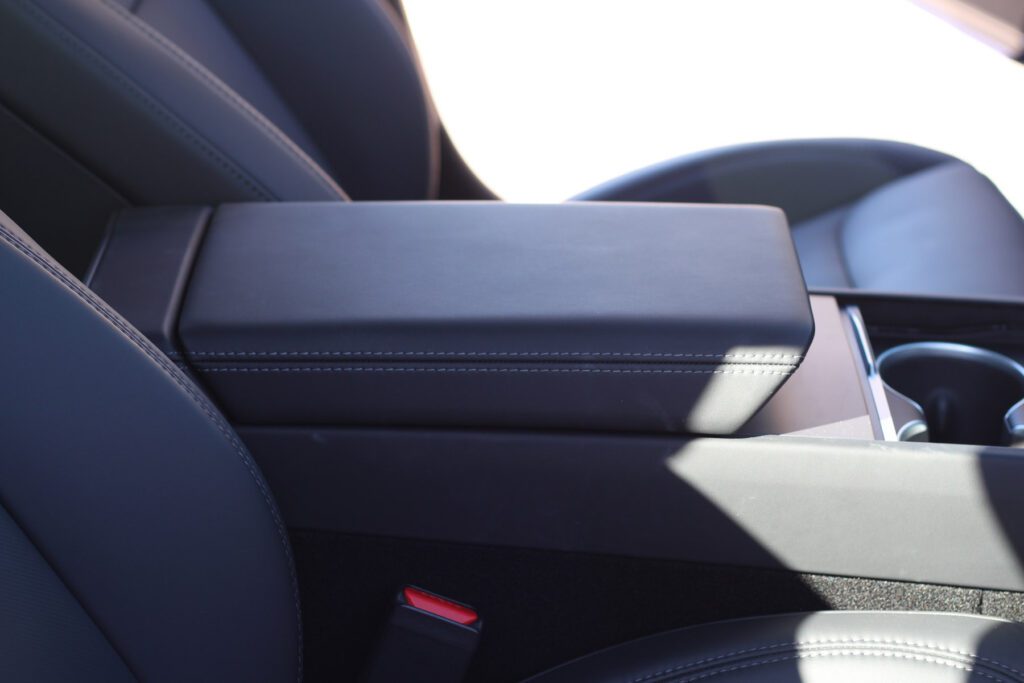

Seatbelt
Surely something as rudimentary as the seatbelt buckle wouldn’t need changing, nope, that got changed as well.
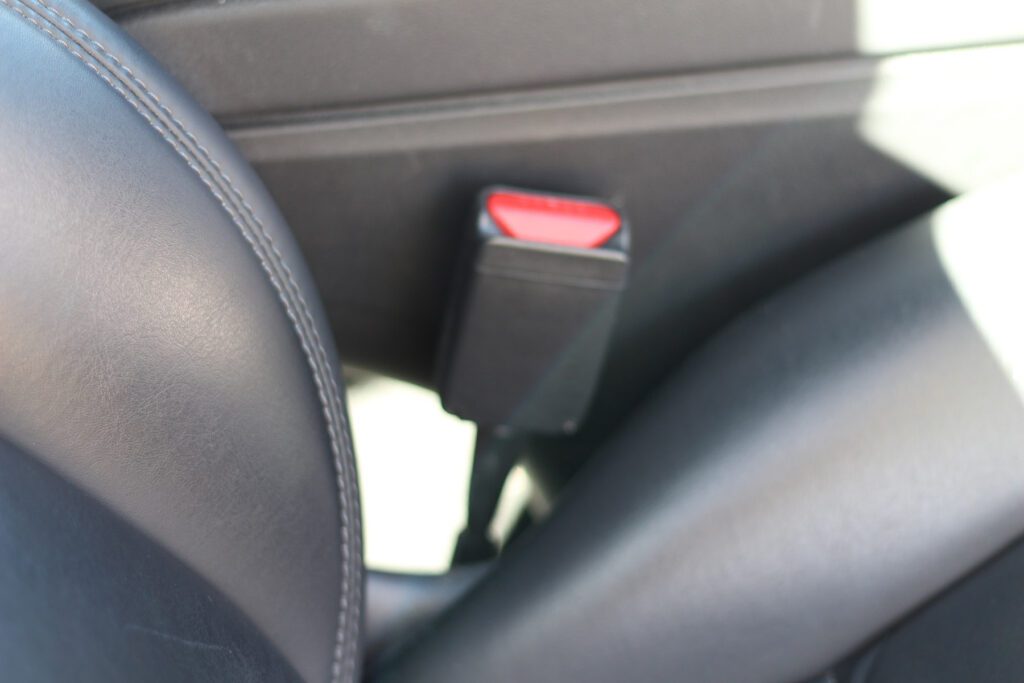

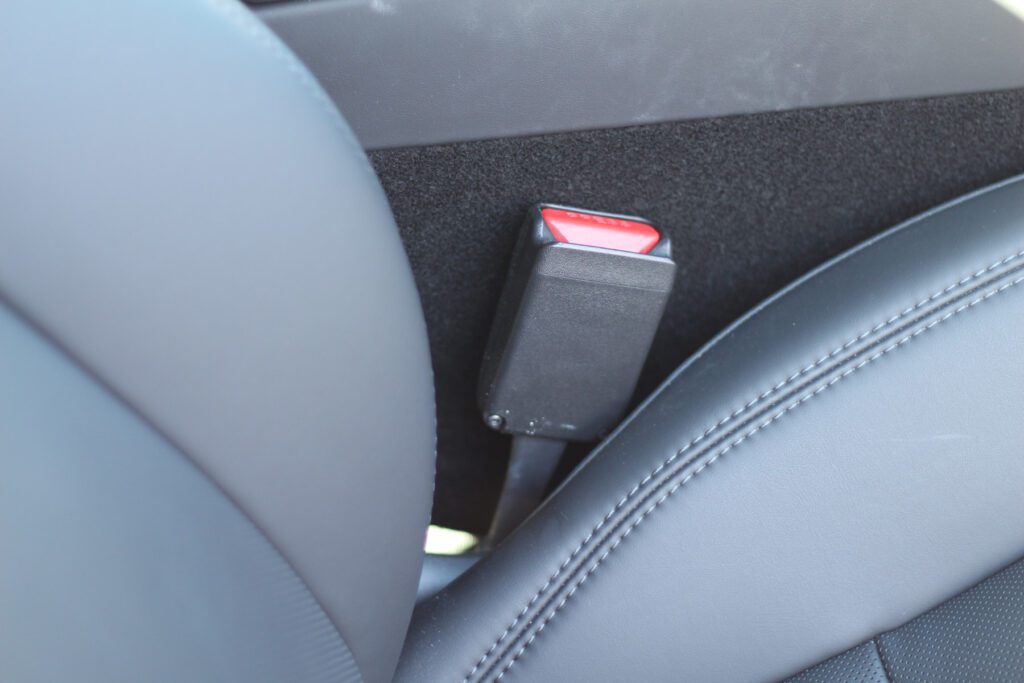

Updated Display
Your main interface to your car is the display and while the size hasn’t changed, the bezels have, they are now much thinner than the original which reflects what has happened in the display industry over the past 5 years.
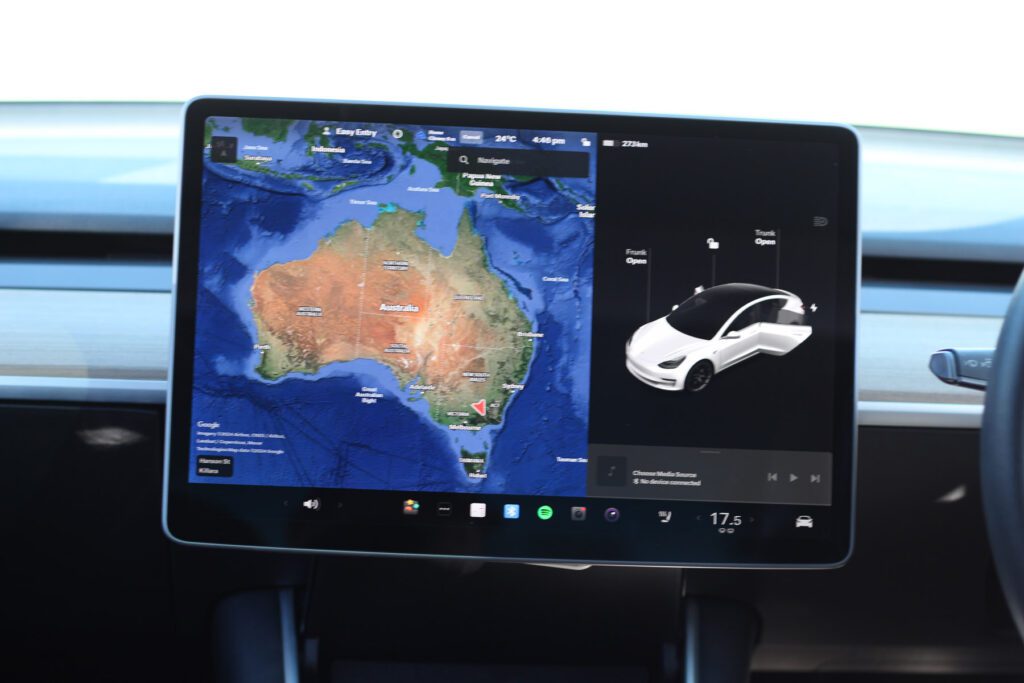

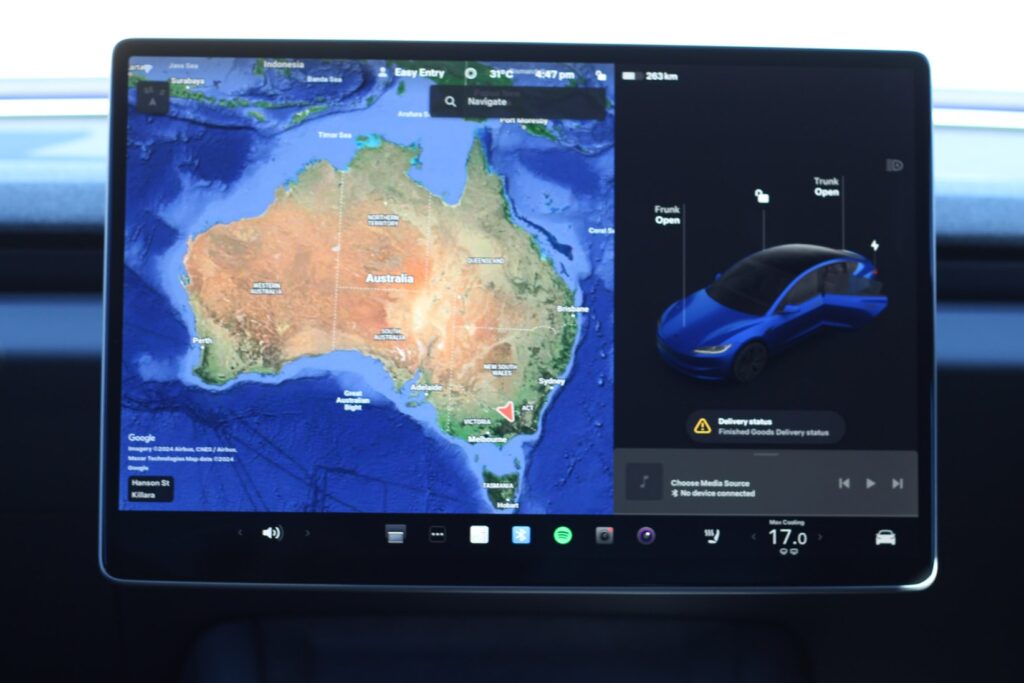

Dash Trim / AC vents
Gone is the wood trim, despite its temporary expansion to the door panels, now replaced with a fabric finish. We’re told this is changeable, but as yet, there’s no other alternative than the OEM one included.
It may not be obvious, but the ventless airflow has been completely redesigned to allow for better airflow to the driver and occupants.
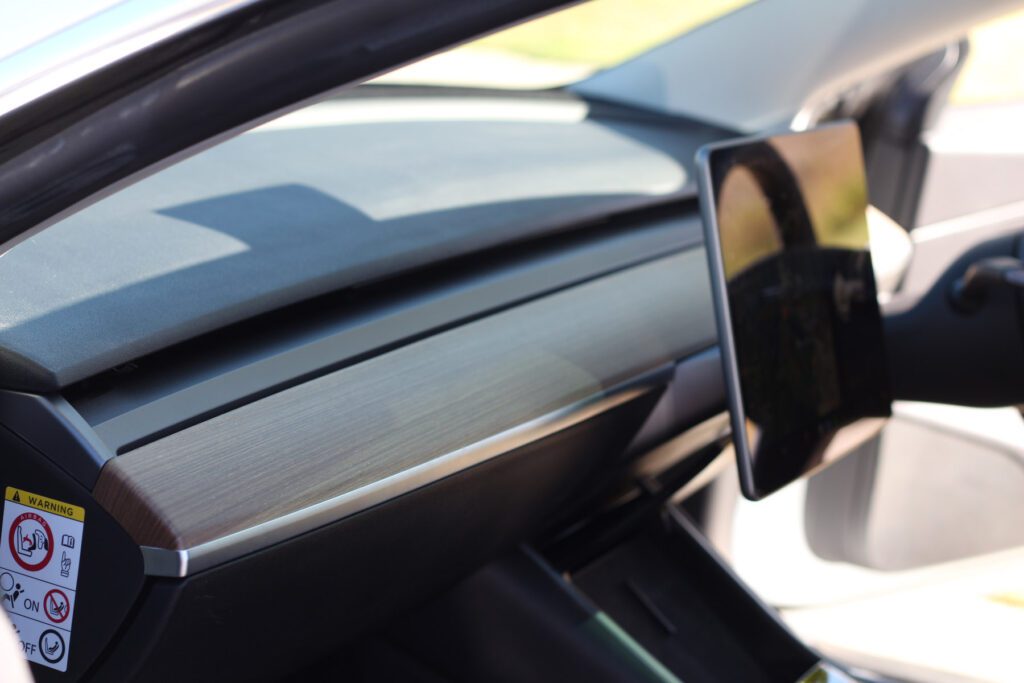

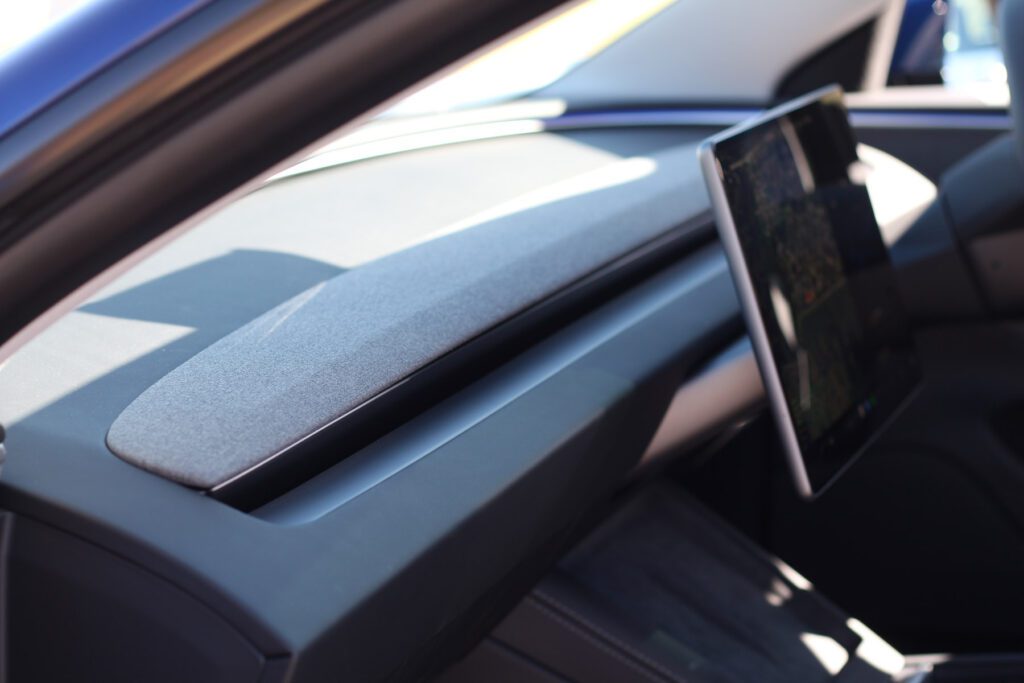

Glovebox
The new Model 3 glovebox is considerably smaller than the OG, it does now house a USB port for the Dashcam recordings. It used to be a great place to store the lift jack pods, but now holds little more than a credit card.
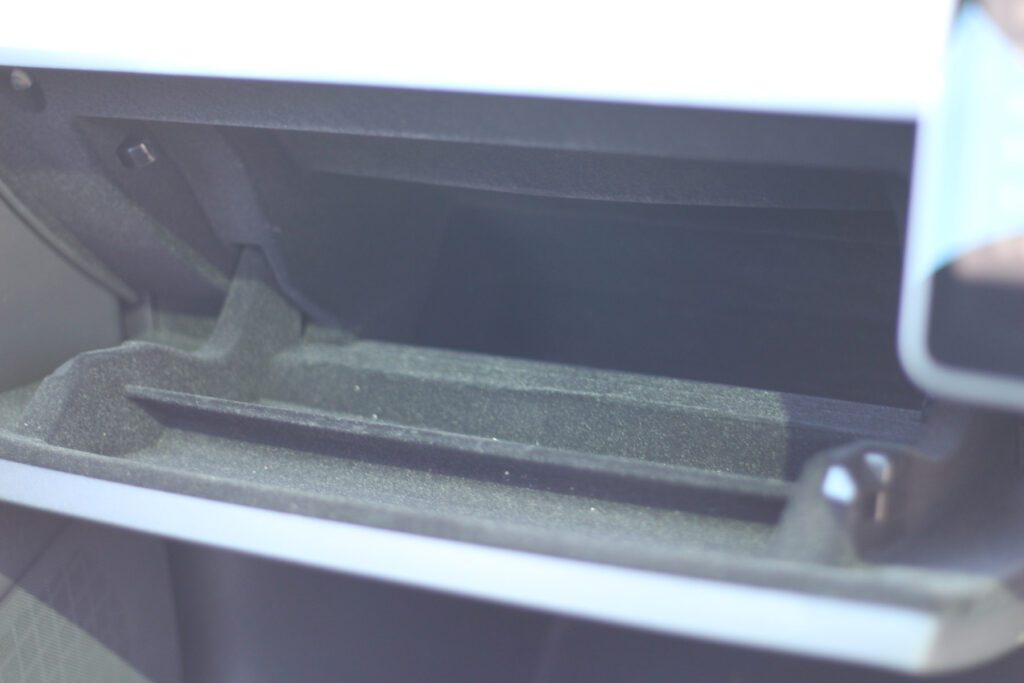



Interior lights
Initially, the interior lighting was done using physical buttons that you pressed to activate (or via the touchscreen), this is now replaced by touch-sensitive lights. While these are a little less satisfying to press, they are likely more reliable.
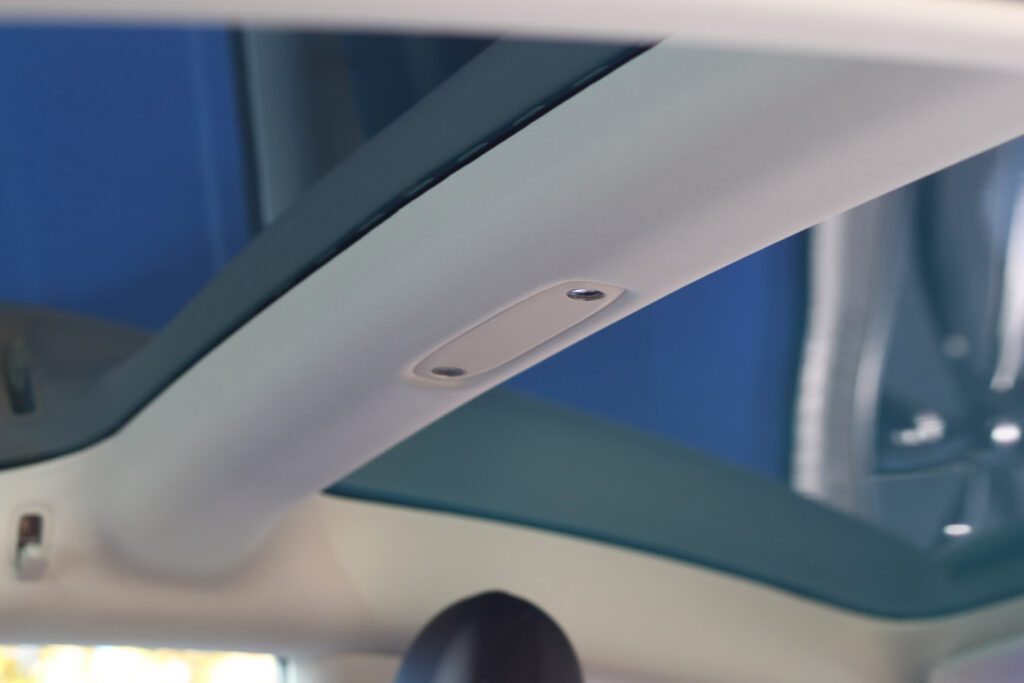

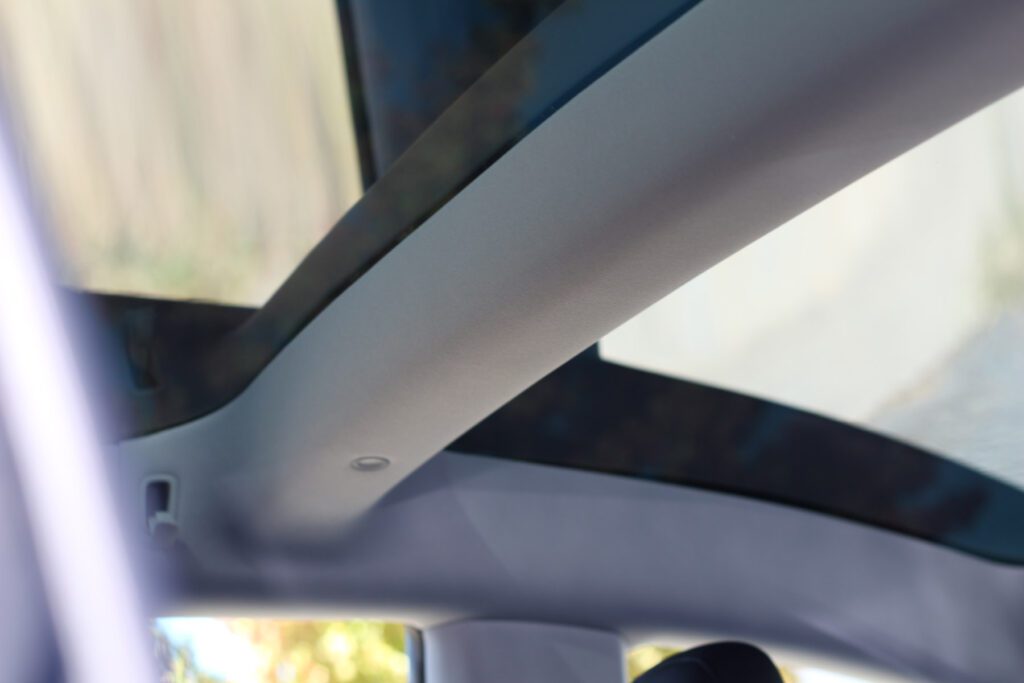

Additional Speaker
While Tesla is busy removing parts, they actually added one in, an additional speaker integrated into the centre cross member.
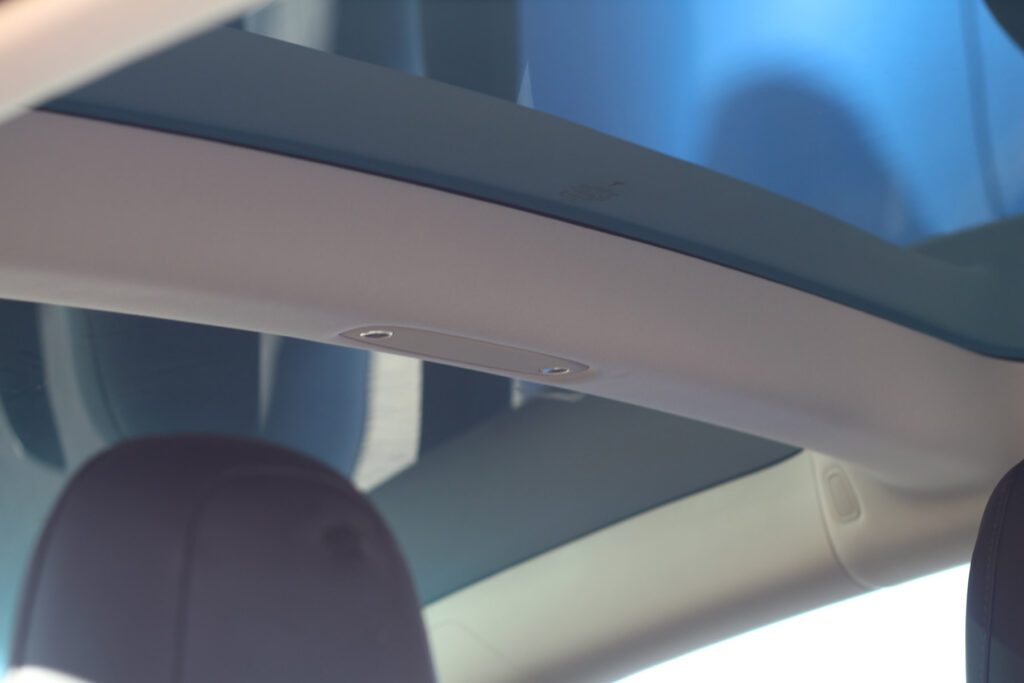

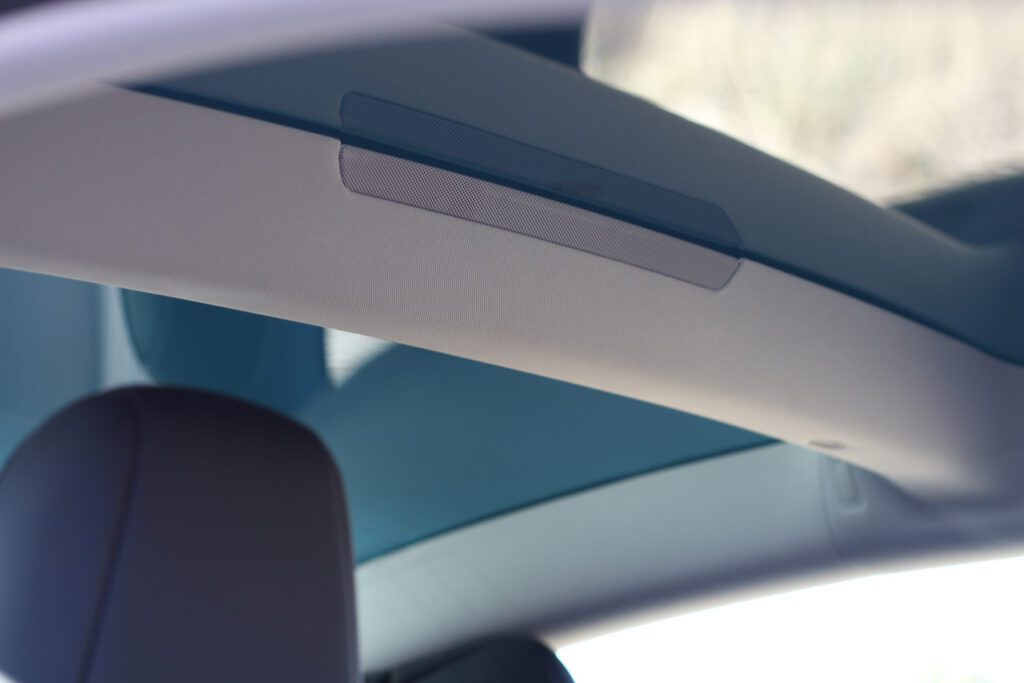

RGB Strip lighting
Owners can now customise RGB LEDs that run the whole width of the car and stretch across the front doors and into the back row. This is a nice touch but only allows for a single colour at a time (at least for now).
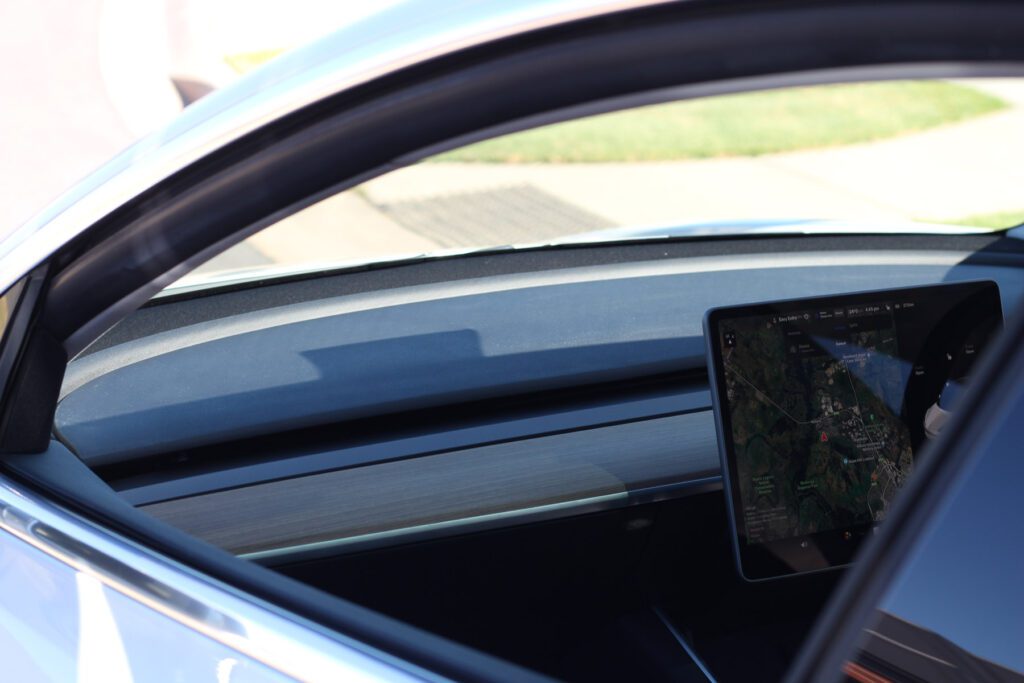

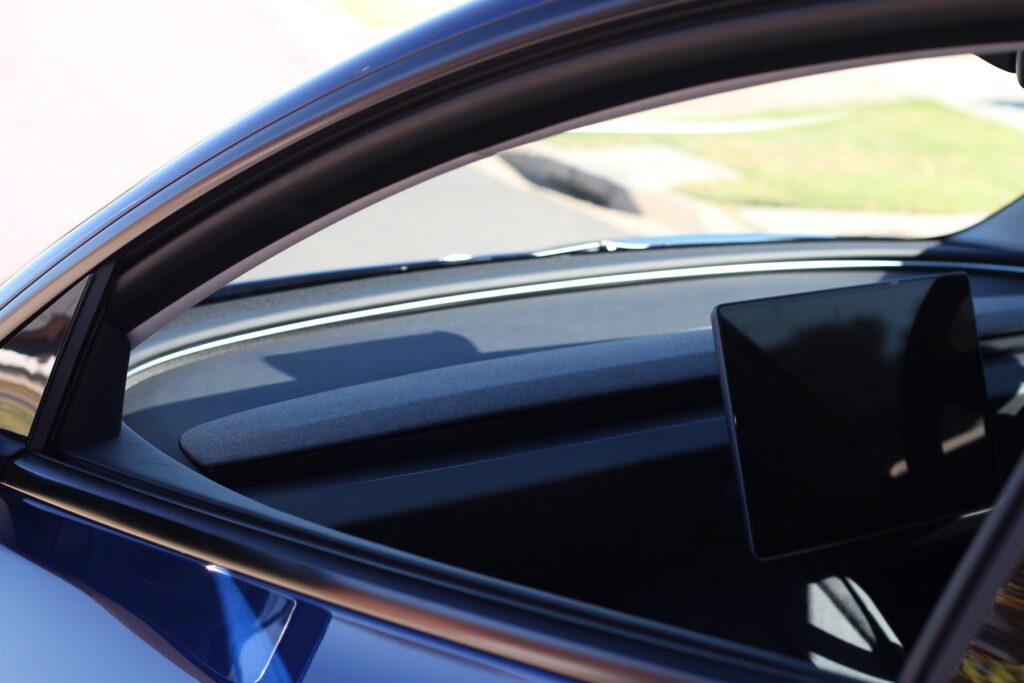

Rear armrests
The rear armrest is now much longer, as the whole centre seat folds down, rather than just a portion of it. The drink holders here also feature the added grips to ensure slimmer bottles are firmly held in place.
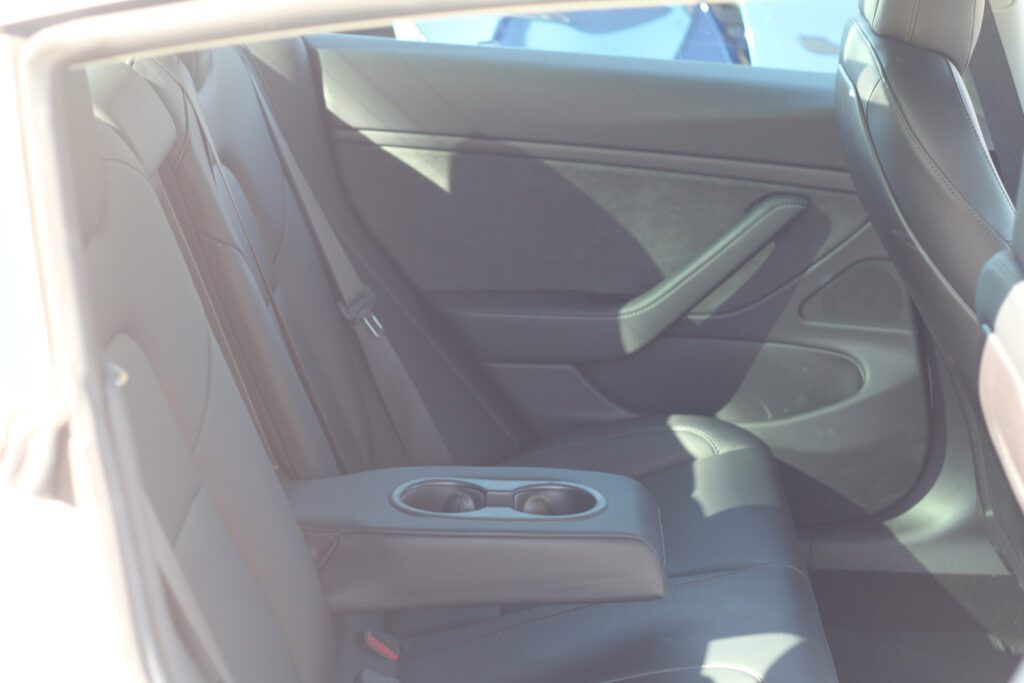

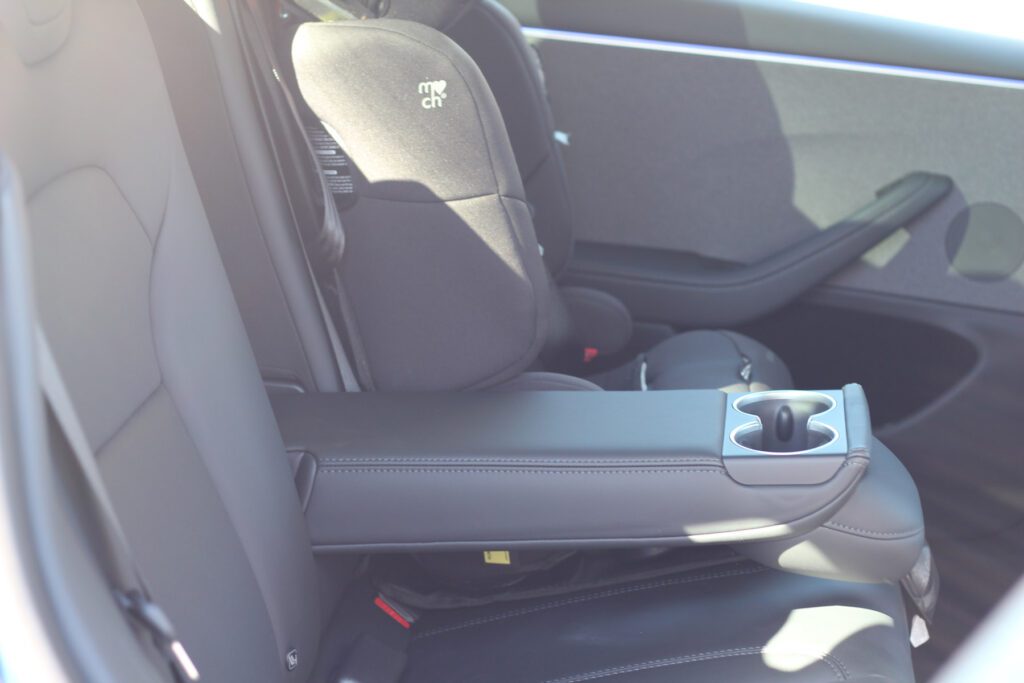

Rear vents vs rear display
While the rear passengers now get the luxury of a display of their own, the USB-A ports also make way for USB-C ports for charging devices in the back row.
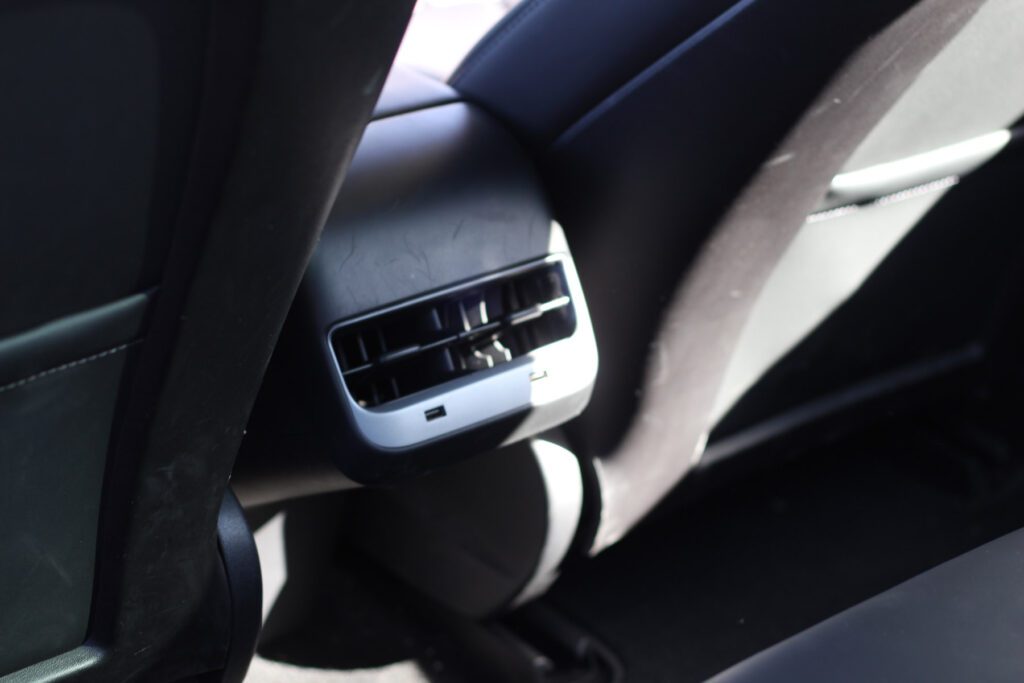

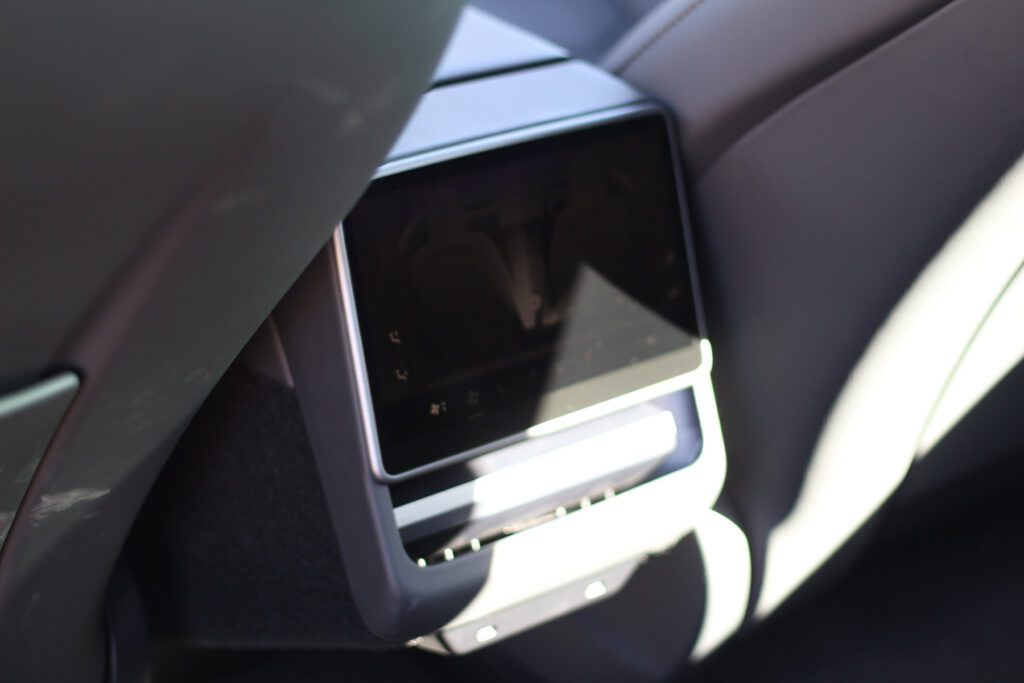

Seat pockets
This is a subtle simplification, but the design of the seat pockets on the back of the front seats has been updated.
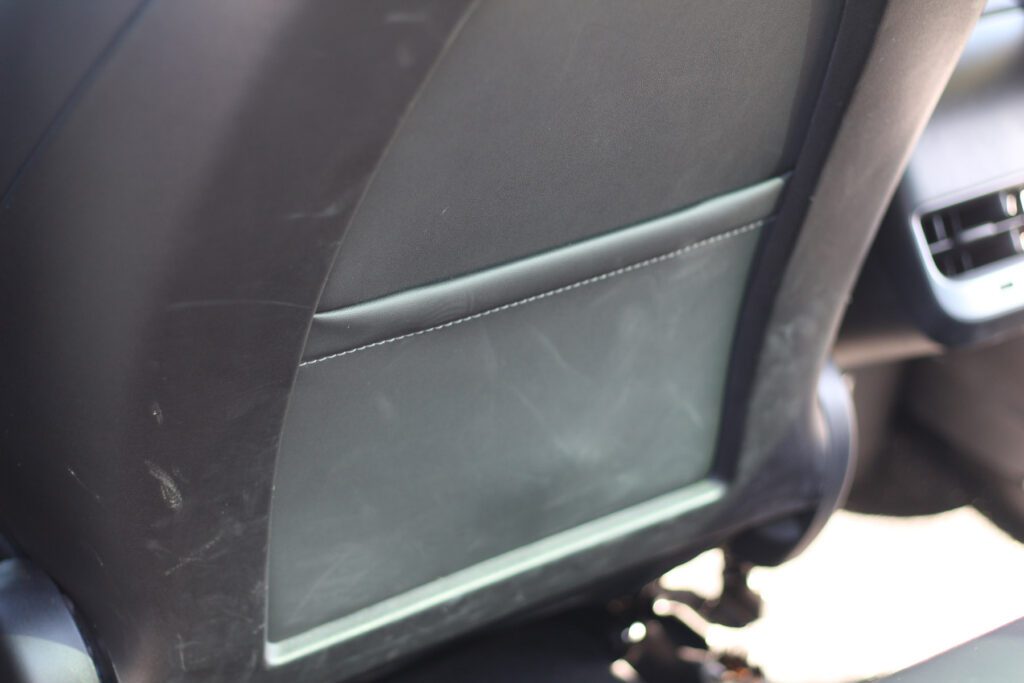

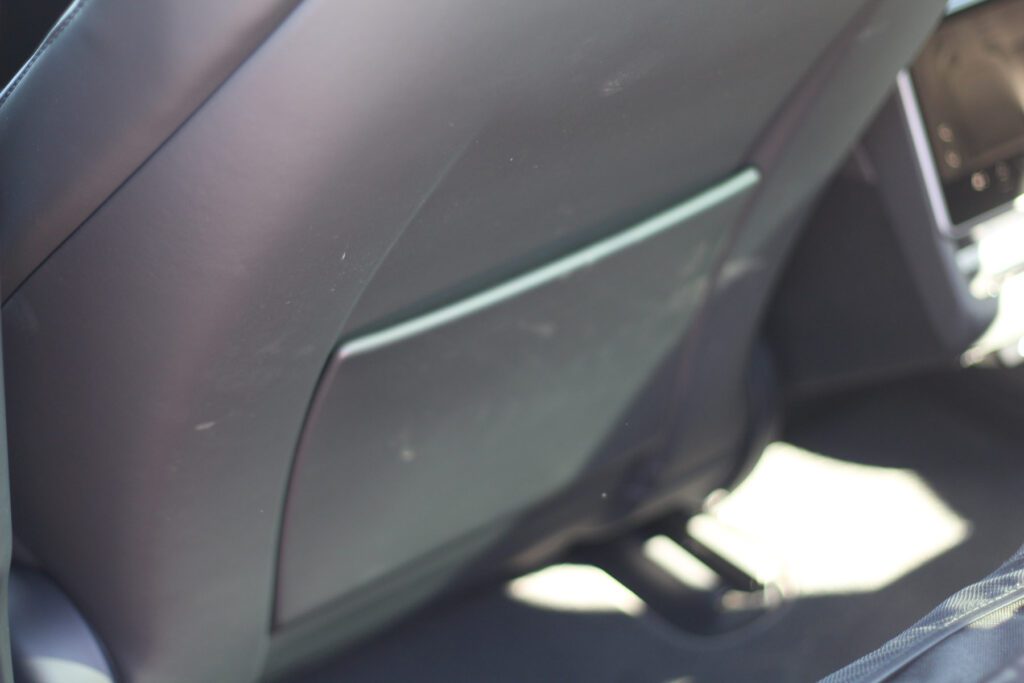

Interior Camera
As part of the camera upgrades, the interior camera is also new and improved, featuring a noticeably larger lens.
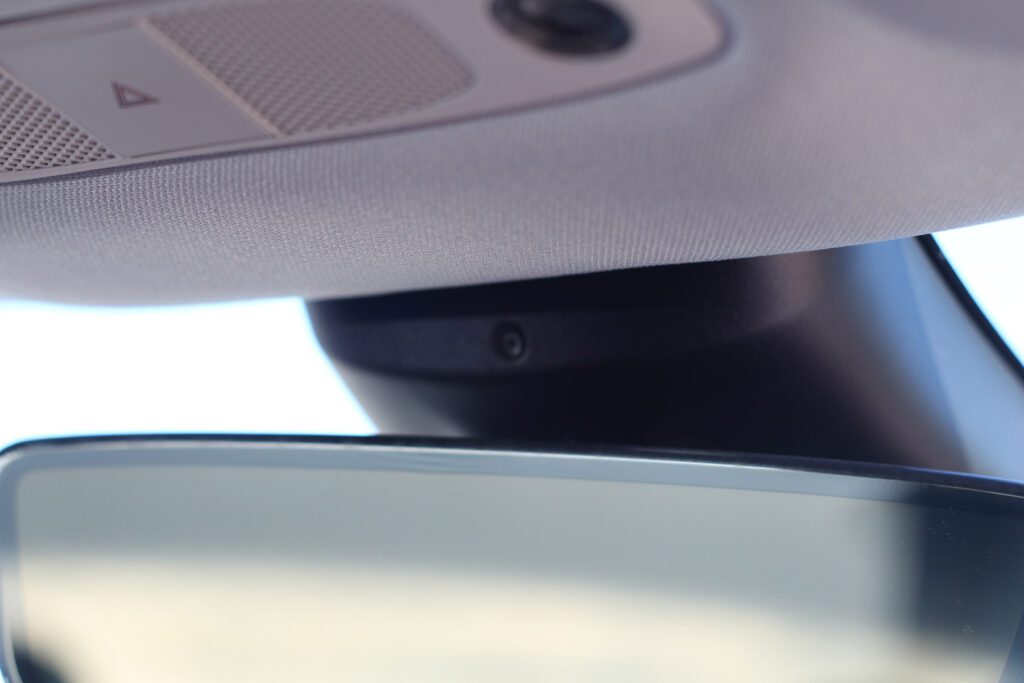

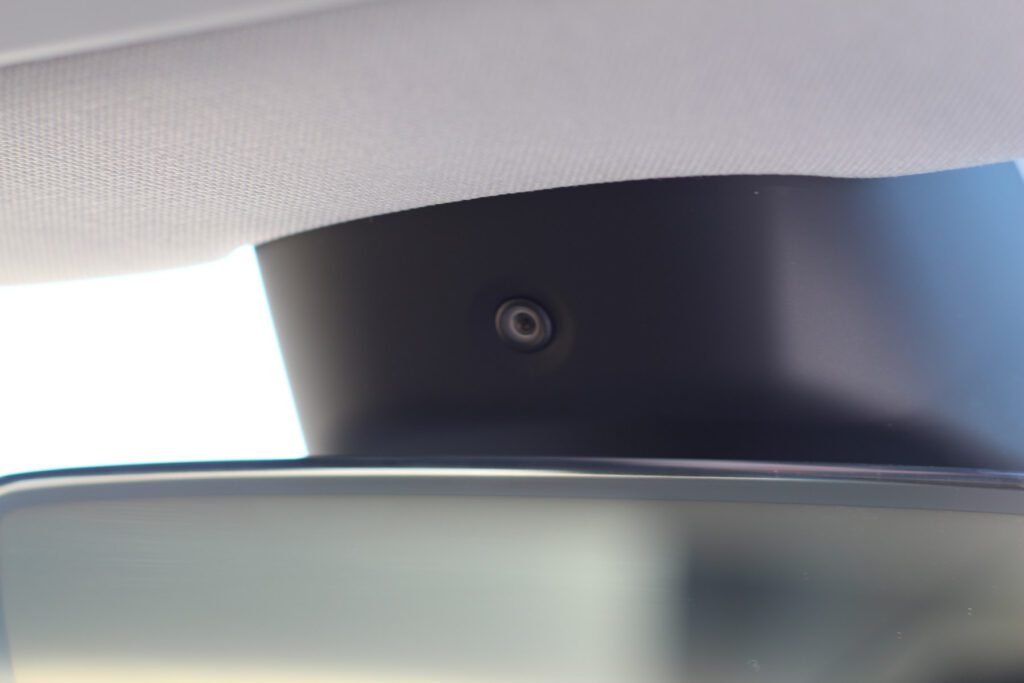

Mirror clip
The way Tesla secures the mirror to the roof liner has been updated for a while now. Having had one replaced after it came loose, the magnetic attachment is a much nicer solution.
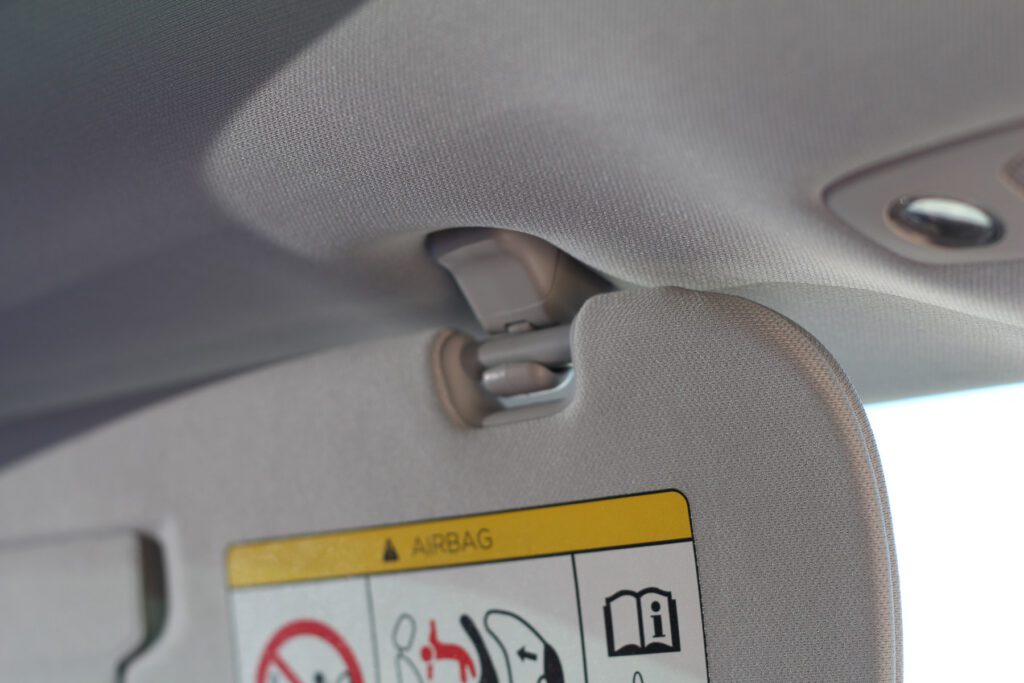

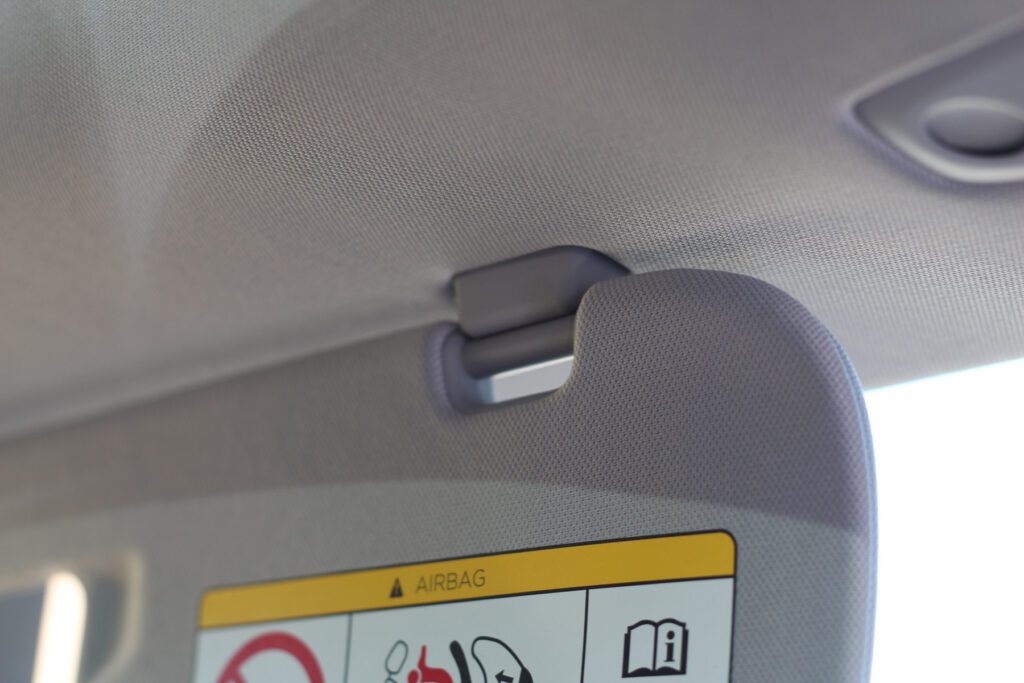

Processor
Located in front of the centre console, below the screen, the processor in the Model 3 has been upgraded from the original Intel Atom to the AMD Ryzen. The performance of this new processor is significantly better, allowing a much snappier launch to applications and games.
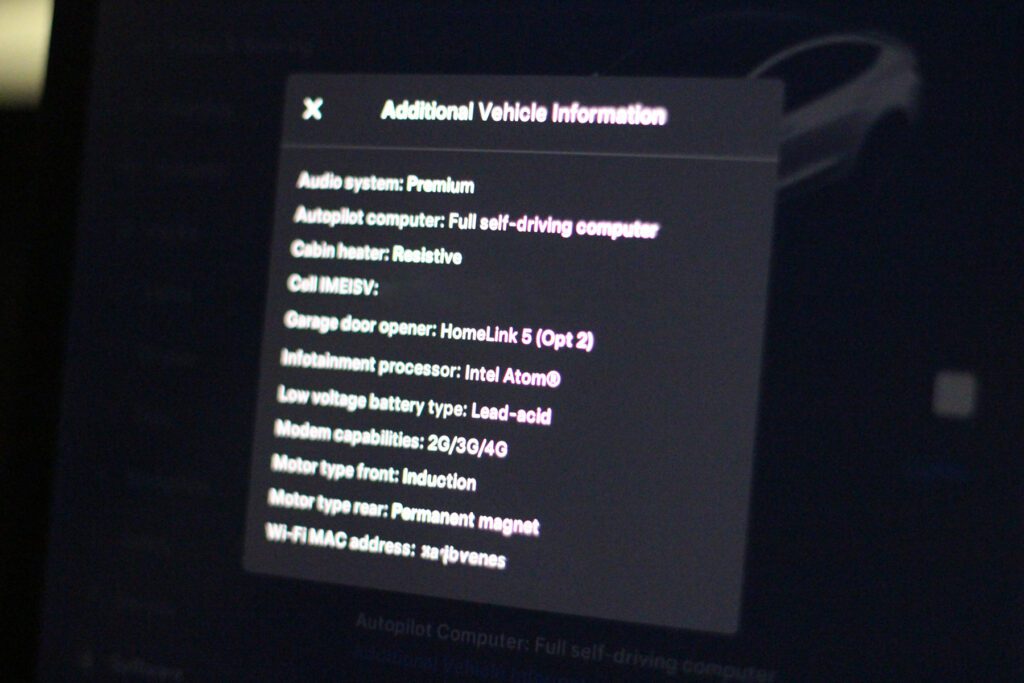

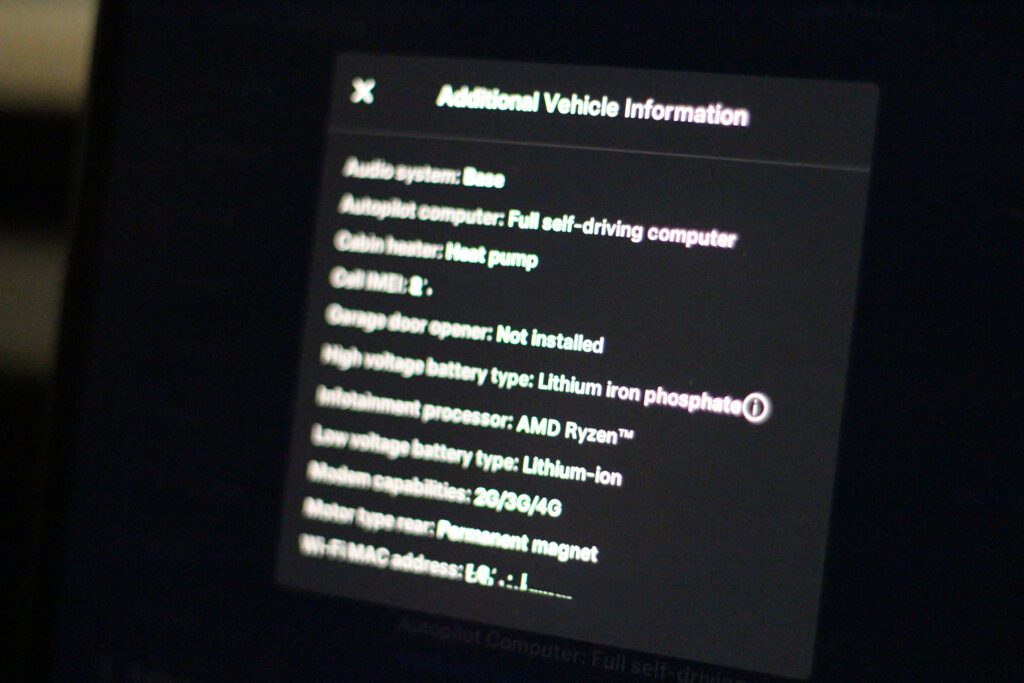

Blind Spot indicator light in-door speaker
To meet some new safety obligations, Tesla added a blind spot indicator system (BLIS) which feels like a tick-the-box exercise, integrating just a single LED light into the front door speaker. Tesla’s safety systems are driven by computer vision and knowing a car is beside you is easy, with a quick glance of the screen.
If you have Enhanced Autopilot or FSD, you can leverage Automatic lane change which will confirm the environment beside you is clear, before initiating a lane change. This is far safer than any LED light, but Tesla did what it needed to keep the regulators happy.
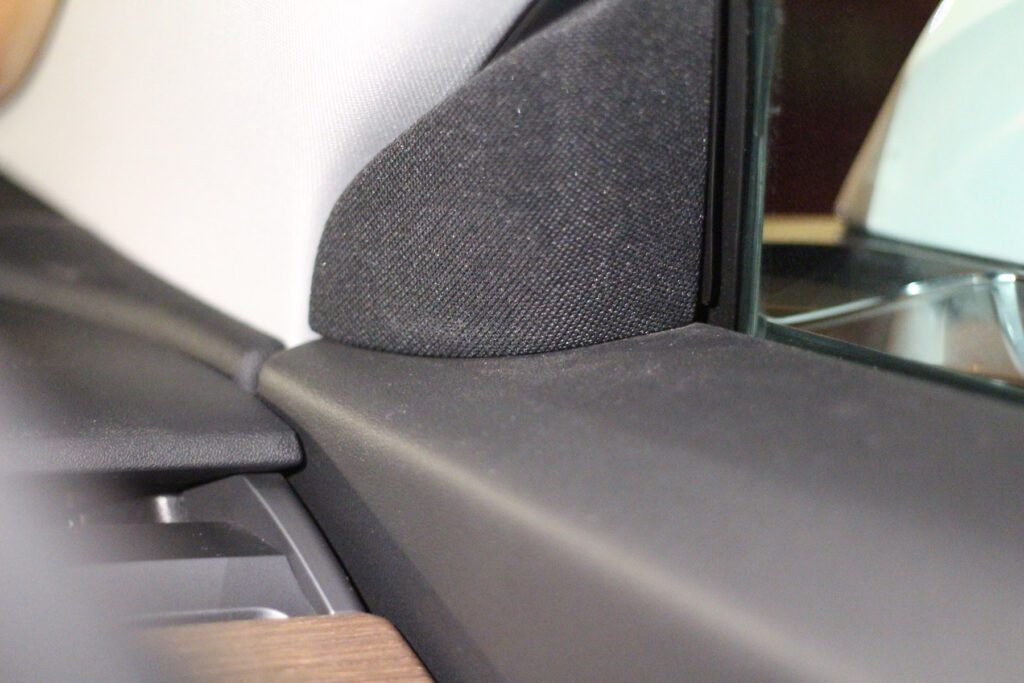

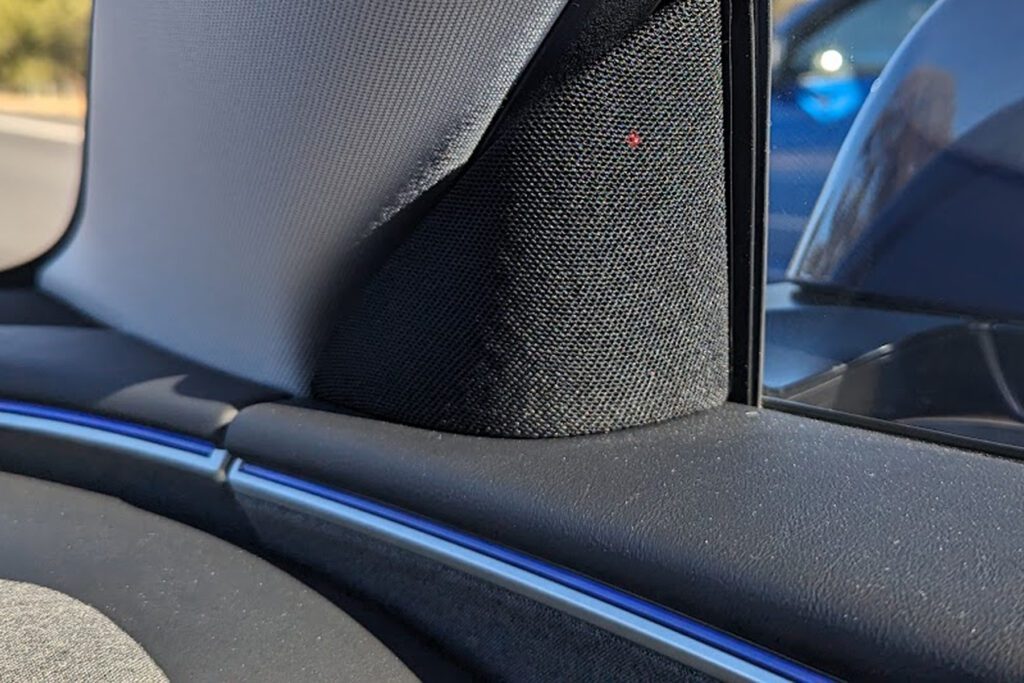

Emergency buttons
We all hope we never need the emergency button, but if you do it’s in the roof. In the refreshed Model 3, we see this button get some company, with the backup shift controls are now positioned in the roof, so if your touchscreen ever fails and you need to shift gears you can.
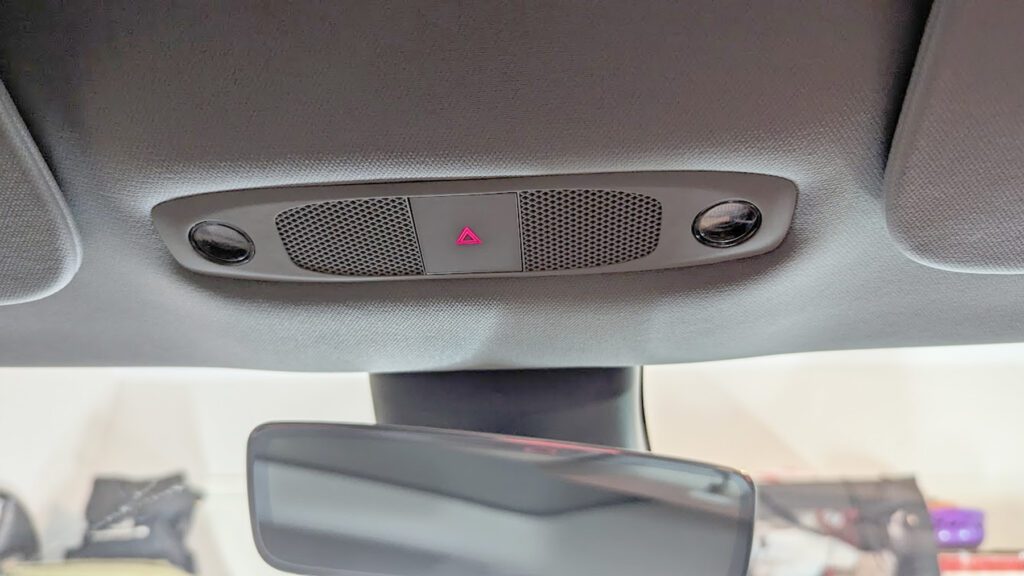

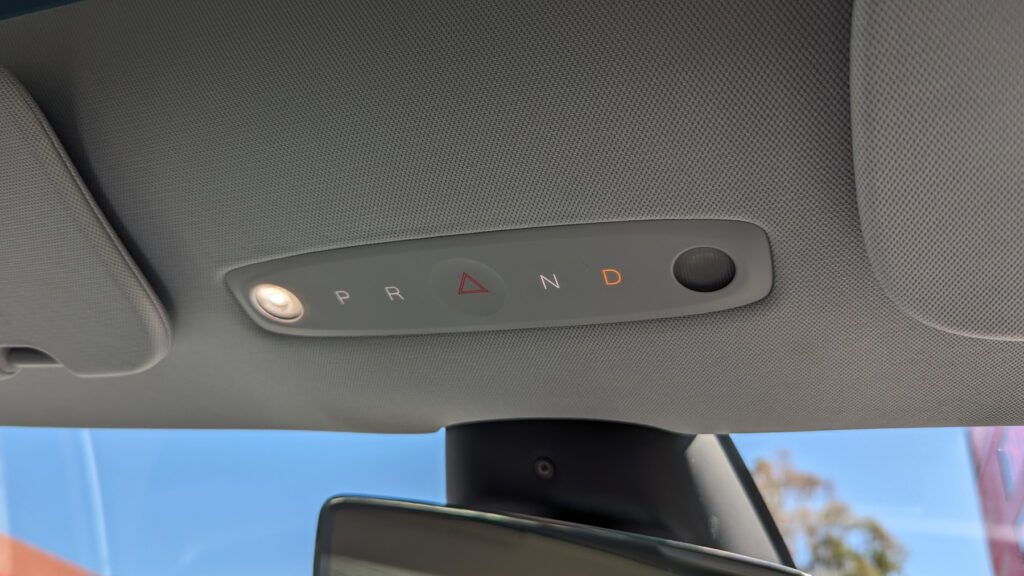

Double-pane glass
The new Model 3 is significantly quieter inside the cabin than the 2019 Model 3, which by the way, is still incredibly quiet compared to ICE vehicles with a combustion engine and exhaust. There are many tricks that Tesla leveraged to reduce the road noise in the car, chiefly led by a change to double-pane glass which does a great job of removing exterior sound and allowing for much easier conversations between the front and rear passengers.
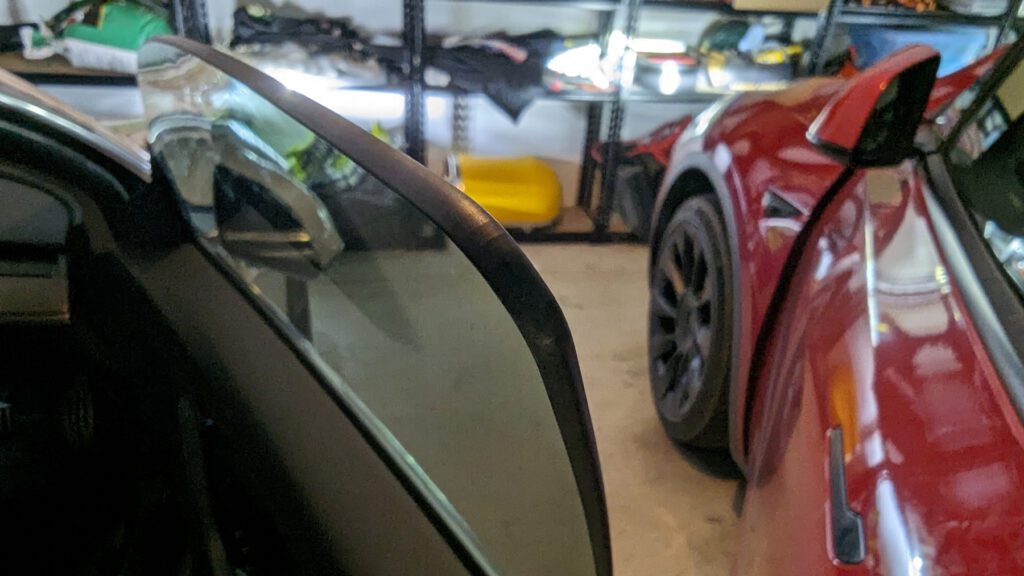

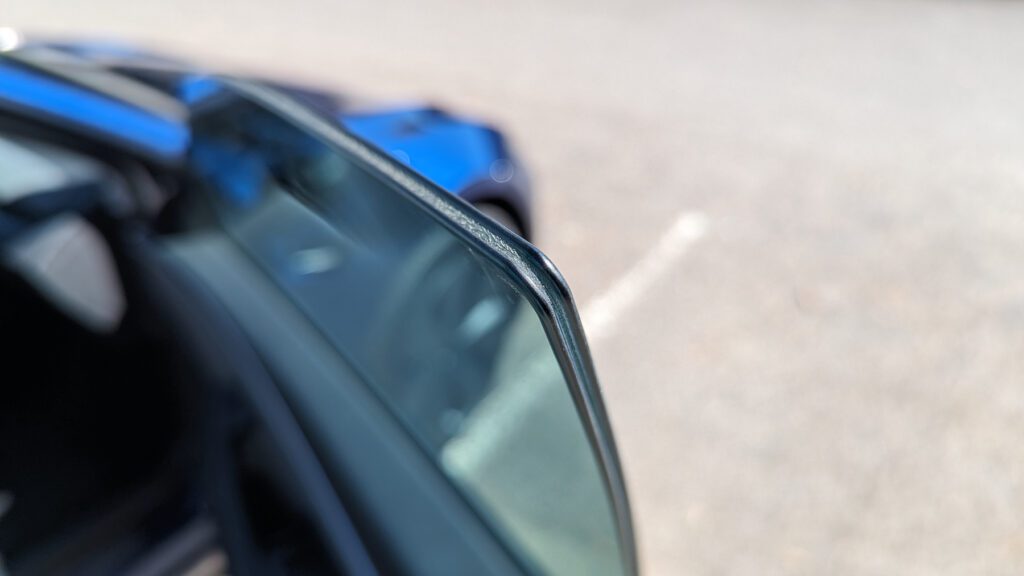

Overall
The amount of changes to the Tesla Model 3 in just 5 years since its release in Australia, is absolutely stunning. While it may feature the same dimensions, virtually everything on top of (and including) the 4 wheels had a review and changes made.
For the most part, these changes are positive, creating a significantly better car than the first release.
Those early adopters shouldn’t feel bad, your car is still amazing and compared to many other vehicles on the road, is still leaps and bounds ahead.
If you notice there’s no mention of performance changes to the battery, motors, suspension, heat pump, brakes or charging, that’s simply because many of these changes are not visible without removing panels, but these certainly got a makeover as well.
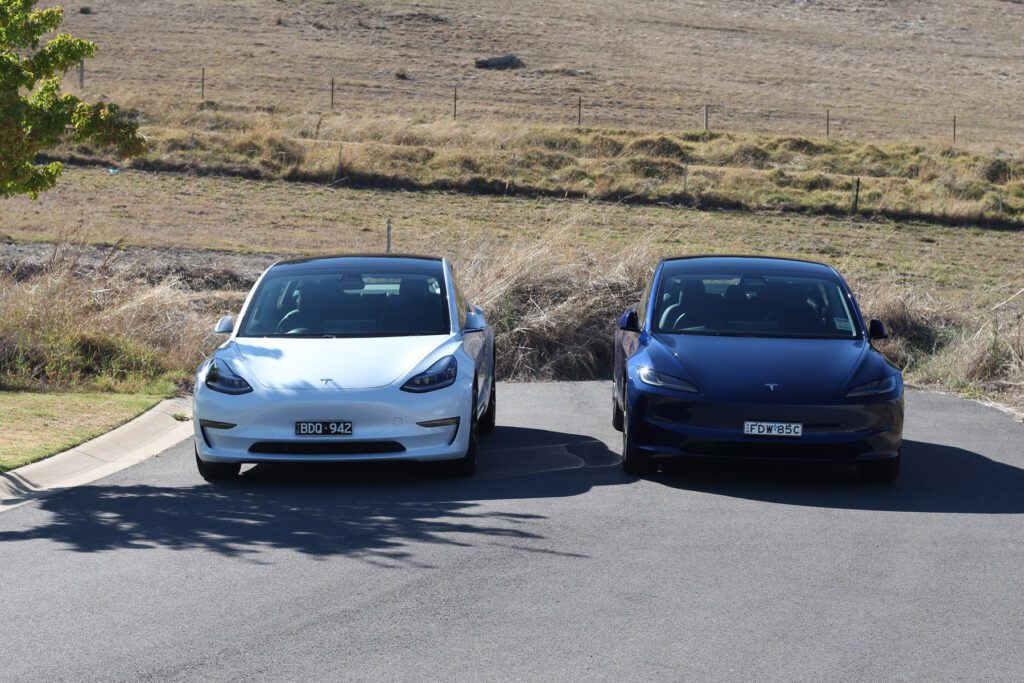

The Tesla Model 3 is a phenomenal car and if you can afford the price of admission, you’re getting amazing value for money.
When the Tesla Model 3 RWD was first launched in Australia, it featured a driveway price of A$73,135 and came with a range rating of 460km of range (NEDC), a 225km/h top speed and a 0-100km/h time of 5.6 seconds.
Fast forward to now and the current Model 3 RWD can be in your driveway for just A$67,421, substantially less money and offers a range of 513km (WLTP), a top speed that’s slightly less (and impacts virtually nobody) or 201km/hr and a 0-100km/h time that’s incrementally slower at 6.1s.
To imagine that all these changes occurred and the calendar is 5 years later, it’s amazing the car costs less than it did originally. Australians are responding to this and in February 2024, the refreshed Tesla Model 3 took the 3rd spot on the new car sales charts in terms of numbers sold during the month. Perhaps even more impressive is that it beat its sibling, the Model Y, which has been more popular as it plays in the larger SUV vehicle segment.
